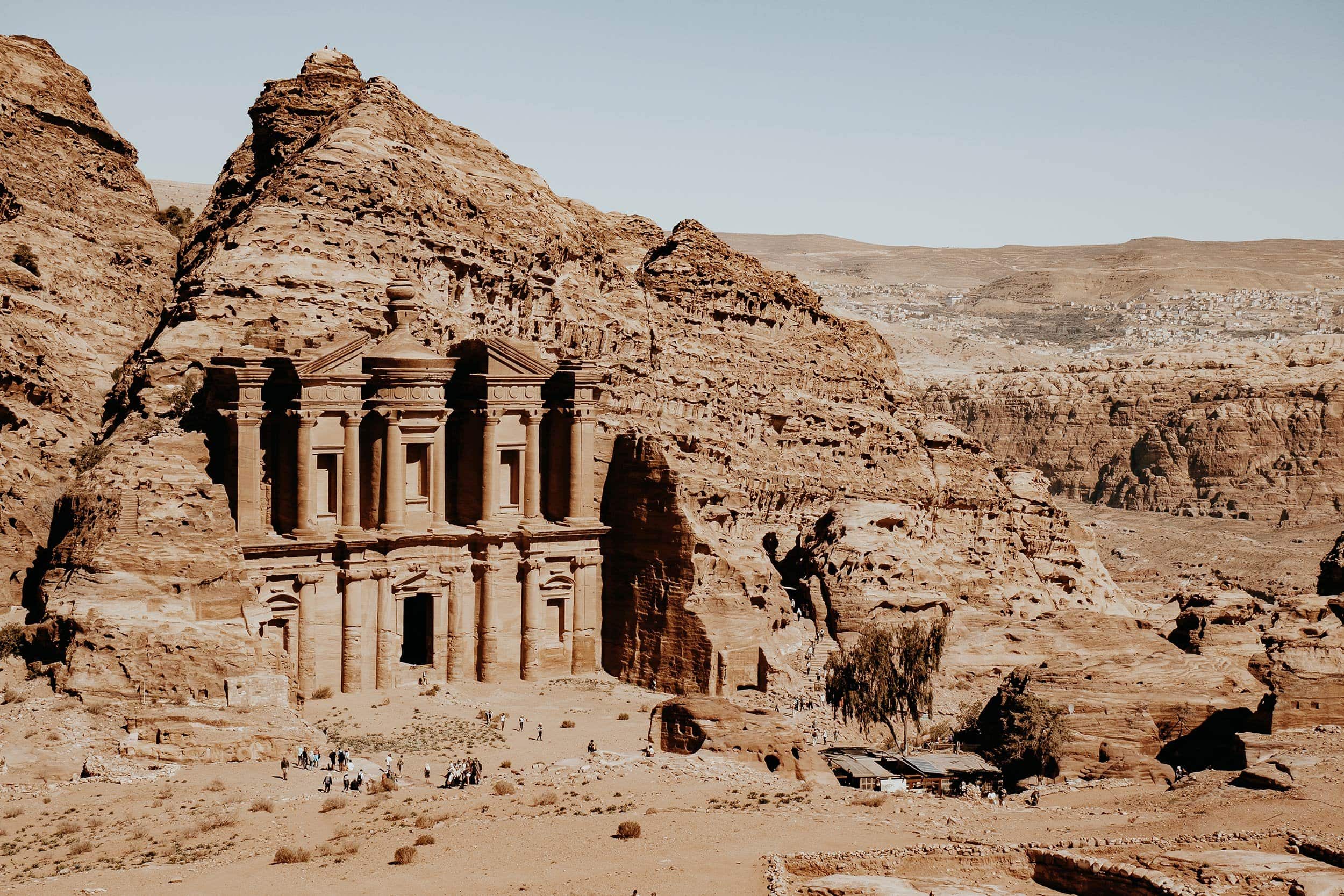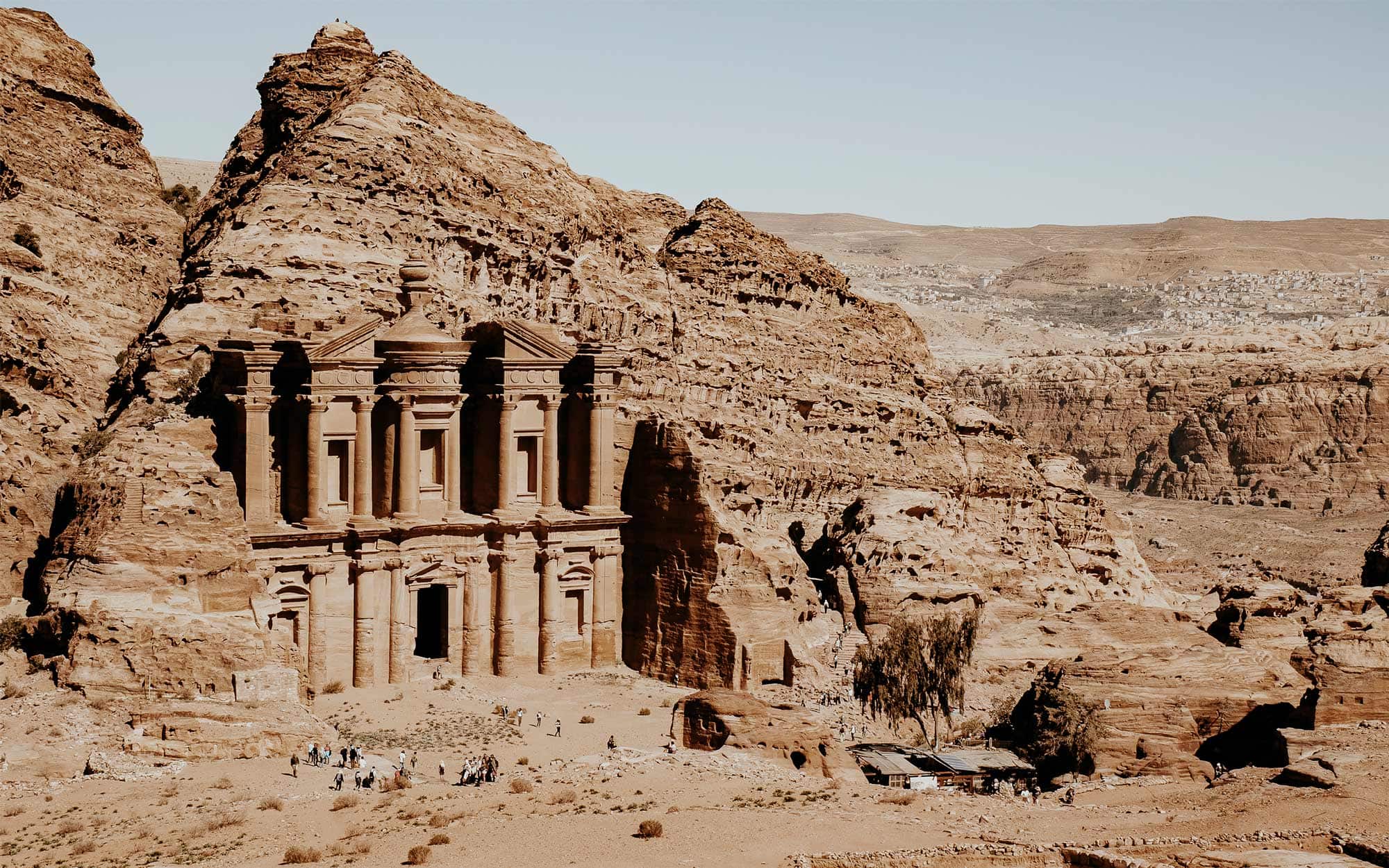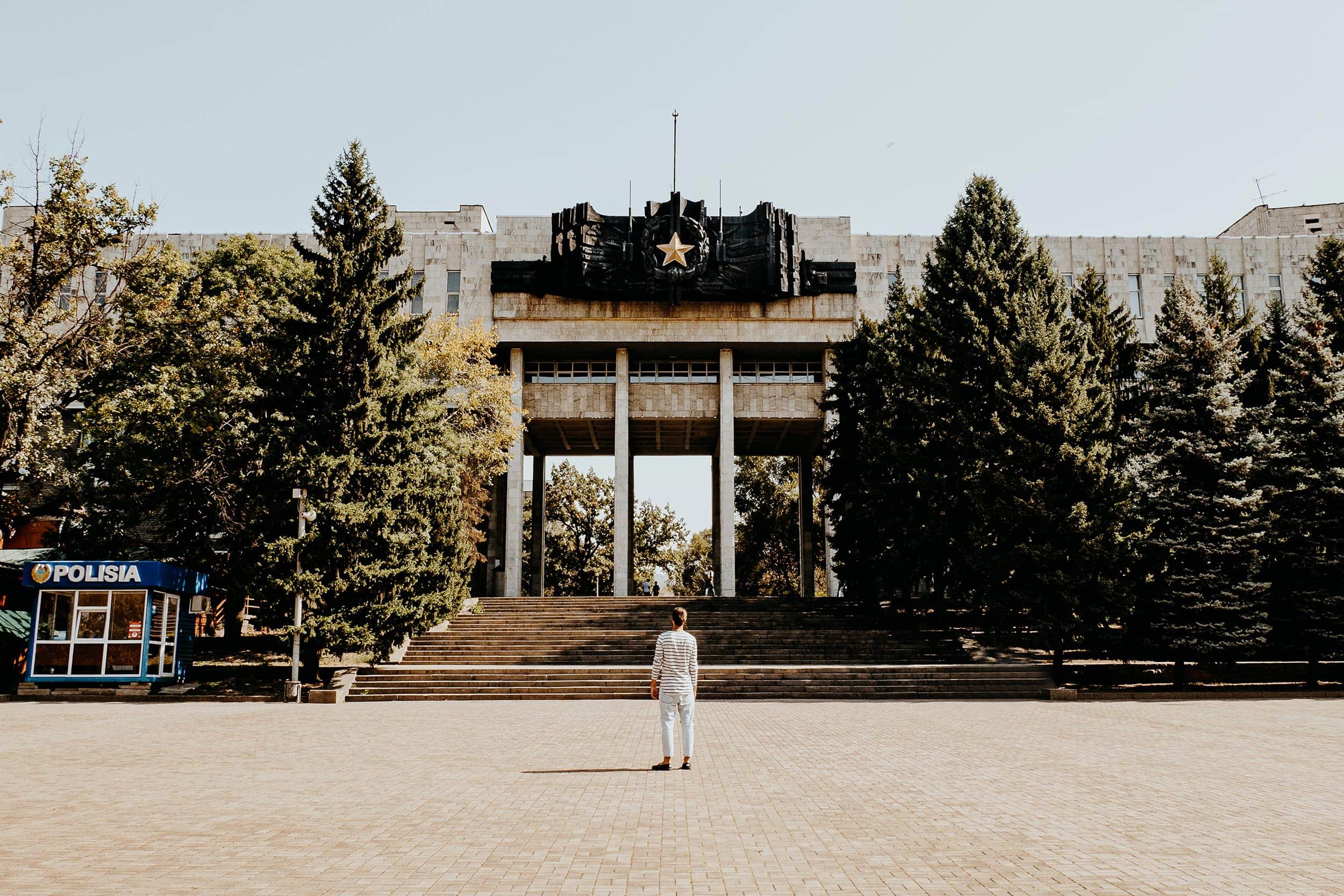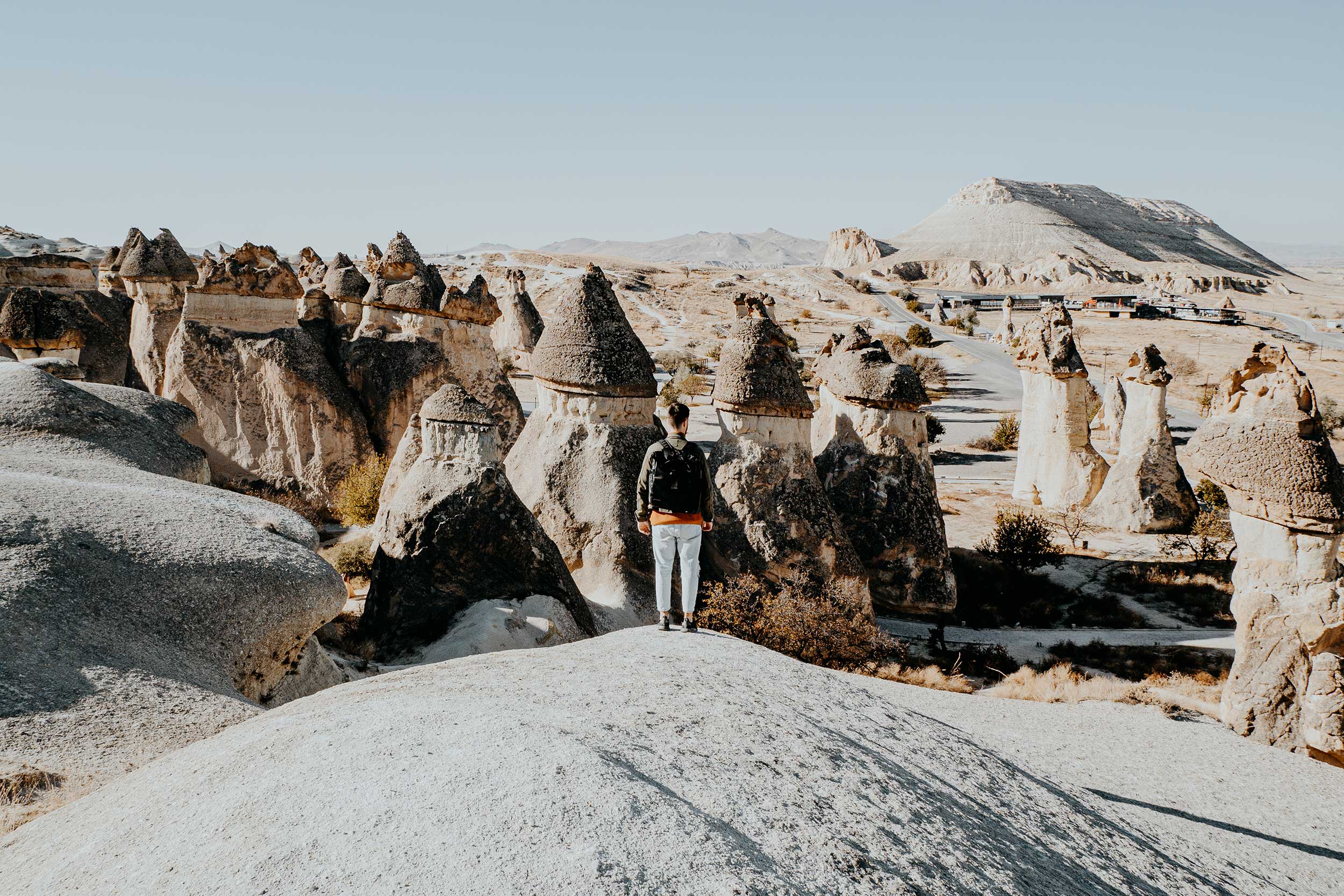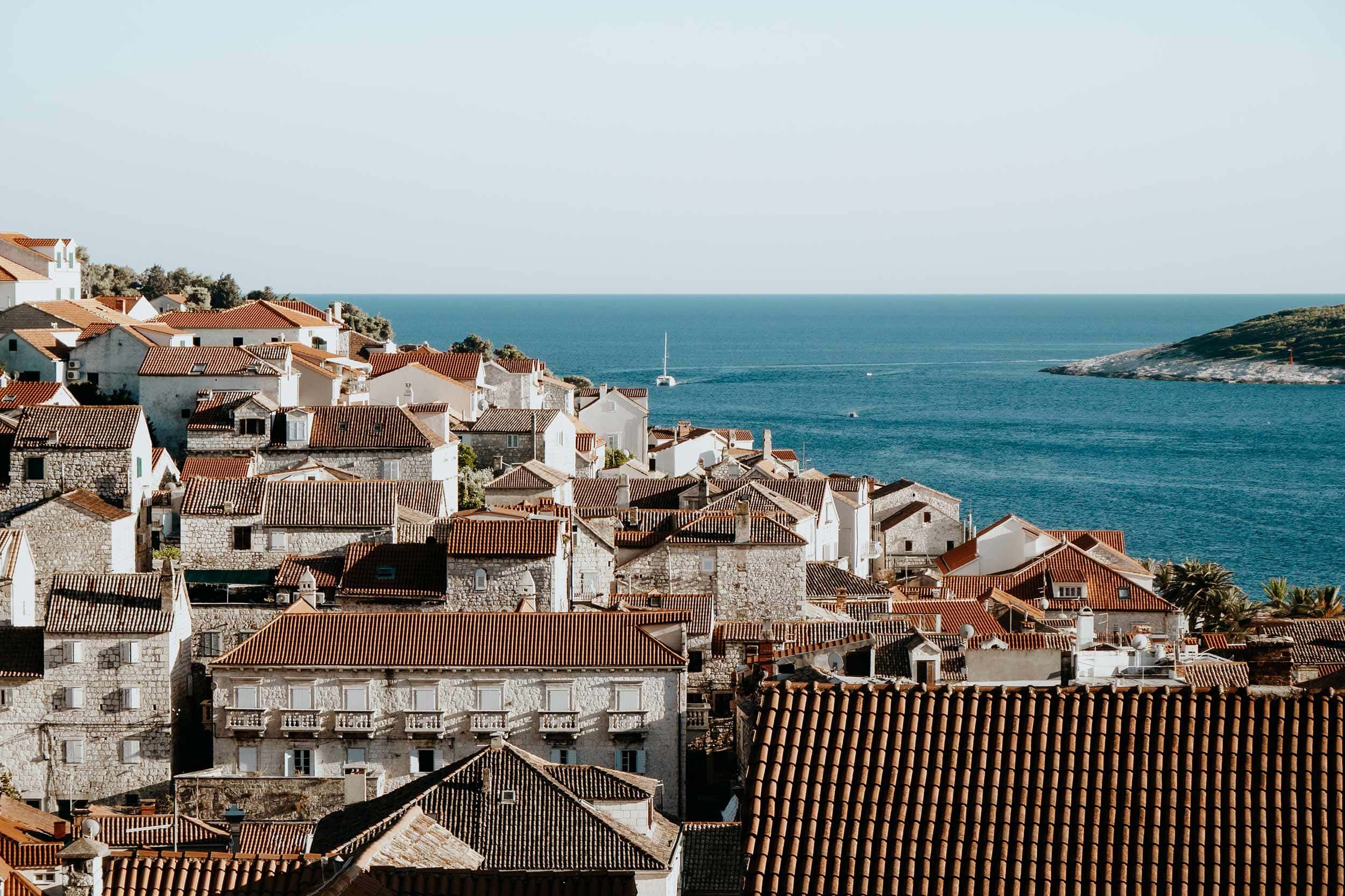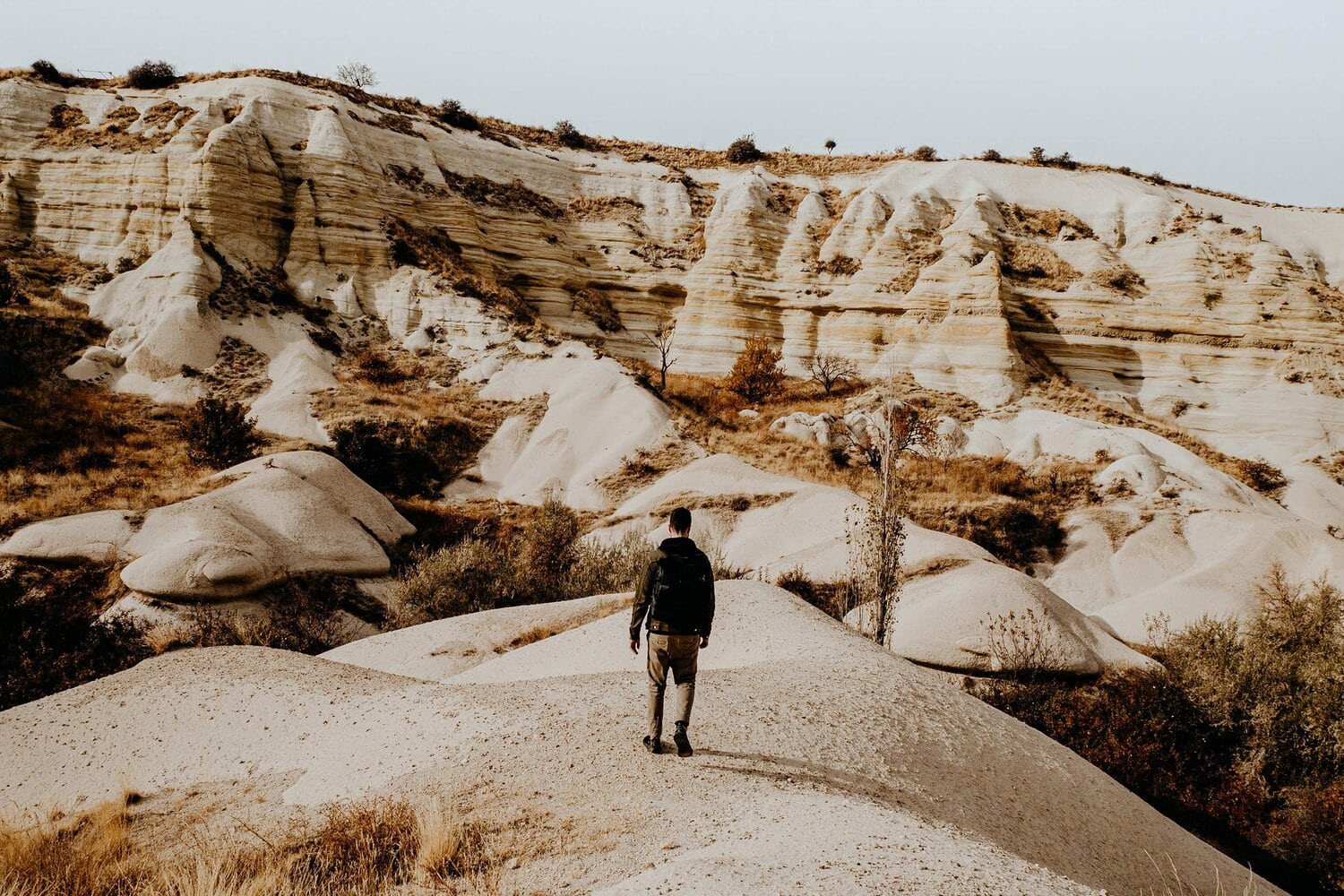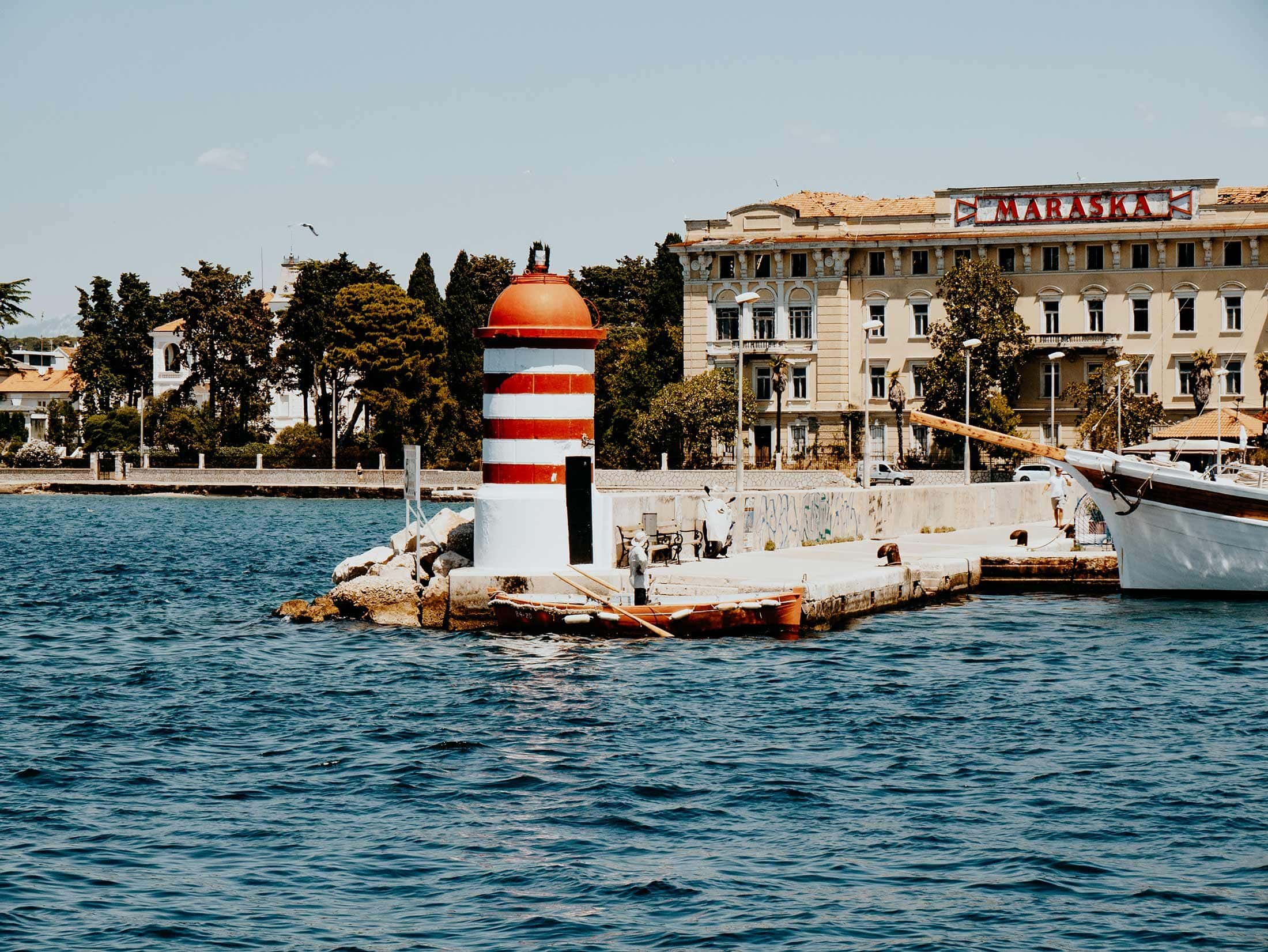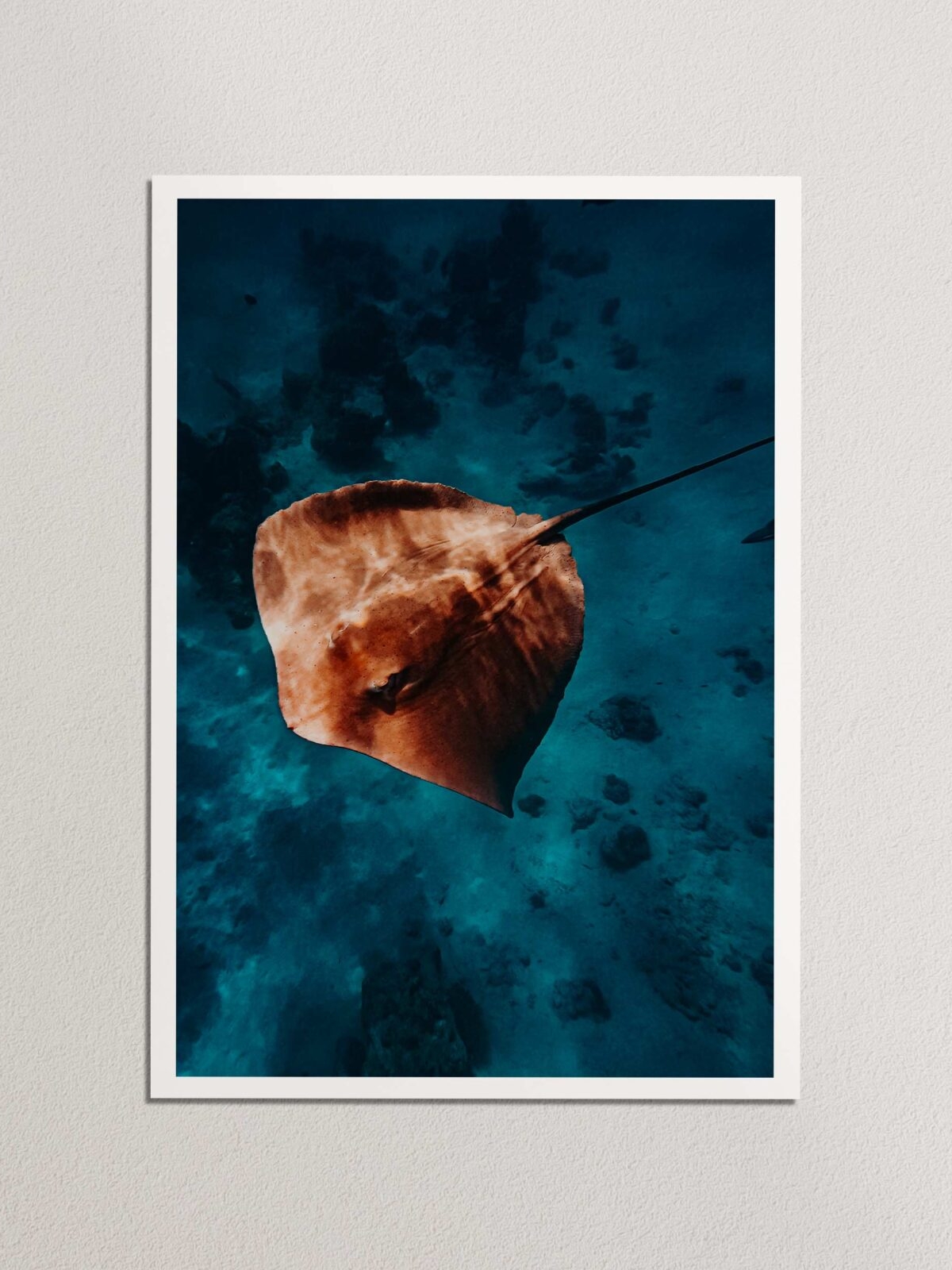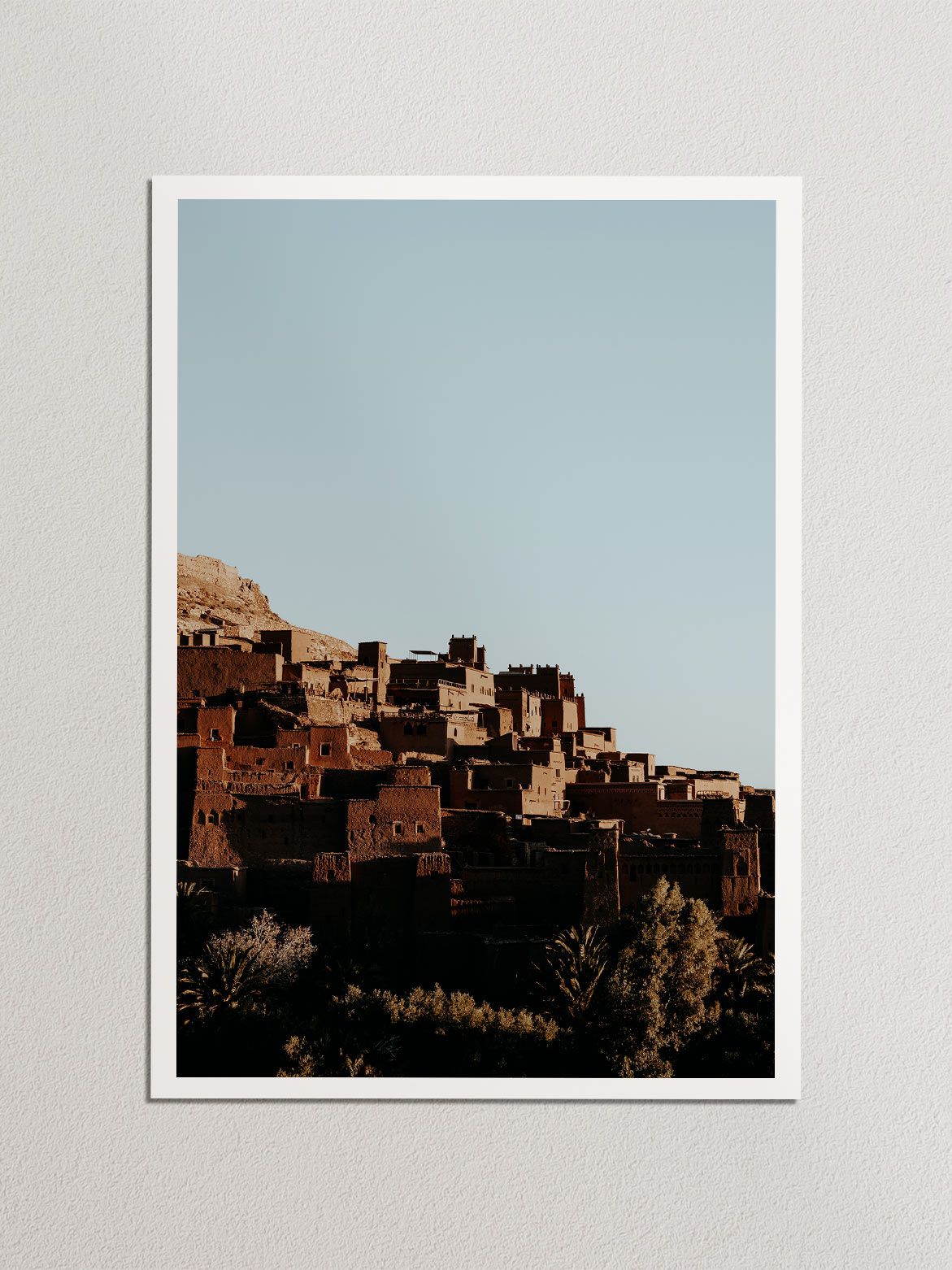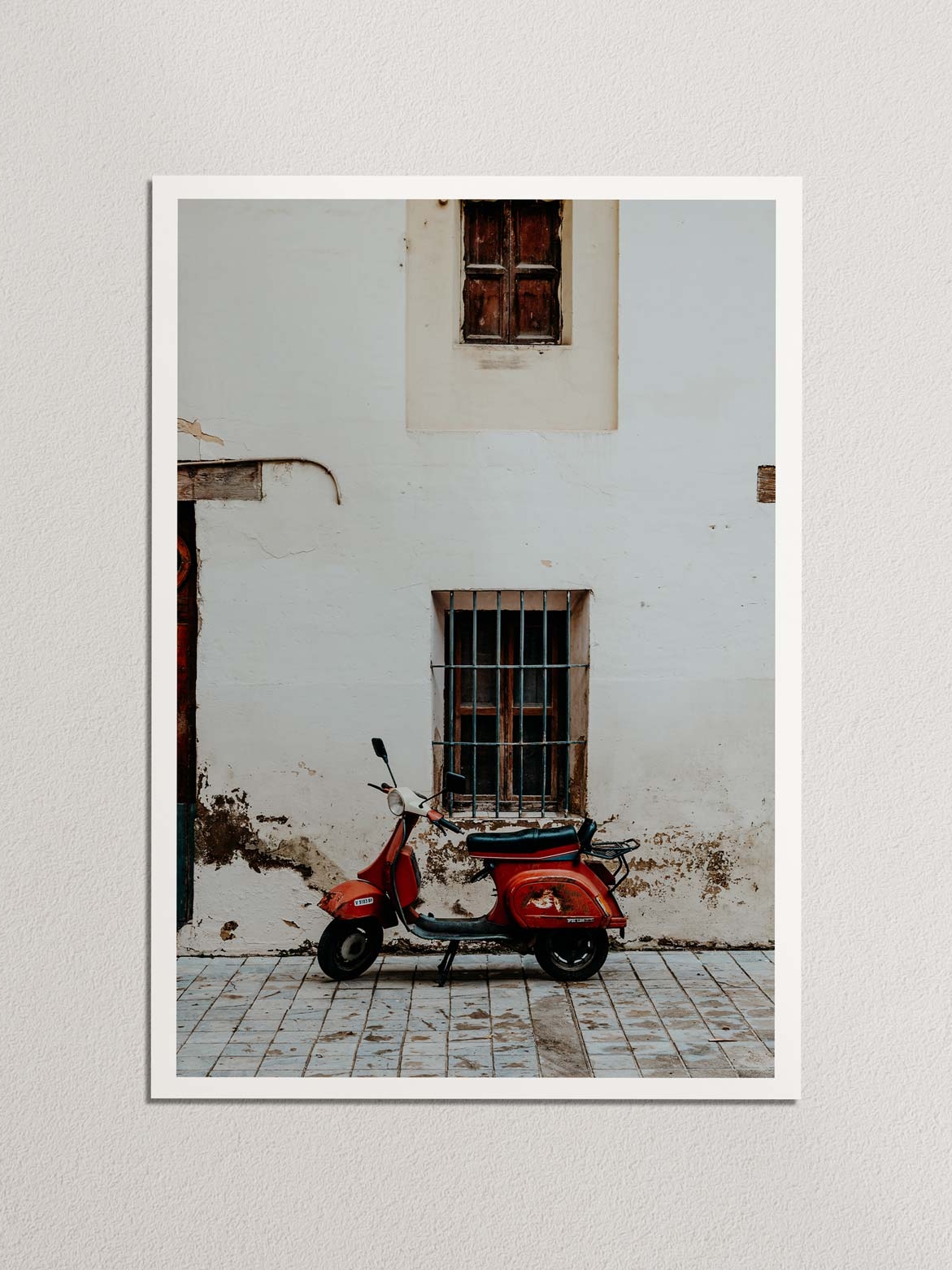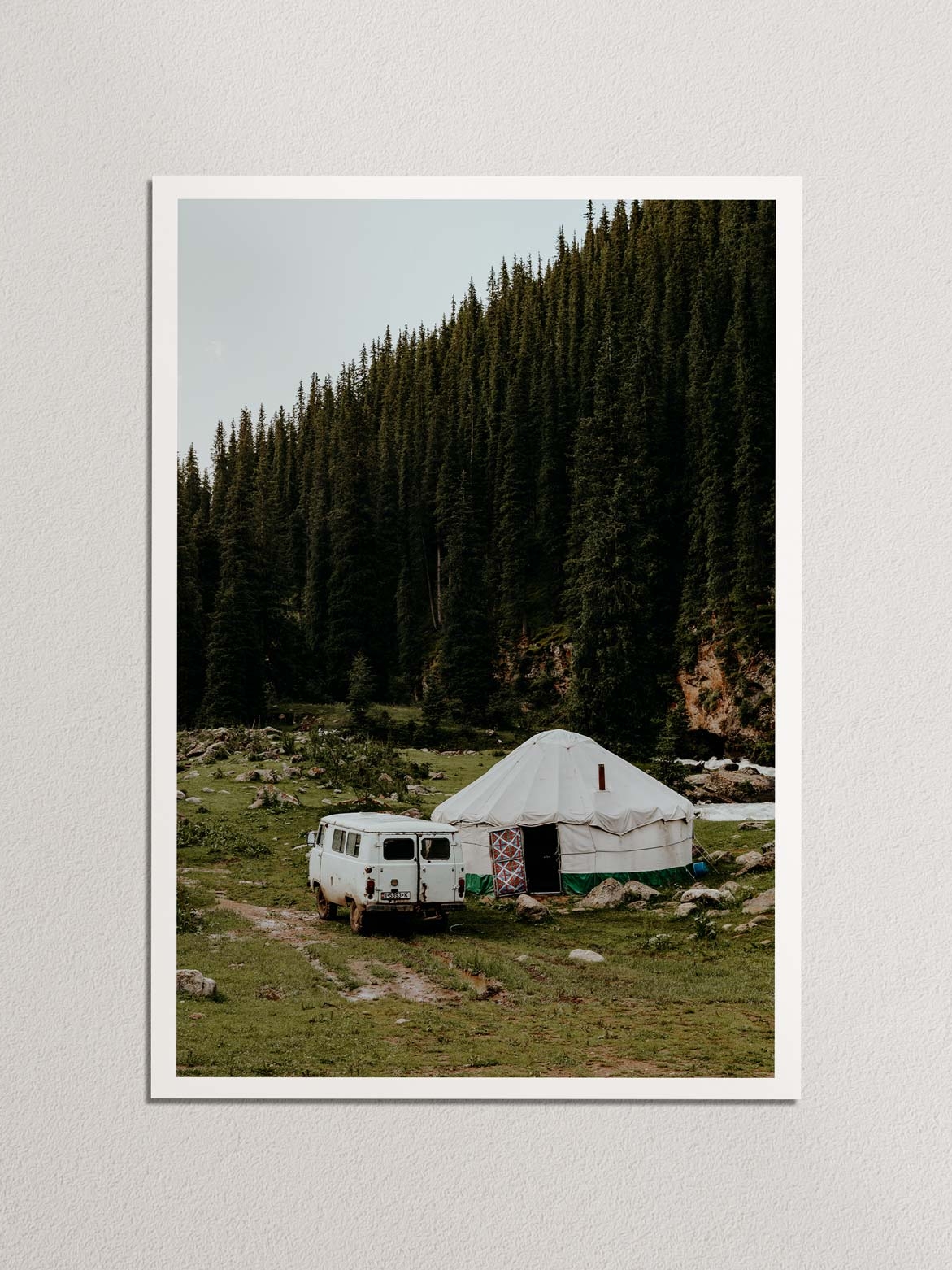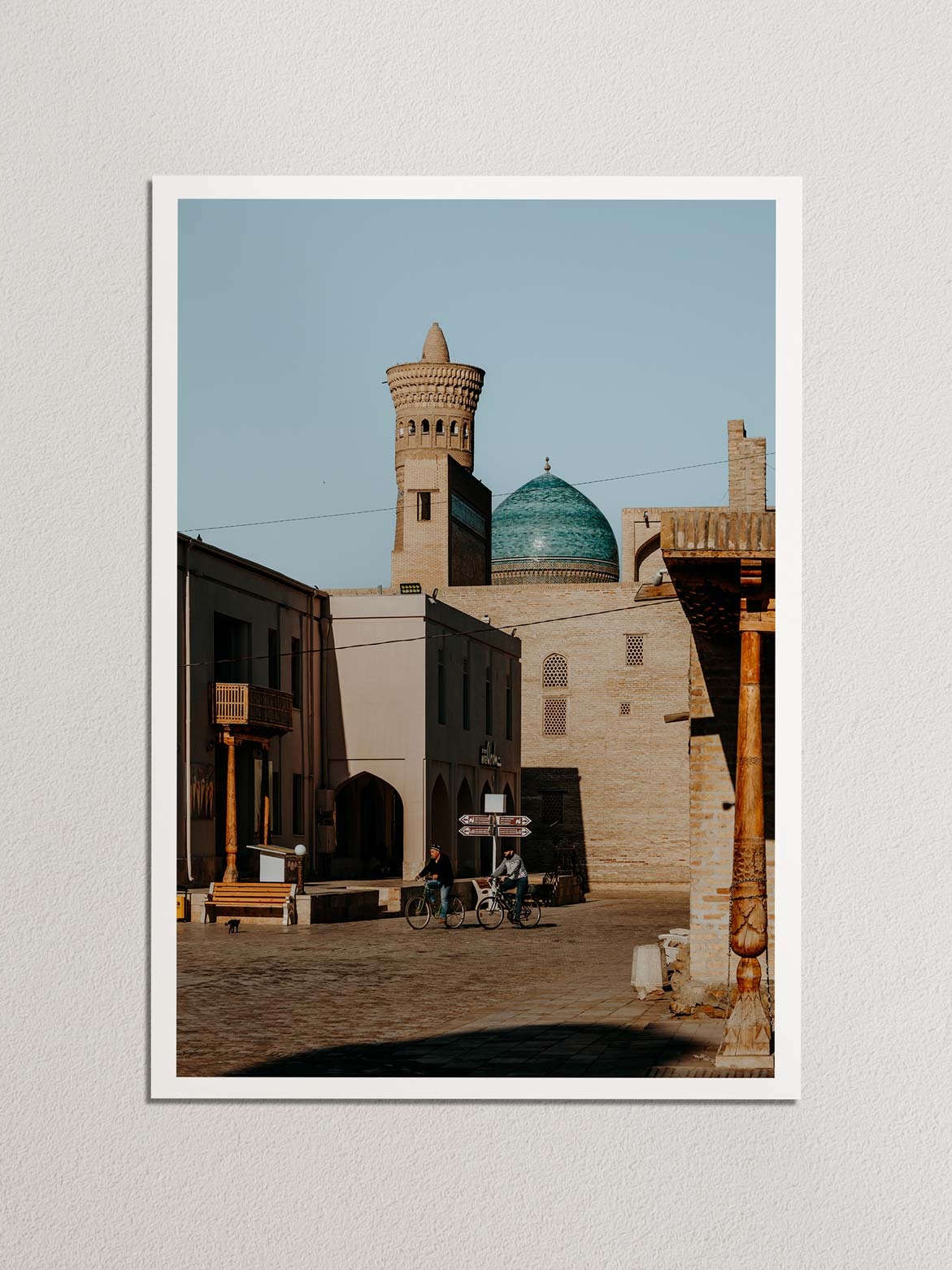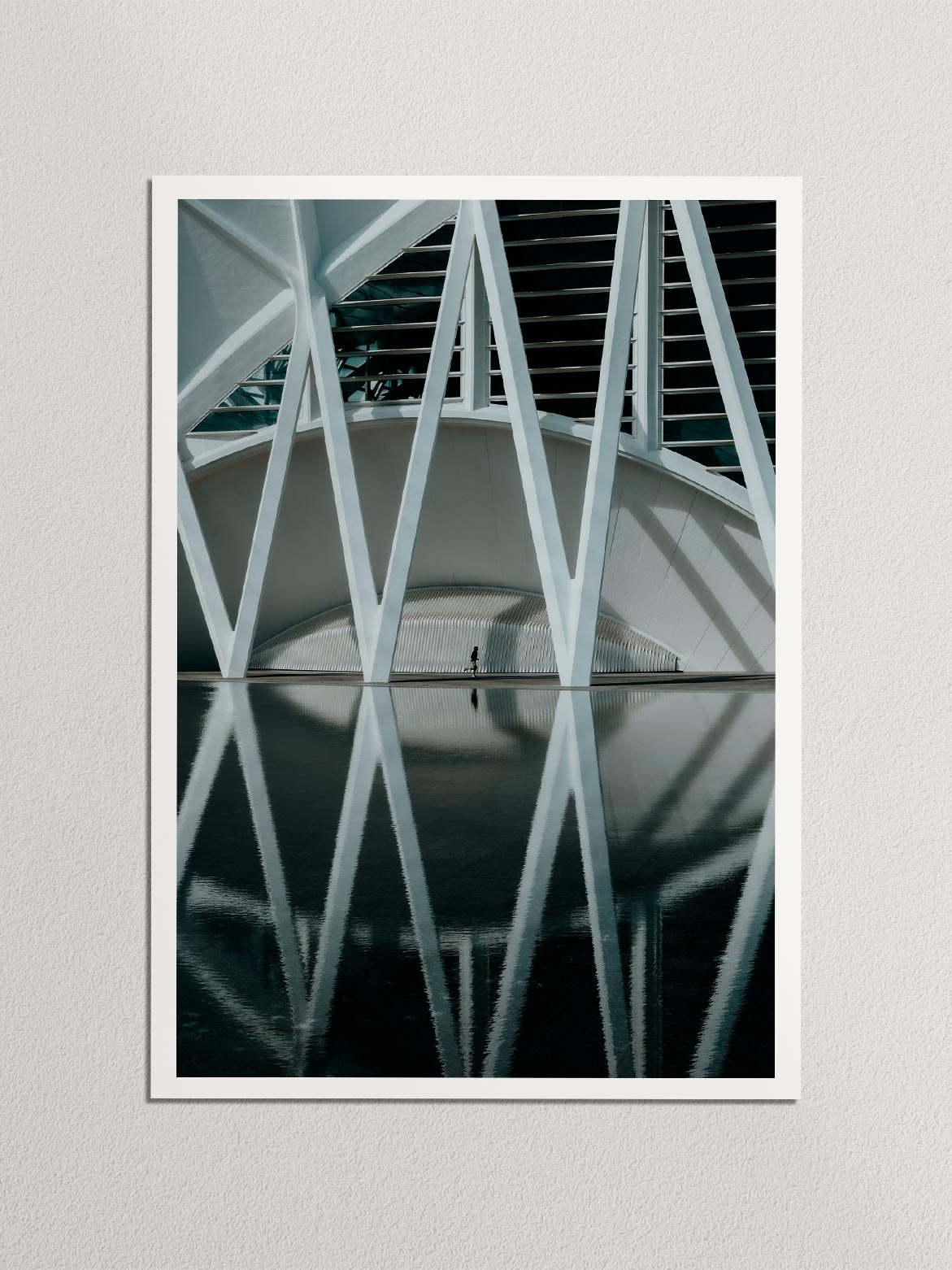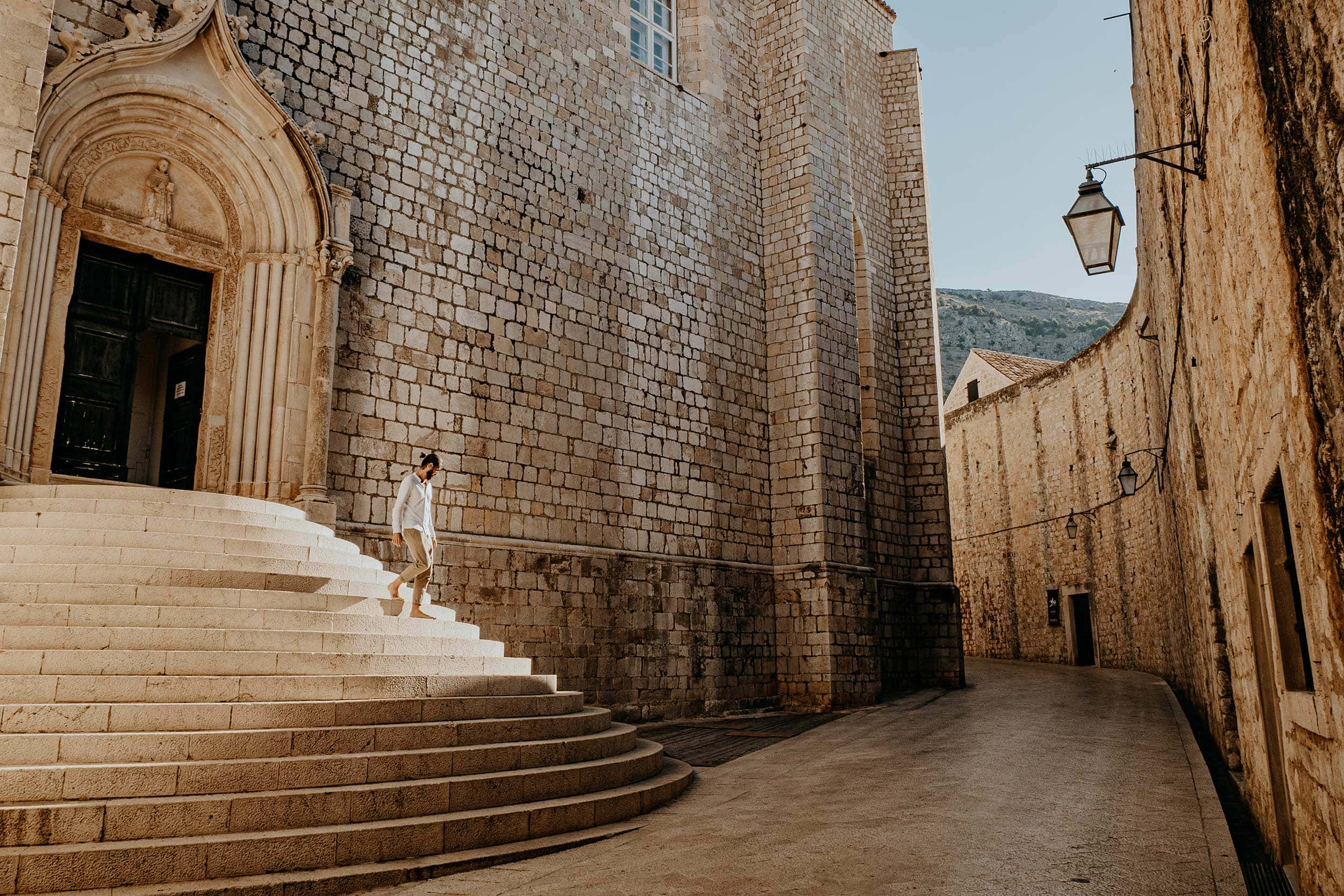My wonderful 10-day Jordan itinerary: the best of Jordan
Jordan was my first-ever trip to this corner of the world, but will certainly not be my last.
Located at the heart of the Middle East, this bit-size paradise has righteously earned its fame, and after my unforgettable road trip here, it is safe to say that Jordan has become one of my all-time favourite destinations.
There’s a myriad of reasons to add Jordan to your bucket list, and I’m not just talking about visiting the ancient city of Petra and the insanely scenic Wadi Rum desert.
Though these highlights are unmissable on any Jordan itinerary indeed, there’s a whole lot more to see and do in this exceptional country.
From the lowest point on earth – the Dead Sea, to the ancient Roman ruins of Jerash, to the amazing diving spots in Aqaba, to the lively streets of Downtown Amman – Jordan is no stranger to both exciting travel experiences and world-class cultural heritage.
This Jordan itinerary is based on my 10-day road trip and talks you through the above highlights, while it also provides all the essential information in terms of accommodation, weather, transportation and more.
Here’s my wonderful Jordan road trip itinerary – enjoy planning your trip!
MY 10-DAY JORDAN ITINERARY | WHAT TO SEE AND DO
WHERE IS JORDAN
Jordan, also known as the Hashemite Kingdom in the Middle East is located on the crossroads of Asia, Africa and Europe and borders with Israel, Iraq, Saudi Arabia and Syria, while also sharing maritime borders with Egypt.
With its compact size, and many interesting cultural and natural highlights, Jordan has rapidly become one of the most popular road trip destinations in the world.
VISA FOR JORDAN | THE JORDAN PASS
Though it is relatively easy to obtain a tourist visa upon your arrival in Jordan, I believe the better deal is to acquire a Jordan Pass before flying into the country.
Not only does the Jordan Pass saves you time at the airport, but it also grants free entrance to 40 of the country’s most famous highlights; Petra, Wadi Rum, Jerash and the Amman Citadel just to name a few.
One thing that is worth mentioning, is the fact that travellers should spend a minimum of 4 days in Jordan to waive the visa fees. Also, the Jordan Pass is equal to a single entry visa, allowing visitors a maximum of 30 days in the country.
I applied for a Jordan Pass in advance, and had an easy time exploring the country – plus the option to skip the line at most of the tourist highlights – winner!
For more information, availability, and applying, make sure you visit the iVisa website.
USEFUL GUIDES ON TRAVELLING IN JORDAN
In my opinion, a written guide is the perfect tool to fall back on, and I seriously advise you to look into one too before travelling to Jordan.
In terms of essential travel information and tips, this Lonely Planet Jordan guide helped me on several occasions during my road trip. Search your guide here.
MY 10-DAY JORDAN ITINERARY | DAILY OVERVIEW
DAY 1 | ARRIVAL IN AQABA
The coastal town of Aqaba was the perfect place to start my adventurous road trip itinerary through Jordan.
Not only is Aqaba home to the excellent King Hussein International Airport, but it is also a welcoming place to get your bearings. For that reason, I’d advise spending at least one day here to recover from your flight, before venturing deeper into Jordan’s immeasurable natural beauty.
Though I haven’t seen much of Aqaba due to late arrival, I’ve read plentiful articles that say that this coastal town is actually a great place for those into sunbathing, history and top-notch diving.
Perched next to the Red Sea, Aqaba is home to some of the world’s best scuba diving sites, with over 20 diving spots dotted along the coastline, providing a perfect setting for any level of diving.
That said, if you have more days to follow my itinerary, I’d advise taking some extra time to appreciate Aqaba’s lively underwater world and the quaint beaches adjacent – unfortunately, my time here was limited.
AQABA | THE ESSENTIALS
Where | Aqaba
Where to stay in Aqaba | DoubleTree by Hilton provides comfortable rooms at an excellent rate, perfect for those keen to unwind after a long flight. Additionally, I would recommend Jordan Seasons Hotel.
Alternatively, search for accommodation in Aqaba on Booking.com.
DAY 2 – 3 | VENTURE DEEP INTO WADI RUM
The first highlight on this Jordan road trip itinerary and by far my favourite destination in the country is the otherworldly Wadi Rum desert.
The UNESCO World Heritage-listed Wadi Rum is an utterly magnificent landscape that is home to rippled sand dunes, towering rock formations, and burnt-orange desert terrain that stretches far in all directions.
With more than 720 square kilometres, Wadi Rum is actually known as one of the largest deserts in the world, and for that reason, best explored by a 4×4 jeep.
If you’re keen to uncover Wadi Rum as part of a full-day jeep tour, make sure you’ll be driven around by an authentic Bedouin guide. By doing so, you’ll be taken along all the nitty-gritty hotspots.
After your jeep tour, it is time to pick a sand dune, sit down and watch a breathtaking sunset light up the otherworldly dunes and rock formations of Wadi Rum – this truly is a spectacle to behold.
On top of that, there’s a bunch of other great things to do within Wadi Rum, such as uncovering the dunes by foot or beholding one of the desert’s famous movie scenes, including those of The Martian and Aladdin.
But to me, the absolute highlight on any visit to Wadi Rum, is spending the night under the starry Jordanian sky in a luxurious martian dome or one of the many traditional Bedouin camps.
+ Related | Check out my Wadi Rum guide for inspiration, travel advice and all the essentials.
WADI RUM | THE ESSENTIALS
Where | Wadi Rum
Where to stay in Wadi Rum | I stayed at Hasan Zawaideh Camp and had an excellent once in a lifetime experience. Make sure you check the link to see how awesome sleeping in a martian dome actually is.
Alternatively, search for accommodation in Wadi Rum on Booking.com.
Driving time | 1 – 2 hours
Distance | 74 kilometres from Aqaba to Wadi Rum
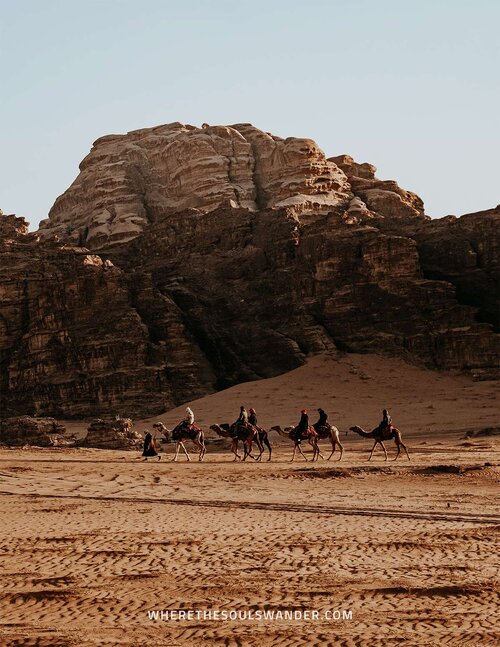
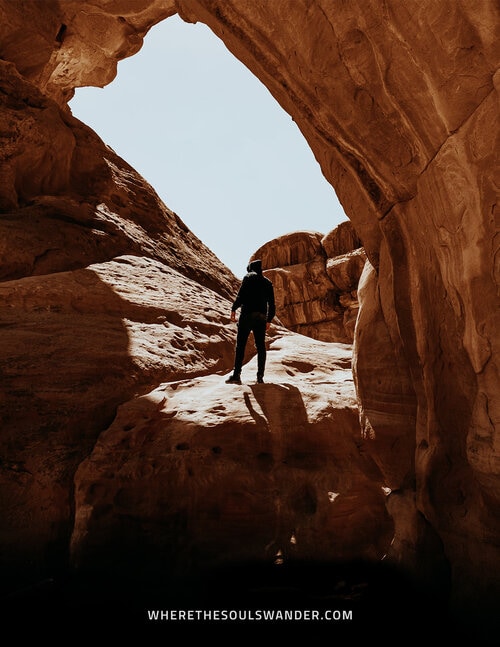
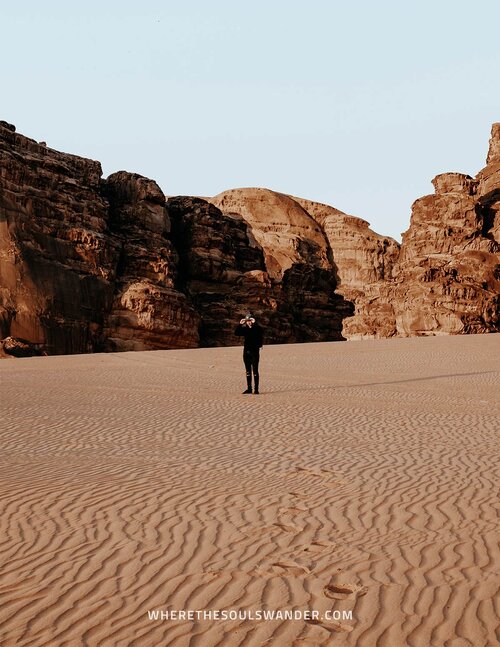
DAY 4 – 5 | THE ANCIENT NABATEAN CITY OF PETRA
I’m pretty sure that the ancient Nabatean city of Petra is one of the key reasons why you’ve planned an adventurous road trip through Jordan, and it is easy to understand why.
Hidden between the rough mountains that encircle Wadi Musa lies Petra, an exceptional ancient city that is carved directly out of the sandstone rose-red rock formations that the area holds.
After a long period of being completely hidden for the western world, the mesmerizing archaeological site was eventually rediscovered by Swiss traveller Johann Ludwig Burckhardt in 1812. For the above reason, Petra is often referred to as ‘The Lost City’.
At present, the former capital of the Nabataean empire is acknowledged as one of the new wonders of the world, and only a few words can describe how it feels when you first encounter the exquisite facade of Petra’s famous Treasury.
But it is not just the Treasury that put Petra on the map of travellers and adventure seekers alike.
Other incredible sights that are equally as impressive include the Monastery, the Royal Tombs, the Al Kubtha Trail, the Siq and the High Place of Sacrifice just to name a few.
To make the most out of your time in Petra, I’d recommend spending at least two days here to take it all in. Also, I highly advise visiting early in the morning (Petra opens at 06:00) to beat the crowds.
+ Related | Check out my Petra guide for inspiration, travel advice and all the essentials.
PETRA | THE ESSENTIALS
Where | Petra, Wadi Musa
Where to stay in Wadi Musa | I stayed at Town Season Hotel, a great budget-friendly hotel only a stone throws away from the Petra visitor centre. Prices and availability here.
Alternatively, search for accommodation in Petra on Booking.com.
How to get around Petra | Petra is best explored on foot, however, be prepared to walk a bunch. Also, please be aware to travel in a responsible and ethical manner, meaning you consider skipping transport by horse or donkey.
Driving time | 2 – 2,5 hours
Distance | 114 kilometres from Wadi Rum to Wadi Musa

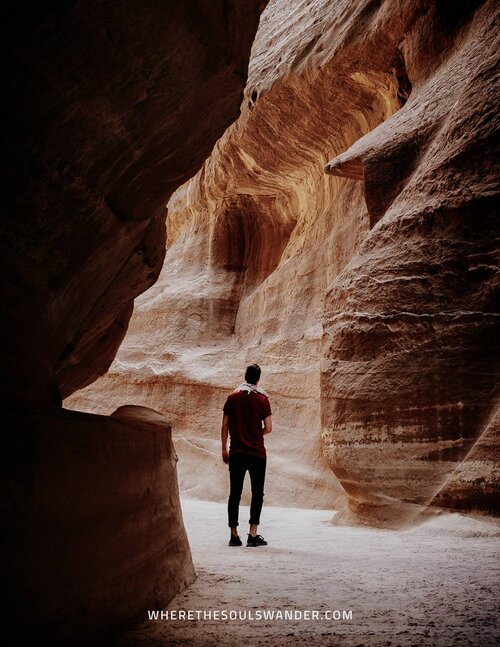

DAY 6 | UNWIND AT THE ICONIC DEAD SEA
Next up is the iconic Dead Sea, one of the most impressive natural phenomena in the country, and in my opinion an unmissable destination on any Jordan itinerary.
Unlike its name, the Dead Sea is actually more of a lake that is known for its incredibly high salinity, containing around 10 times more salt than any given ocean on earth.
As a result, it is impossible for organisms to inhabit the sea, hence its name ‘The Dead Sea’.
Also, the area is deemed to be the lowest point on earth, as it lies 400 metres below sea level.
In terms of location, the Dead Sea is perched between Jordan and Israel, at around 3,5 hours away from Wadi Musa, which is quite a drive. The good news though, it’s a damn scenic journey!
If you’re into photography, make sure you make a stop left of the Wadi Mujib Adventure Center, where you’ll find some pretty neat photography options, as well as some of the best salt formations.
Upon arrival in your hotel, I’d recommend heading straight to the beach for an unforgettable experience, namely swimming in the Dead Sea, or better said, floating in the Dead Sea.
Besides this quirky happening, there’s not much else going on around the Dead Sea, and therefore I recommend making your time here all about relaxing and sunbathing.
+ Read more | Check out my guide to the Dead Sea for inspiration, travel advice and the essentials.
THE DEAD SEA | THE ESSENTIALS
Where | The Dead Sea
Where to stay near the Dead Sea | I stayed at Ramada Resort Dead Sea, a comfortable option located directly next to the Dead Sea. Prices and availability here.
Alternatively, search for accommodation near the Dead Sea on Booking.com.
Driving time | 3 – 3,5 hours
Distance | 205 kilometres from Wadi Musa to the Dead Sea
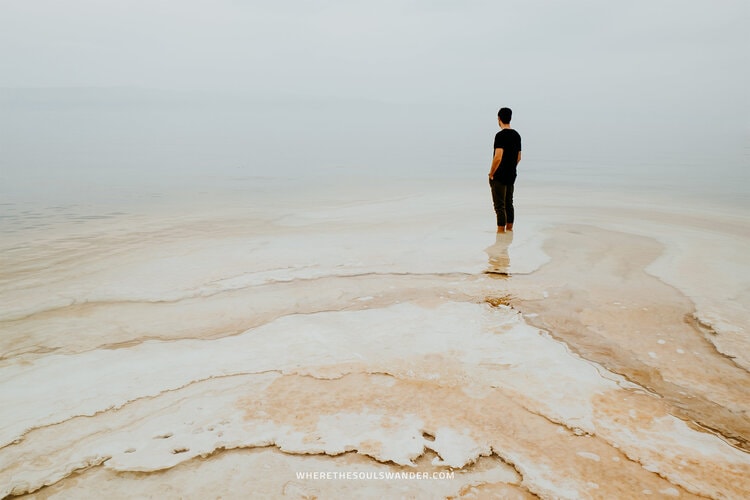
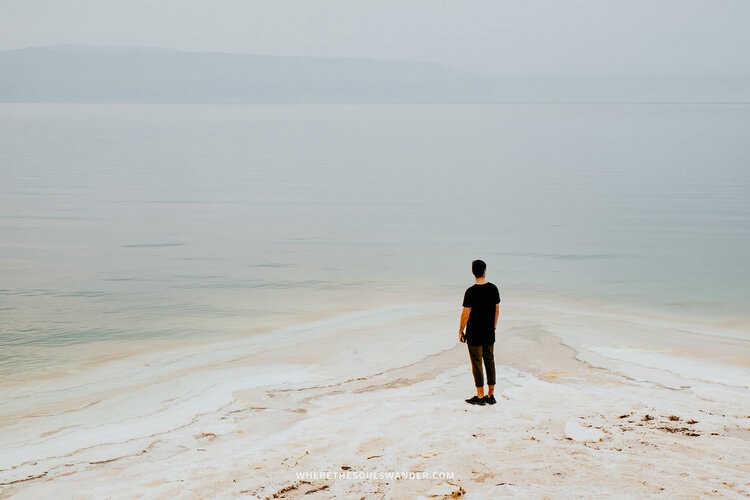
DAY 7 – 9 | AMMAN, JORDAN’S BUSTLING CAPITAL CITY
After relaxing at the Dead Sea, it is time to move further north to Amman, Jordan’s lively capital.
Although Amman is significantly more chaotic than other destinations on this itinerary, I believe it’s a city of its own accord, with many interesting things to see, do and of course, taste.
I’ve personally spent two days here, one while staying at the phenomenal W Amman Hotel (this place is unreal, and so is the food), and one to uncover the many highlights that this energetic city has to offer. A brilliant combination that worked out perfectly fine for me.
All in all, Amman is definitely worthy of your visit, and given it is pretty compact in size and easy to navigate, the city is in my opinion a great introduction for first-time travellers to the Middle East.
AMMAN | MUST-SEE ATTRACTIONS
The Amman Citadel | Situated high atop of the Jabal Al Qala’a hill is the Amman Citadel, an area rich in history that has been under the rule of many great civilizations, including the Romans, Byzantines, Persians, and Greeks. If you have time to visit only one place while in Amman, make sure it’s the city’s time-worn citadel.
King Abdullah I Mosque | Though it is located slightly outside the city centre, the ornate King Abdullah I Mosque is an absolute must-see in Amman. Recognized by its vivid blue dome, the mosque is truly mesmerizing and can house up to 7.000 worshippers at a time. It is possible for non-Muslims to enter, but make sure to follow the religious customs.
The Roman Amphitheatre | With the capacity to house roughly 6.000 people, the Roman Amphitheatre is said to be the most impressive remnant of Roman Philadelphia, and it’s easy to see why. What’s even more impressive, is the fact that it is still in use for concerts and plays at present. Additionally, if you’ve managed to acquire a Jordan Pass, you’ll have entrance to the adjacent Folklore Museum.
+ Related | Check out my guide to Amman for inspiration, travel advice and all the essentials.
AMMAN | THE ESSENTIALS
Where | Amman
Where to stay in Amman | I stayed at W Amman and it is safe to say that it is my most luxurious travel experience I’ve had to date. Make sure you check it out here.
Alternatively, search for accommodation in Amman on Booking.com.
Driving time | 1 hour
Distance | 50 kilometres from The Dead Sea to Amman
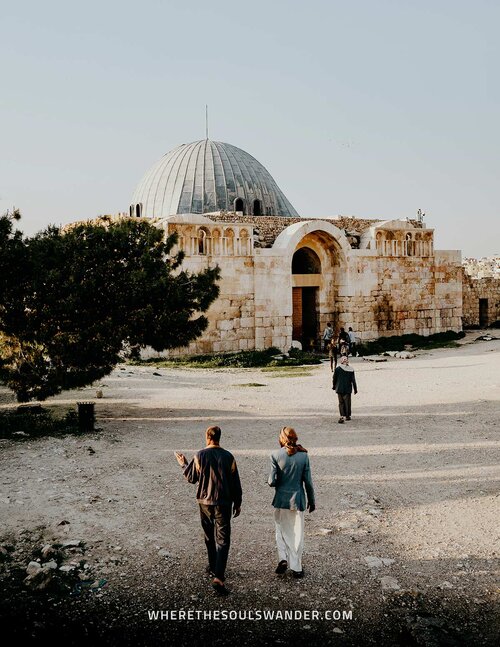
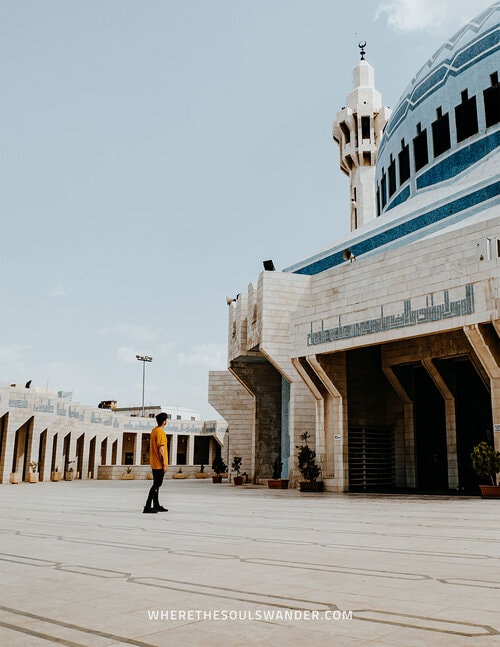
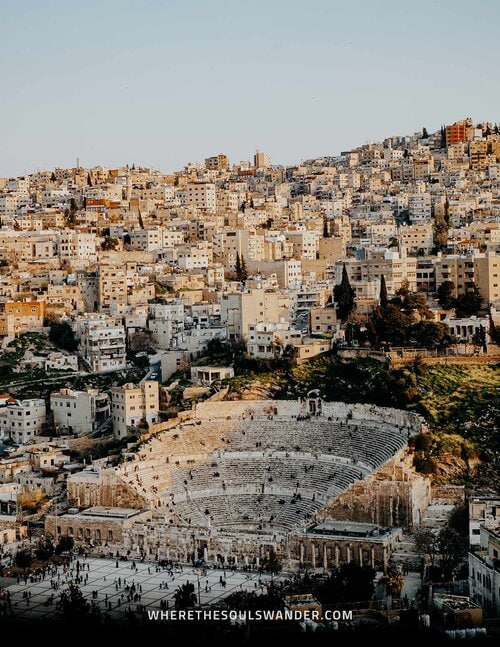
DAY TRIP | THE ROMAN RUINS OF JERASH
The Roman ruins of Jerash are located only an hour away from Amman and are therefore easily visited as part of a self-drive day trip.
Often referred to as the ‘Pompeii of the East’, Jerash is acknowledged as the best-preserved Greco-Roman city outside of Italy, and believe me, it is truly a delight to behold.
As a result, Jerash is extremely popular among travellers and locals alike, making it the second most visited tourist destination in Jordan – behind Petra, obviously!
That said, the interior of Jerash is absolutely breathtaking, and some sights that I highly suggest visiting include the Arch of Hadrian, the Temple of Artemis, Oval Square and the Northern Theatre among many others.
Though Jerash was high on my list of things to see in Jordan, I, unfortunately, planned way too little time to fully explore the extensive archaeological site. Therefore, I advise planning at least four hours to explore in a relaxing manner.
Related | Check out my guide to Jerash for inspiration, travel advice and all the essentials.
JERASH | THE ESSENTIALS
Where | Jerash
Cost | Entrance fee 10 JOD ($14,10) – free with the Jordan Pass
Driving time | 1 hour
Distance | 50 kilometres from Amman to Jerash
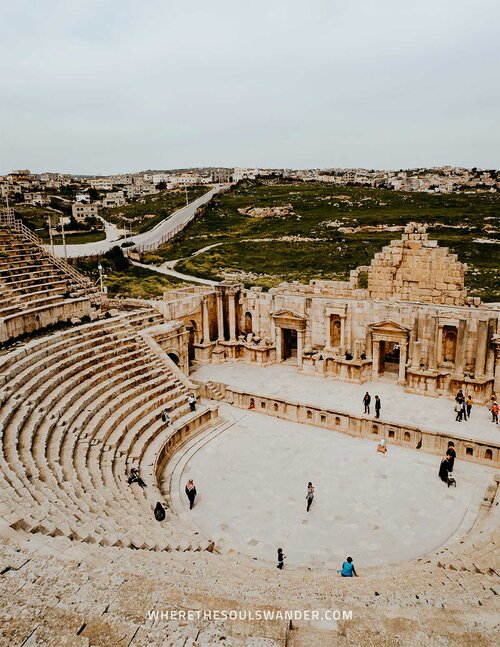
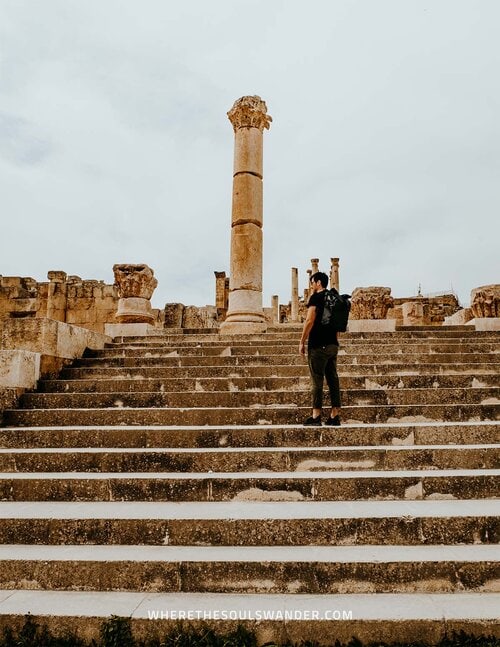
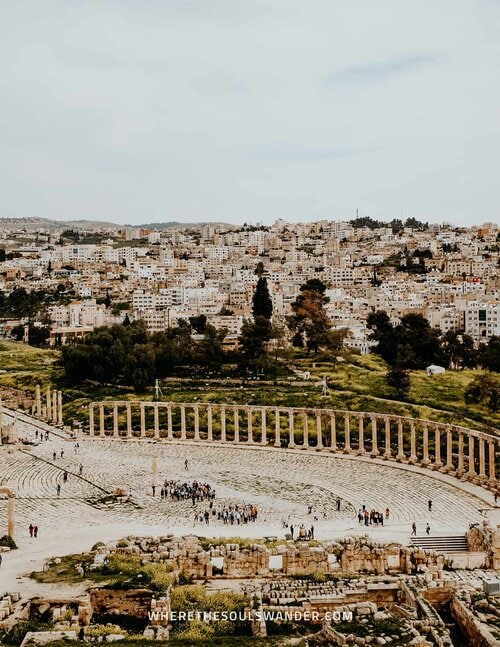
DAY 10 | TIME TO LEAVE JORDAN
After 10 incredible days in Jordan, where you’ve discovered incredible landscapes, ancient architectural masterpieces, and everything in between, it is time to pack your stuff and head for the airport.
Whether you need to drive back to Aqaba or Amman, your last moments in Jordan are all about heading home, so it is a full day of travelling anyhow.
However, one thing I like to spare you is a long exhausting drive back from Amman to Aqaba on the day of your outbound flight.
I personally opted to leave Jordan by plane from the Queen Alia International Airport in Aqaba, but would have done this part of my itinerary differently if I had to do it again – epic fail.
For that reason, I believe it is best to book separate flights, especially if spending your final 6 hours in Jordan behind the wheel isn’t your way to end this awesome road trip.
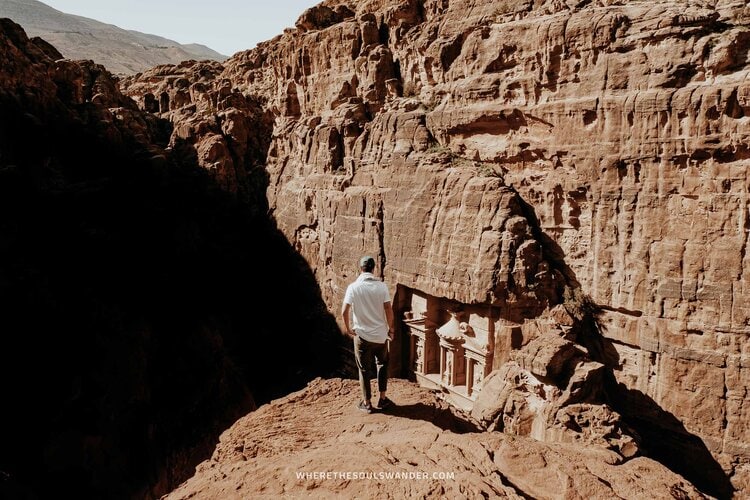
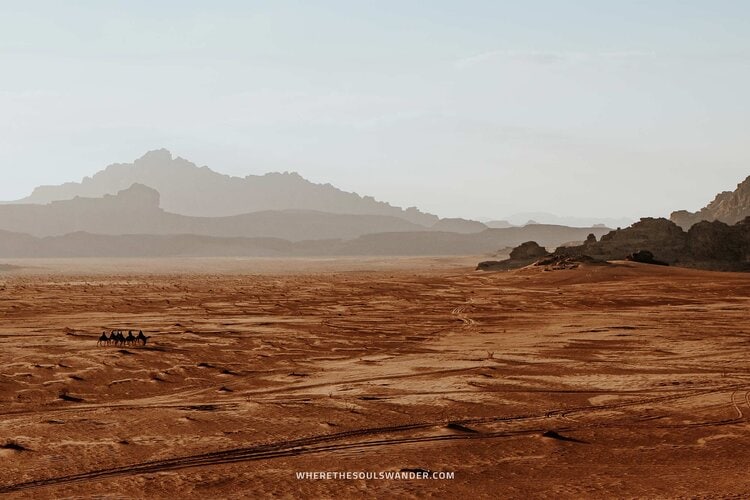
JORDAN ITINERARY | TRAVEL ESSENTIALS AND TIPS
JORDAN ITINERARY | TRAVEL ESSENTIALS AND TIPS
ACCOMMODATION | WHERE TO STAY IN JORDAN
Jordan is hands down among the most popular travel destinations of the last few years, meaning you’ll be delighted to find awesome accommodation here too.
Through the course of my Jordan itinerary, I was surprised by a broad variety of excellent accommodation options, suitable for pretty much every travel style and budget.
Whether you’re after a budget-friendly hostel, family-run apartment, authentic Bedouin tent, or luxurious high-end hotel – like this unique Martian experience in the heart of the desert, there are simply endless options available.
In terms of budget, it is completely up to you, with costs varying anywhere between €20 – €200 per night, depending on your personal requirements.
BOOKING.COM
As a solo adventure traveller, my favourite website to search for accommodation is booking.com.
Not only is it home to a broad selection of accommodation, but it’s also user-friendly, and offers options that suit any budget.
Also, you can cancel your booking at any given time, without any extra cost – perfect if you like (or dislike) a place and wish to change your travel plans accordingly.
If I made you enthusiastic to travel to Jordan, make sure you explore the many accommodation options on booking.com.
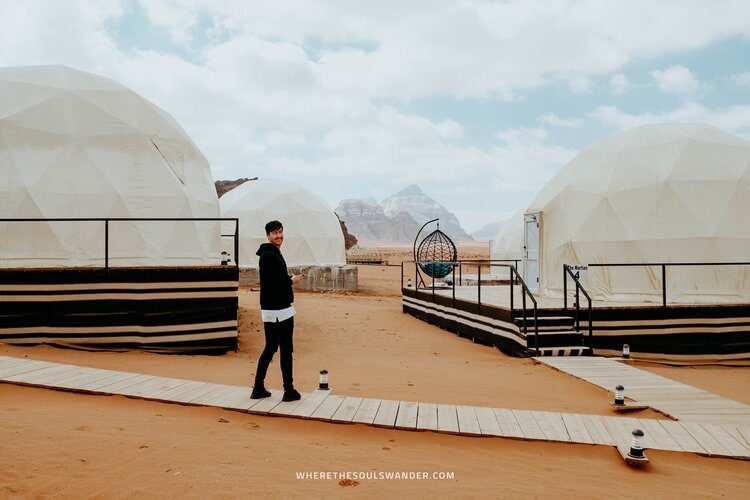

WEATHER IN JORDAN | BEST TIME TO VISIT JORDAN
Given Jordan almost entirely consists of desert landscapes, the country is rather tricky in terms of weather.
For that reason, it is good to note that Jordan can be scorching hot during the peak summer months, while at the same time, it is freezing cold during the winter months.
Depending on what you’re looking for, I believe the best time to visit Jordan is from early March to late May, especially if you’re bent on exploring Jordan’s most popular points of calls, including Petra, Wadi Rum and the Dead Sea.
However, if you wish to uncover the Red Sea’s lively underwater world, or work on your tan on a sun lounger next to it, the summer months of June to September might be the better option for you.
I followed this Jordan road trip itinerary in March and had excellent weather to tick the sights I wished to visit off my bucket list.
One thing that is worth mentioning though, is that despite the pleasant temperature during the days, the nights often become pretty chilly, specifically in the desert. So make sure you pack at least one pair of trousers and a comfy hoodie!
TRANSPORT | HOW TO GET AROUND JORDAN
CAR | HOW TO GET AROUND JORDAN
Jordan is a true spectacle in terms of rough, mystic landscapes, and by renting a car you easily experience the absolute best of this exceptional feature.
Not only is a rental the easiest way to uncover Jordan, but it also provides the ultimate freedom to travel at your own pace, not to mention that it means you’ll be driving through the most incredible landscapes too.
Another great thing about driving in Jordan is the fact that most of the roads are actually in excellent condition, plus it is pretty cheap to fill up your tank.
Meaning Jordan is made out of all the good stuff that make a road trip, a ROAD TRIP.
For car rental in Jordan, I highly recommend Rentalcars.com. They offer brilliant service, additional insurance options (which is not an unnecessary luxury in Jordan), as well as a wide selection of cars to choose from. Prices and availability here.
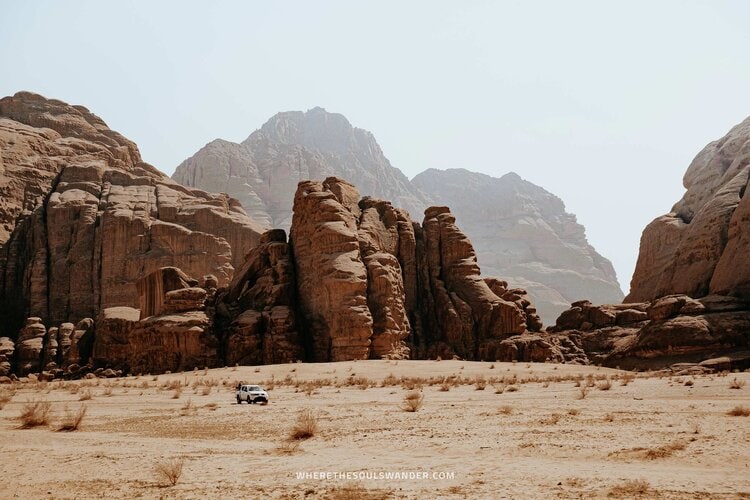
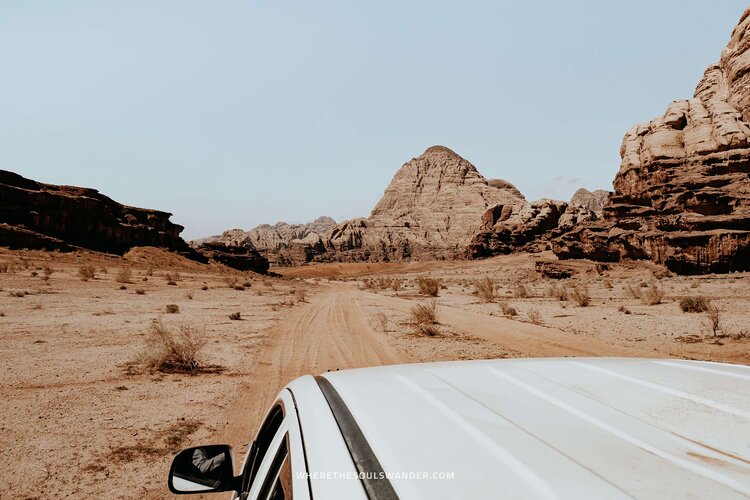
HOW TO GET TO JORDAN
FLIGHTS | HOW TO GET TO JORDAN
Though Jordan is a relatively compact country, it is home to two excellent international airports.
However, most flights arrive at the Queen Alia International Airport, situated around 30 kilometres south of Amman, the capital city of Jordan.
Alternatively, there is the King Hussein International Airport, located only a 10-minute drive away from Aqaba. I noticed that this option was significantly cheaper for flights from Europe.
Both airports are well kept and host a great variety of international flights, including those from major hubs in Europe, North Africa, North America, the Middle East, and Southeast Asia.
For flights to Jordan, I would highly advise the use of Skyscanner. Not only is their website super easy to use, but they also offer a large selection of airlines – plus the possibility to find good rates.
In my opinion, both cities are equally as good to start your Jordan road trip itinerary, as they both provide car rental pickup and dropoff services.
SAFETY IN JORDAN | TRAVEL INSURANCE
When travelling this big wide world, I never go on an adventure without my essential travel insurance sorted out, and though I felt completely safe in Jordan, I recommend anyone travelling here to do the same.
Though you rather don’t think about the things that could go wrong, there’s always a chance that it might happen, and when that’s the case, it is better to be safe than sorry.
To help you find the right policy, I’ve listed two of my favourite options below:
Heymondo | Whether you’re going on a 3-week backpacking trip, or planning a long stay somewhere abroad, Heymondo has excellent insurance options either way – plus full covid-19 coverage and a handy app with 24-hour medical assistance. Readers of WTSW receive 5% off any insurance policy, more information here.
World Nomads | If you’re an adventure seeker, backpacker, or planning your once-in-a-lifetime world trip, make sure you check out World Nomads, they designed the perfect travel insurance to help you travel safer and smarter. Do note that they’re not covering covid-19 related claims.
PLAN YOUR JORDAN ITINERARY WITH THESE ESSENTIAL GUIDES
PLAN YOUR JORDAN ITINERARY WITH THESE ESSENTIAL GUIDES
Nothing found.
15 Incredible things to do in Almaty, Kazakhstan's lively metropolis
Curious to visit Almaty, a welcoming city that is waiting to be explored? I’ve got you covered! My guide features the best things to see and do, adventurous day trips, as well as travel tips on where to stay, transport and more.
In the year that travel seemed completely off the radar due to the Covid 19 pandemic, my adventures unexpectedly took me to one of the coolest places I’ve ever visited.
The lively metropolis of Almaty, Kazakhstan.
A city of its own accord, given its exceptional geographical location at the foothills of untouched mountain ranges, surprisingly trendy cosmopolitan atmosphere, captivating Silk Road history, intriguing Soviet-style architecture, and last but not least, extremely welcoming people.
As one of the largest metropolis in Central Asia, as well as the perfect gateway to some of Kazakhstan’s finest natural environments, you might think that Almaty has become popular among travellers, but nothing could be further from the truth.
Instead, it turns out that Almaty (and Kazakhstan in general) is still left largely undiscovered, if not underrated, which is quite a shame.
Or maybe not.
Let me quickly explain. Due to Almaty’s anonymous reputation, both the city and its natural surroundings offer an off the beaten path travel experience, which feels both unique and adventurous.
While on the other hand, I believe Almaty, with its rich history and utterly friendly people, deserves to be recognized as a spectacular travel destination.
Luckily, I spent nearly 5 months in Almaty to assemble a great dose of inspiration, with the intention to bring this incredible city and its ridiculously beautiful surroundings to light.
Here’s my definite list of things to do in Almaty.
If you choose to use any of the links on this page, I may receive a small commission at no extra cost to you. By using these links, you’ll have a direct impact on WTSW and my ability to continue to create free insightful travel content for you. If you find any of my tips useful, you can support me by buying a virtual coffee here.
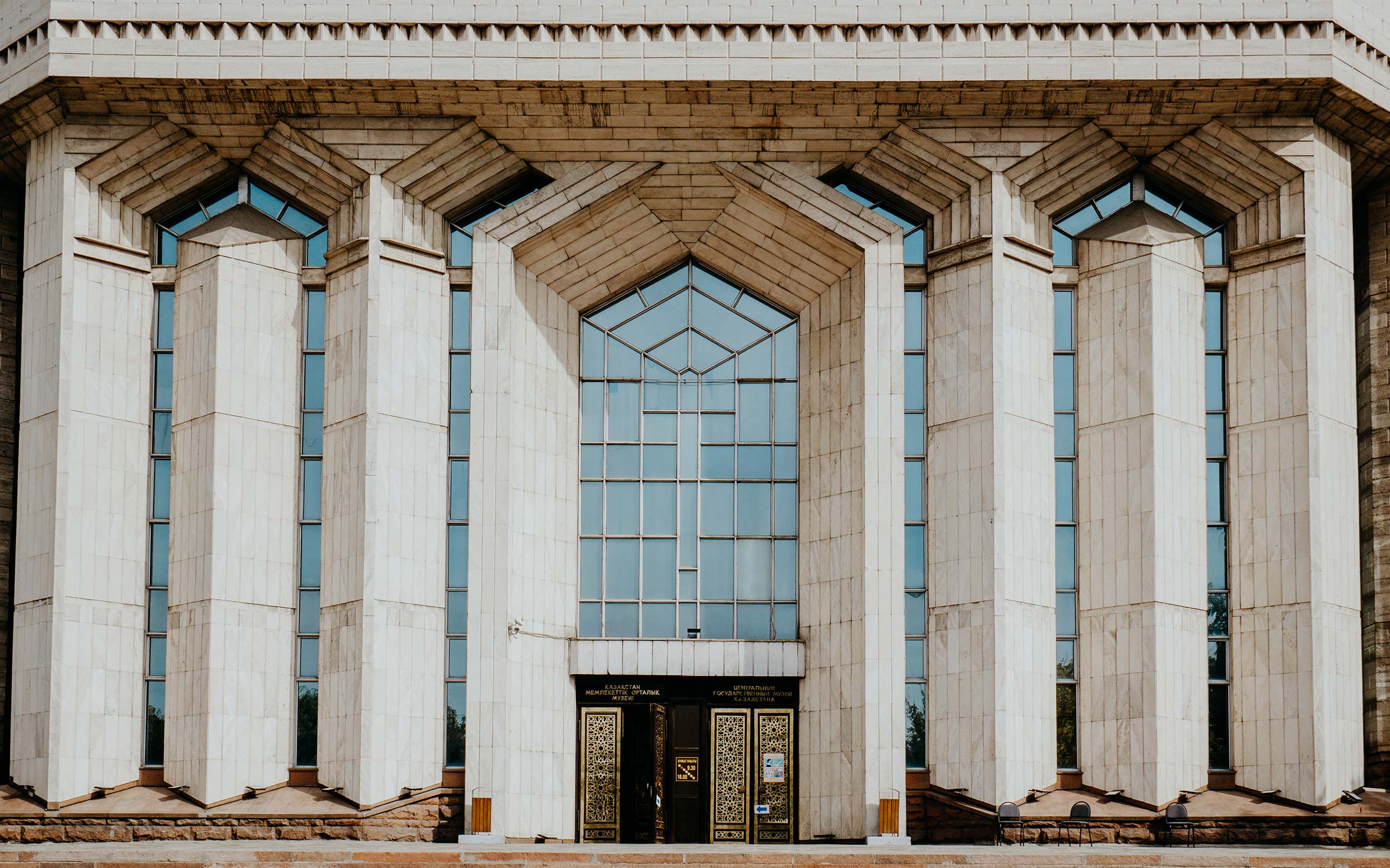
Where is Almaty
Almaty is located in the foothills of the Trans-Ili Alatau mountains in Southeast Kazakhstan, close to the border of neighbouring Kyrgyzstan.
Once the capital of Kazakhstan in 1997, Almaty remains the largest city in Kazakhstan and is still deemed one of the most significant cities in terms of cultural, economic and transport importance.
Where to stay in Almaty, Kazakhstan
Though Kazakhstan is still largely unknown to upscale tourism, it isn’t compromising on accommodation options by any means.
Instead, you’ll notice plenty of excellent options, whether you’re looking for budget-friendly hostels, cosy Airbnbs, comfortable hotels or a more luxurious splurge.
In terms of location, the Golden Square of Almaty is where you want to base yourself.
Not only is this neighbourhood home to some of the best things to do in Almaty, a well-working metro connection, and the city’s most trendy restaurants and cafes, but this area is also the safest and most accessible.
Here are some of my personal favourites in Almaty.
Kazakhstan Hotel | Kazakhstan’s most famous hotel, the Kazakhstan Hotel provides stylish rooms with spectacular views of both Almaty and the Ile-Alatau Mountains. With its convenient location on Dostyk Avenue, it’s easy to visit the city centre, mountains and Almaty’s popular ski resort Shymbulak. Also, the hotel is home to several excellent in-house restaurants and a panoramic bar.
Ambassador | If you’re aiming to find an awesome budget-friendly hotel, this is the place for you. Situated in the heart of Almaty, Ambassador offers large classic-style rooms that provide great comfort, perfect for those looking to unwind after a day of exploring. Double rooms at only $37 a night make Ambassador an absolute bargain.
Mercure Almaty City Center | Inspired by local cultural and traditional art, Mercure Almaty City Center pays great attention to its design, with amazingly decorated rooms that provide a luxurious experience. Guests also have access to a free rooftop spa and fitness area. Make sure you click the link below, just to see how awesome it looks.
Renion Park Hotel | Established right in the action of Almaty’s Golden Square, Renion Park Hotel offers spacious, air-conditioned rooms at an excellent price-to-quality ratio. It also houses an in-house restaurant, fitness centre, indoor swimming pool and sauna, which is perfect if you’re after some extra comfort.
Alternatively, search for accommodations in Almaty on booking.com.
15 Things to do in Almaty, Kazakhstan
1. Roam around the Green Bazaar
One of the best introductions to a country and its culture is by roaming along the myriad of stalls from an authentic local market.
Not only is it the perfect way to get a feel for the locals and their ways, but it’s also the number-one place to sample new flavours and locally-grown produce.
Established at the heart of Almaty is the Green Bazaar, an extensive covered market that is home to loads of vendors, offering their visitors the most authentic flavours of Central Asia.
From Kazakhstan’s traditional Kymyz (fermented horse milk) to delicious dried fruits and nuts, Almaty’s famous apples to distinguishing spices and vegetables, it is all found here.
Though I mostly came to the Green Bazaar to stock up on mouth-watering dried fruits and nuts, it is also a place to find all sorts of other goods, including clothes, souvenirs, electronics and more.
If you’re after a genuine, authentic vibe, make sure you experience the hustle and bustle of Almaty’s exciting Green Bazaar.
Where | Green Bazaar, Almaty
Opening hours | Tuesday to Sunday 09:00 – 19:00, Monday closed

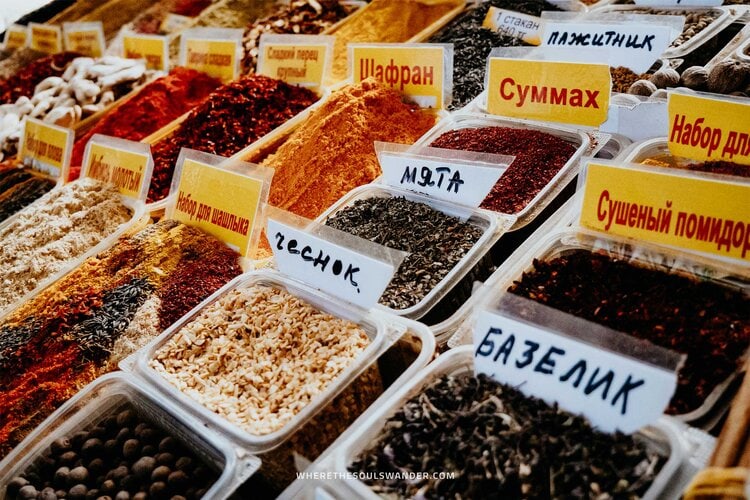
2. Behold inspiring art at the Kasteev State Museum of Arts
First established in 1935, the intriguing Kasteev State Museum of Art is not only the largest art museum in Kazakhstan but also the most interesting if you ask me.
Today, visitors to Kasteev can behold some of Kazakhstan’s finest artworks, with a total of more than 25.000 intriguing art objects dotted throughout the museum.
The distinctive collection is an excellent mix of past and present, with fascinating contemporary art objects and intriguing historical pieces alike – I even noticed several extraordinary paintings from my country of birth, the Netherlands.
But some of my favourite works in the museum include the glorified paintings that represent the Soviet Union. Though I realize that these paintings give a biased glimpse into this eventful period, they clearly are of high artistical value.
Other highlights found in the museum include paintings of Kazakhstan’s famous poet Abay Kunanbaev, modern sculptures and highly regarded works of Asian, European and Russian artists.
If you’re short on time, and only have time to visit one museum in Almaty, I’d advise taking in the exquisite artworks that are on display in the Kasteev State Museum of Arts.
Where | Kasteev Art Museum, Almaty
Opening hours | Tuesday to Sunday 10:00 – 17:00, Monday closed
Cost | Entrance fee 500 KZT ($1,20) per person

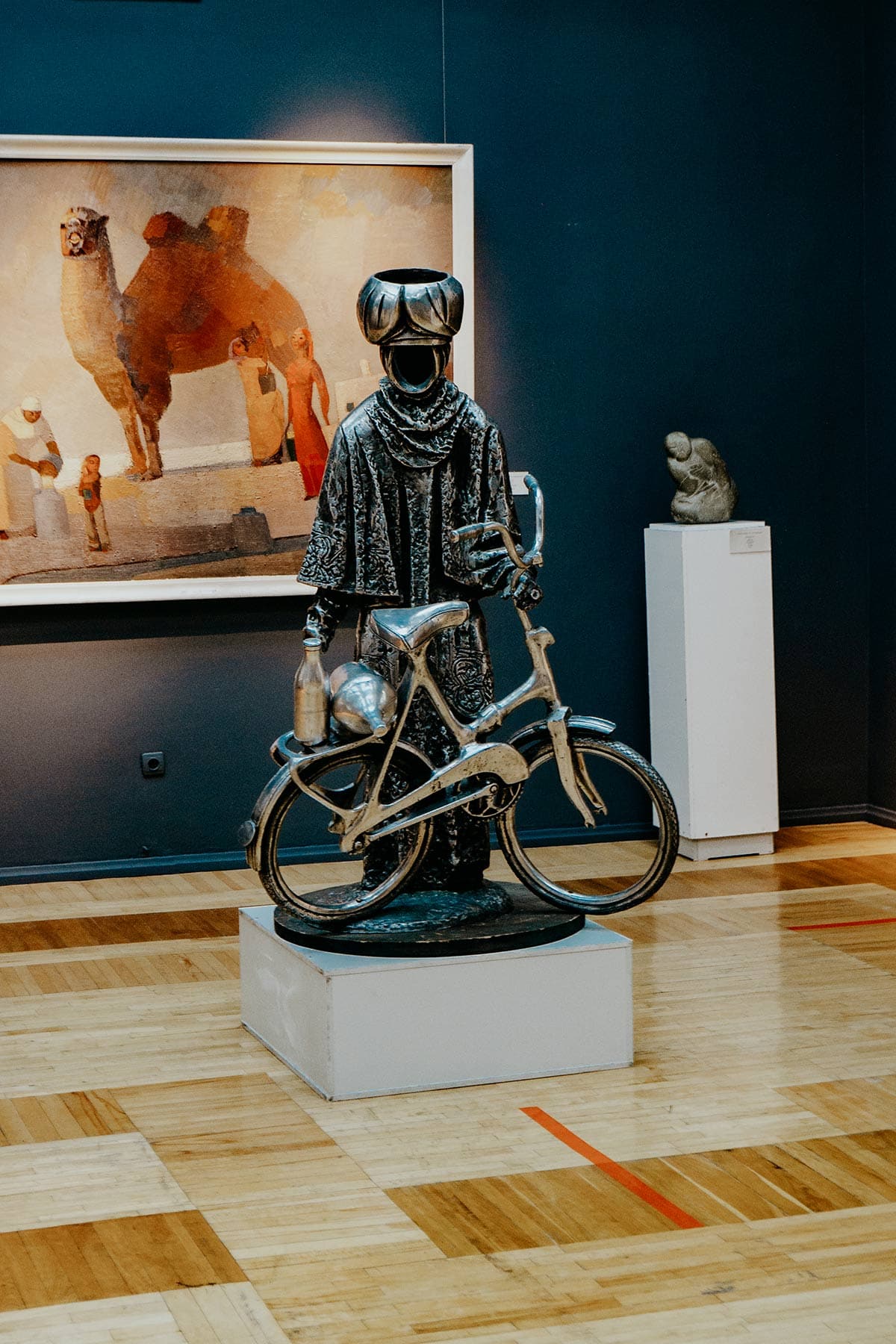

3. Take a walk around Panfilov Park
Wandering through the spruce tree-lined Panfilov Park is in many ways, one of my absolute favourite things to do in Almaty.
At the heart of downtown Almaty, a lush urban park occupies, granting its visitors the perfect place to escape the rush of the city.
Named after Almaty’s famous Panfilov heroes (who gave their lives in the defence of Moscow during World War II), the park is home to a gigantic memorial statue, showcasing 28 soldiers as well as an eternal flame.
But it’s not just the Statue of Panfilov’s 28 Guardsmen that make the Panfilov Park an excellent place to venture to for an afternoon stroll.
There are actually loads of other highlights nestled in the verdant park; the Russian Orthodox Ascension Cathedral, the Kazakh Museum Of Folk Musical Instruments, and the Military History Museum to name a few.
Also, you’ll find Bowler Coffee Roasters here, a trendy cafe with the most excellent coffee and pastries on the menu. These yummy treats are best enjoyed in hand while watching local life unfold on a relaxing walk.
If there is one thing I learned during my time in Almaty, it surely is that Kazakh people appreciate spending time in one of the many urban parks – and so did I!
Where | Panfilov Park, Almaty
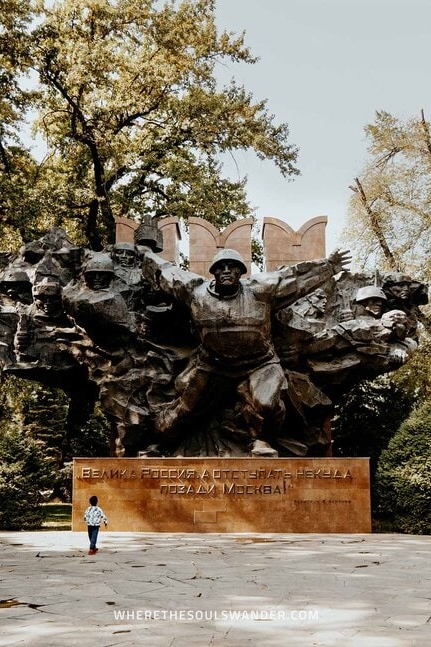
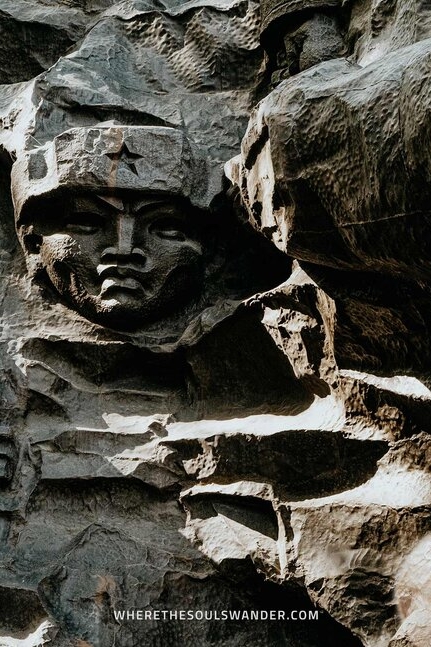
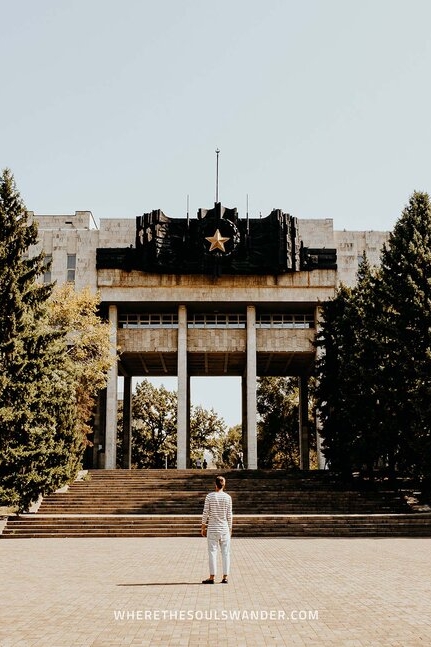
4. Admire the Ascension Cathedral
Defined by its distinctive palette of bright pastel colours, the majestic Ascension Cathedral stands proud against the lush greenery of Panfilov Park.
Built entirely out of locally obtained Tien-Shan spruce trees by architect Andrei Pavlovich Zenkov in 1907, the Russian Orthodox Cathedral is considered one of the tallest wooden buildings in the world.
Also, the cathedral survived 2 massive earthquakes due to the building’s distinctive engineering and design, which is even more impressive if you note that most of the buildings in Almaty were left damaged or in ruins.
In my opinion, the Ascension Cathedral is one of the most extraordinary buildings in Almaty, and for that reason, unmissable on any list of things to do in Almaty.
Where | Ascension Cathedral, Almaty
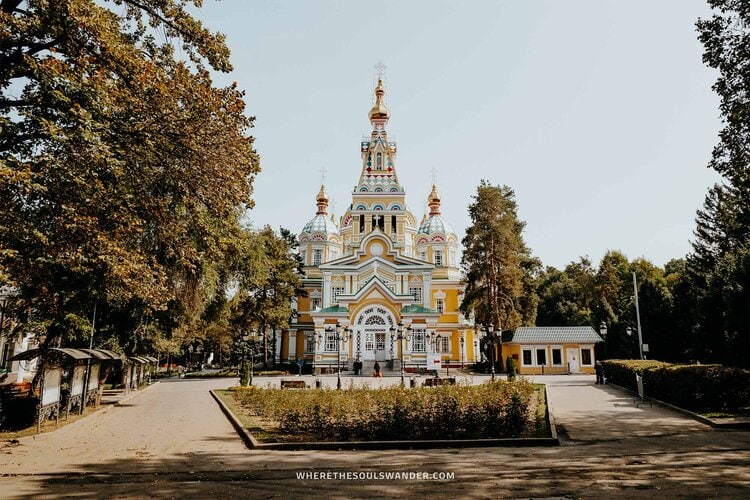
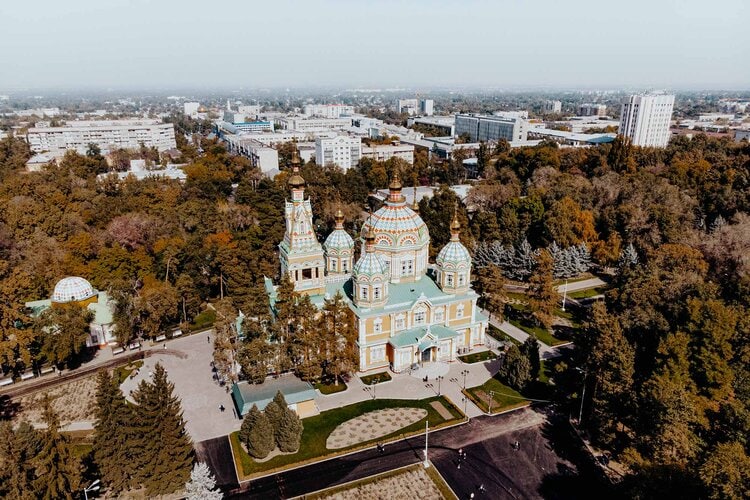
5. Visit the Kazakh Museum of Folk Musical Instruments
Almaty has a myriad of interesting museums, and the Kazakh Museum Of Folk Musical Instruments is definitely one that is worth a visit, especially if you’re into music.
Those familiar with Kazakstan’s deep-rooted nomadic culture, realize that living on the road constantly, largely shaped their customs, religion and beliefs – this is clearly reflected in their musical expression and the instruments that they’ve mastered.
Luckily for us, these intriguing traditional music instruments are now on display.
Occupying an authentic Russian-style wooden house in the midst of Panfilov Park, the Ykhlas Museum of Kazakh Folk Instruments houses more than 1.000 items related to Kazakhstan’s captivating musical heritage.
Most notable of these items contain distinctive instruments that were used to perform Küy, a short solo composition played on traditional Kazakh instruments; the famous Dombyra, Kobyz and Syrnai to mention a few.
Additionally, the museum is home to a great collection of Turkish, Uzbek and Kyrgyz folk instruments, which are definitely worth checking out too.
Where | Kazakh Museum Of Folk Musical Instruments
Opening hours | Tuesday to Sunday 10:00 – 19:00, Monday closed
Cost | Entrance fee 350 KZT ($0,85) per person
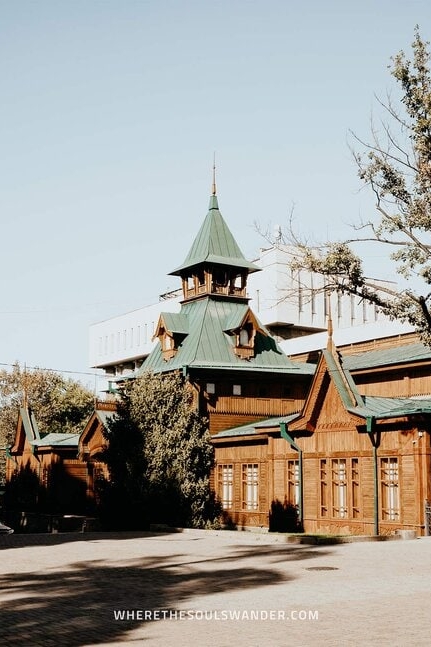
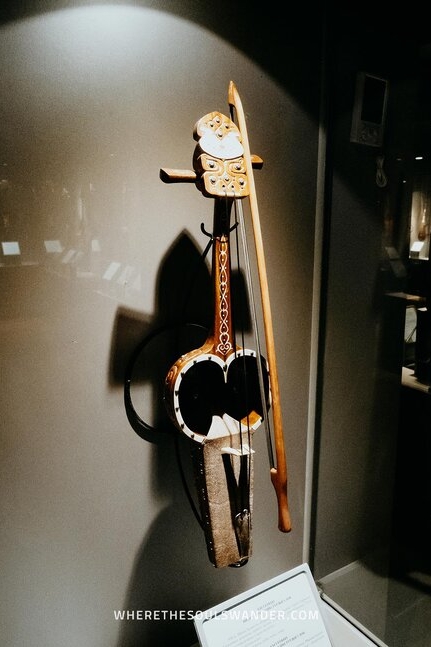
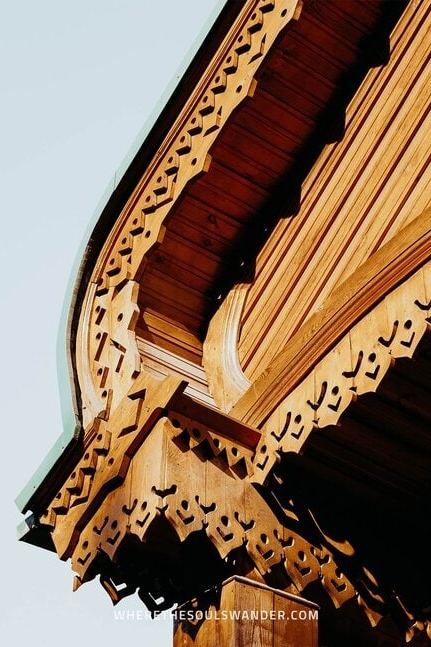
6. Go hiking in Almaty’s untouched mountains
Encircled by the untouched mountains of the Ile-Alatau National Park, Almaty is actually a true paradise for those into hiking and off-the-beaten-path adventures.
These towering mountain ridges form an enchanting backdrop against the city’s modern skyline, and will constantly lure you towards them, day in, day out.
And though I loved the energetic contemporary ambience in Almaty, it is safe to say that the city’s real treasure lies in the sheer natural beauty surrounding it.
It’s a place of rough adventures and bare landscapes. Think snow-covered peaks, sharp mountain ridges, steep forest hills and loads of hiking trails running through them.
I’ve spent several days in the mountains of Almaty and had some of my favourite days here.
If you’re keen to escape the hustle and bustle of downtown Almaty for the day, I’ve written several guides on hiking in Almaty, so be sure to have a look there too!
+ Read more | A complete guide to Terra Forest Meadow, Almaty
+ Read more | A guide to Kok-Zhailau, Almaty (coming soon)
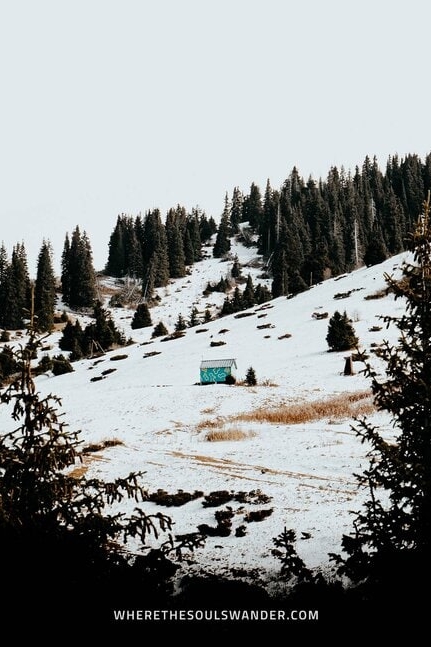
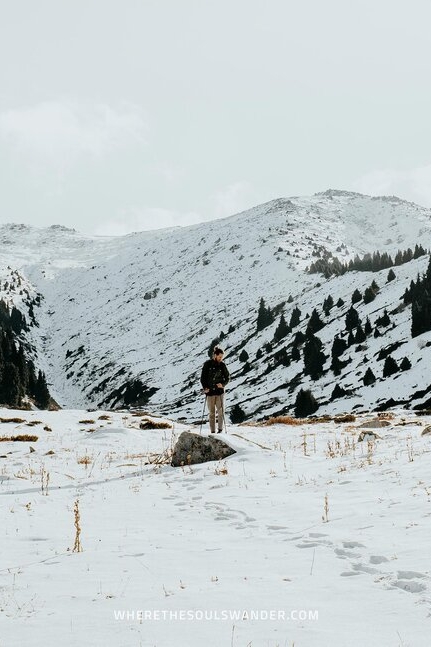
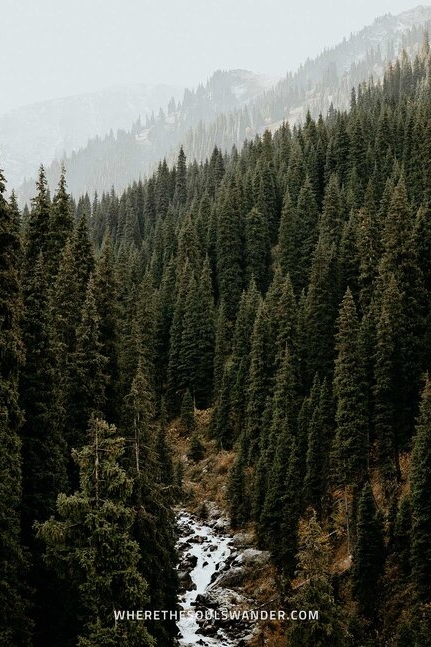
7. Explore Almaty’s wide variety of culinary options
After living in Almaty for over 2 months, it is safe to say that Almaty is a delight for foodies.
Whether you’re after traditional local dishes or contemporary cuisine, Almaty has no shortage of excellent dining options, serving a wide choice of distinctive cuisines.
I sampled Laghman, a local favourite at the Green Bazaar, enjoyed Georgian’s finest khachapuri and khinkali at Patsatsina and Daredzhani, ate yum spicy Indian curries at Maharaja, and grabbed my daily dose of coffee at Bowler Coffee Roasters to name but a few.
However, one thing worth mentioning is that Kazakhstan’s culture is pretty meat-oriented due to its nomadic origins, which can make it slightly challenging to find a good vegan dish. Luckily, it slowly improves, with some restaurants already having some vegan options on their menu.
For those who like to see my favourite restaurants in Almaty, I’ve written a complete guide on where to eat in Almaty (coming soon).



8. Visit the Central State Museum
Those attracted by history will be pleased to hear that The Central State Museum in Almaty is titled the largest museum in Central Asia, displaying an extensive collection of artefacts, including items used by the ancient nomadic people of Kazakhstan.
With more than 300.000 artefacts on display, a stroll through the Central State Museum is an excellent occasion to acquire knowledge on the country’s history, archaeology, culture and politics.
The museum is home to seven different exhibition halls, showcasing palaeontology and archaeology collections, traditional Kazakh artefacts, as well as items from the time when Kazakhstan became independent.
Some of my personal highlights include a replica of Kazakhstan’s National hero; the Golden Man, items related to Genghis Khan and the Silk Road, and traditional Kazakh folklore costumes.
The Central State Museum is a fascinating place from the inside and out, and in my verdict, worthy of an afternoon of your time, even if it’s only to see the museum’s grand exterior.
Where | Central State Museum, Almaty
Opening hours | Wednesday to Monday 09:00 – 17:30, Tuesday closed
Cost | Entrance fee 500 KZT ($1,25) per person
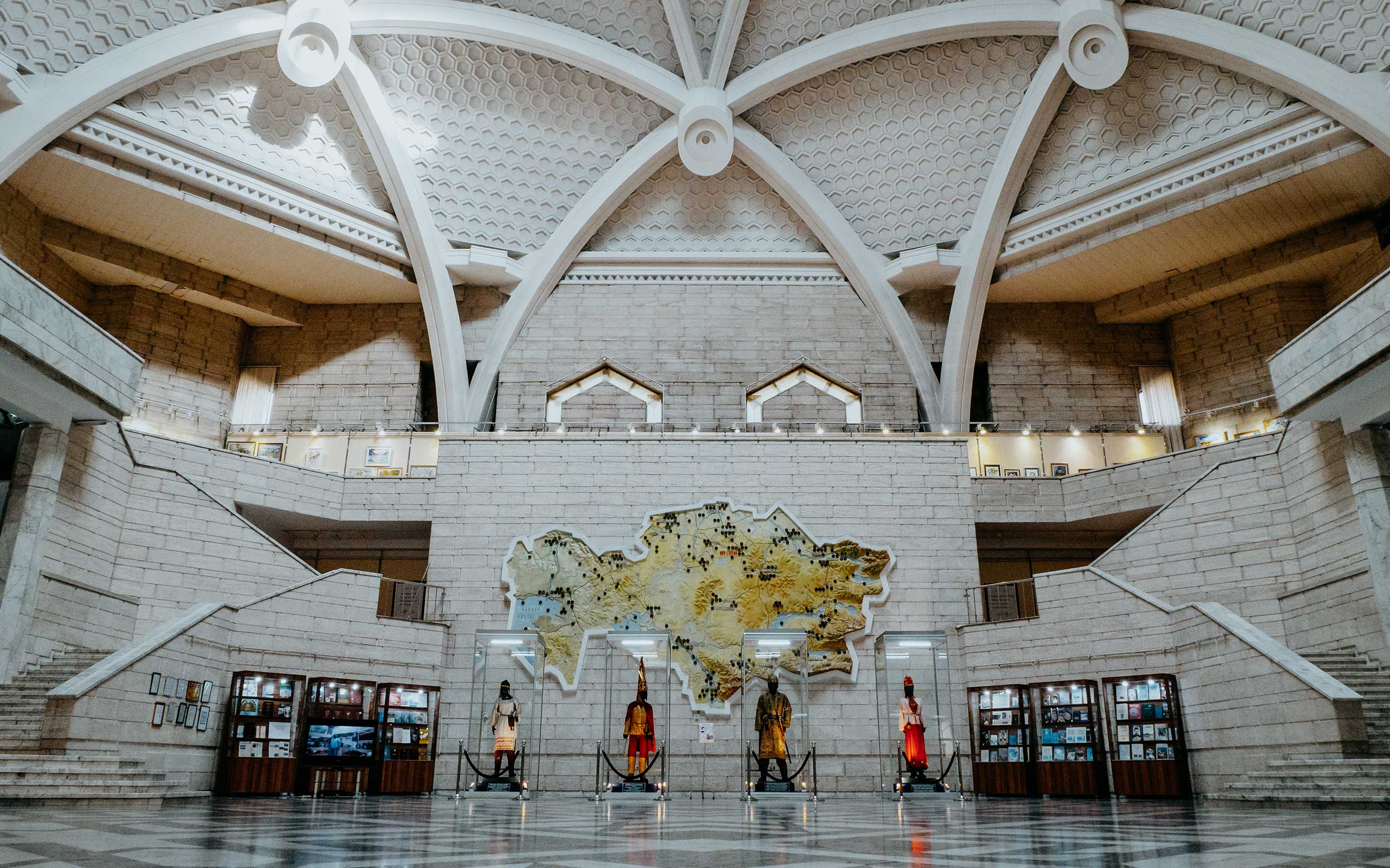
9. Relax in the Arasan Baths
Kazakh people are pretty serious when it comes to their spa day, and after looking into their wellness & spa facilities, it’s easy to see why.
Situated in the heart of Almaty, the Arasan Baths are known as one of the finest bathhouses in Central Asia, providing its visitors all the assets for a luxurious spa experience.
The Arasan Baths were built in 1980 in a modernized Soviet-style, and are home to several steam rooms, including Finnish and Russian, as well as Turkish and Moroccan style hammams.
For the traditional Russian banya experience, I would advise buying a bundle of leafy tree branches, locally known as a venik. By slapping yourself on the body with one of them, you improve blood circulation, experience deep relaxation, and several other health benefits.
I know, it sounds crazy, but it’s true!
Should you wish to opt for a more peaceful treatment, Arasan also has a number of rejuvenating massages on offer in their detox and spa facilities.
Something else that fascinated me, is that Arasan is designed in the most exquisite way. Think polished marble floors, pinewood elements, beautiful mosaic patterns, and delicate ceramic tiles.
I visited the Arasan Baths on my first day, and found it an excellent remedy to fight my jet lag!
Where | Arasan Baths, Almaty
Opening hours | Daily 07:00 – 22:40
Cost | 1.500 – 2.000 KZT ($3,60 – 4,80) per hour

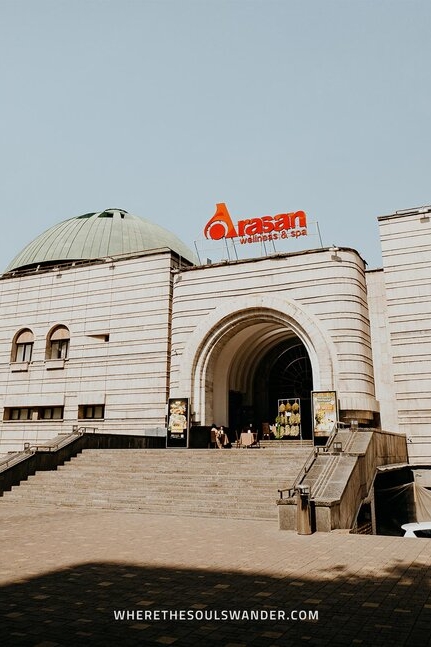

10. Get some winter sports action at the Shymbulak Ski Resort
As mentioned earlier, Almaty is one of the most diverse natural environments I’ve ever visited, and when the winter season arrives, it also doubles as a brilliant winter sports destination.
Yeaaah, you’ve read that right!
Hidden between the picturesque mountains of the Ile-Alatau National Park, at only a 30-minute drive from the Almaty city centre is Shymbulak, a high-end ski resort that provides everything you need for an exciting day of winter sports action.
With several excellent slopes (the highest is 3.200 meters above sea level), the resort is welcoming skiers and snowboarders of any level. The lower section is great for beginners and those after lessons, while the upper slopes are more suited for experienced free riders and daredevils.
All necessary equipment can be rented near the entrance, or at the first summit, and it is unbelievably cheap compared to leading winter sports destinations in Europe. I rented a snowboard, boots and helmet, and paid only 7.000 KZT ($16,70) for an entire day.
When I booked my flight to Almaty in early autumn, I’d never imagined that I would strap on a pair of snowboarding boots to experience my first ever snowboarding lesson, but I’m happy I did – it was freakin awesome!
So, if you’re in Almaty during winter, I advise spending at least one day on the slopes of Shymbulak, even if you’re a beginner like me.
Where | Shymbulak Ski Resort, Almaty
Opening hours | Weekdays 10:00 – 18:00 and weekends 10:00 – 19:00 during the season.
Cost | 34.900 KZT ($83,-) for a ski pass, equipment rental and 2-hour snowboard lesson.
When | From late November to early March
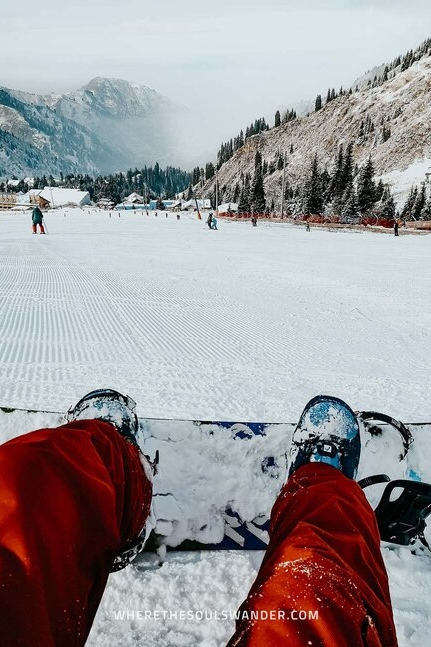
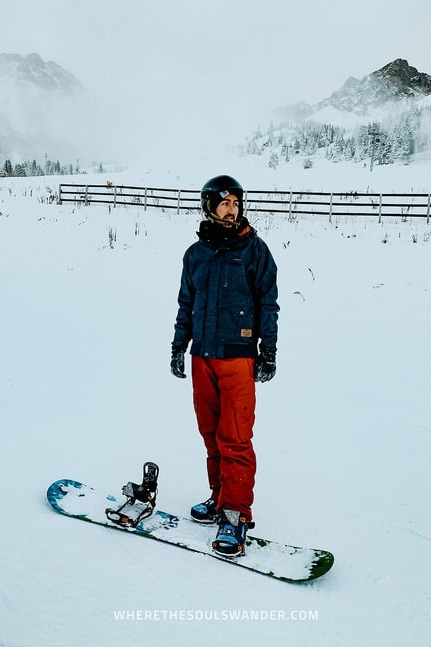
11. Visit Big Almaty Lake
If you’ve been doing your research for Almaty, then I’m pretty sure you stumbled across the Big Almaty Lake plenty of times, and that’s for a good reason.
Enchanting many with its unusual teal waters, the Big Almaty Lake is an extensive natural reservoir, nestled in the hills of the Ile-Alatau mountains only just outside of Almaty.
With its awesome backdrop and encircling mountain ridges, the area around the lake is considered one of the regions most popular hiking environments.
Do, however, note that Big Almaty Lake is near the Kyrgyzstan border, so be cautious in which direction you head on your hiking. Also, take your passport just to be safe.
But Big Almaty Lake is more than just a place to seek immeasurable natural beauty and peace.
It is in fact, Almaty’s most precious natural wonder, functioning as the region’s number-one source of mineral-rich drinking water. For that reason, it is strictly forbidden to swim in the lake.
As always, respect nature and be sure to bring your belongings and garbage on the way back.
Unfortunately, when I visited Almaty in autumn-winter, the roads to Big Almaty Lake were closed, so I couldn’t make it here on this trip. But with my intention to go back to Almaty soon, it’s only a matter of time before I see this stunning lake with my own eyes.
Where | Big Almaty Lake
Opening hours | This depends on several factors, so it is best to check before your visit.
Cost | Entrance fee 200 KZT ($0,50) per person
+ Recommended tour | Check out this half-day tour of Big Almaty Lake
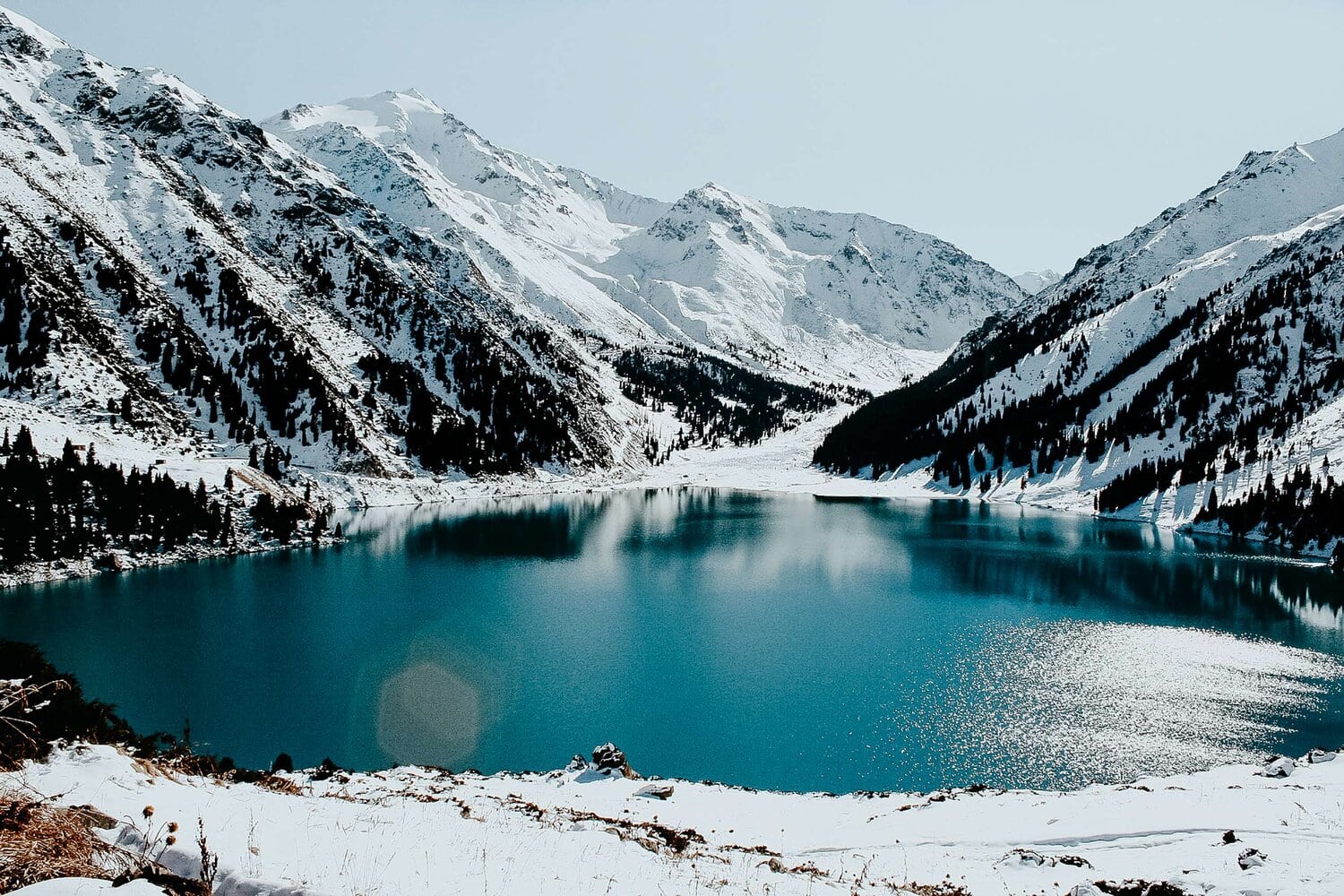
12. Explore the Altyn-Emel National park
One of my absolute favourite things to do in Almaty involves venturing to the tremendously beautiful Altyn-Emel National Park.
Situated at roughly 265 kilometres northeast of Almaty, the Altyn-Emel National Park makes for a great road trip adventure, and for that reason, it is best explored as part of a multiple-day trip.
The extensive national park is home to a broad range of distinctive landscapes, with maybe even the most appealing in all of Kazakhstan. Yes, I said it!
From otherworldly Mars-like mountain ridges to massive sand dunes to some of the countries rarest animal species, the Altyn-Emel National Park is a gateway to the diverse great outdoors of Kazakhstan.
Some of the highlights include:
The Singing Sand Dunes | The number one reason why travellers go on an adventure to the Altyn-Emel National Park, is to admire the golden sands of the towering Singing Sand dunes. And I must admit, these 150-metre high dunes, rising suddenly out of the flat steppe territory make for a postcard-perfect scenery.
The Aktau Mountains | Perched on the edge of the park, the Aktau Mountains are the main reasons why I wished to visit Altyn-Emel in the first place. These Mars-like mountains are in my opinion, the perfect example of how magical this planet we call home truly is. The distinctive ridges boast a marvellous colour palette, with deep red and white sandstone surfaces fluctuating over and over again. It is a true spectacle to behold, and wandering among them feels as though you’ve set foot on another planet.
Wildlife | With roughly 260 different animal species, the Altyn-Emel National Park is often referred to as Kazakhstan’s very own wildlife destination. During a visit, you’ll have the chance to encounter unusual animals, including Argali, lynx and dziggetai (Mongolian wild ass) just to mention a few. Also, the area is home to a series of rare and endangered birds including the Black stork and the Imperial eagle.
Where | Altyn-Emel National Park
Opening hours | All day, every day
Cost | Entrance fee 1.100 KZT ($2,65) per person
+ Recommended tour | This full-day tour of Altyn-Emel takes you to both the singing sand dunes and the Aktau Mountains – plus it includes admission and pickup service. Prices and availability here.
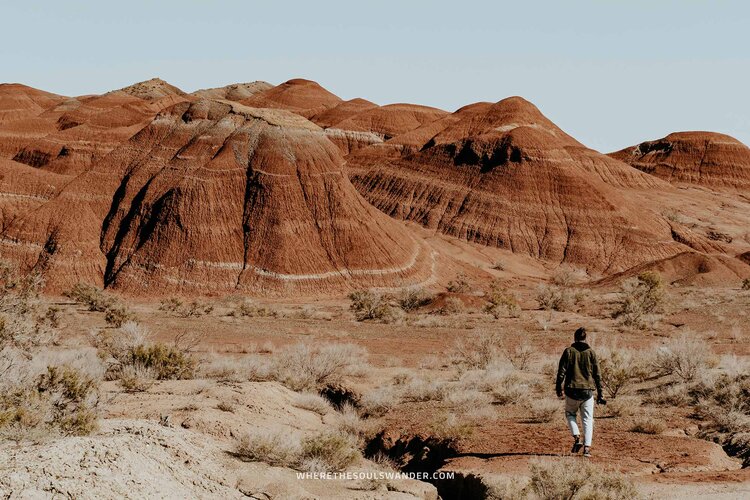
13. Behold the iconic Kaindy Lake
I remember exactly what I said to my hiking buddy Anuar, when we arrived at the enchanting Kaindy Lake after our exciting hike through the freshly fallen snow.
‘‘This is the most beautiful place I have ever seen’’.
Nestled in the Tien Shan mountains at roughly 30 minutes south of Saty lies one of Kazakhstan’s most unique natural phenomena; the fairytale-like Kaindy Lake, also known as the sunken forest.
After a powerful earthquake in the year 1911, a lush forested valley slowly transformed itself into a lake, as a result of a major landslide.
Over the following years, the valley gradually filled up with rainwater, while the trees died in the process, by the reason of their new unfavourable circumstances.
Today, the idyllic lake is an utterly surreal sight to behold, with its towering dead spruce trunks arising from the vivid turquoise waters of the lake – it is absolutely stunning.
Despite its sheer beauty, the lake sees little visitors. The reason for this is not only its remote location but also due to the fact that Kazakhstan is largely untouched by international tourism companies.
I was fortunate enough to witness Kaindy Lake in winter, but I can’t wait to go back there during spring or summer.
Where | Kaindy Lake, Saty
Cost | Entrance fee 785 KZT ($1,90) per person
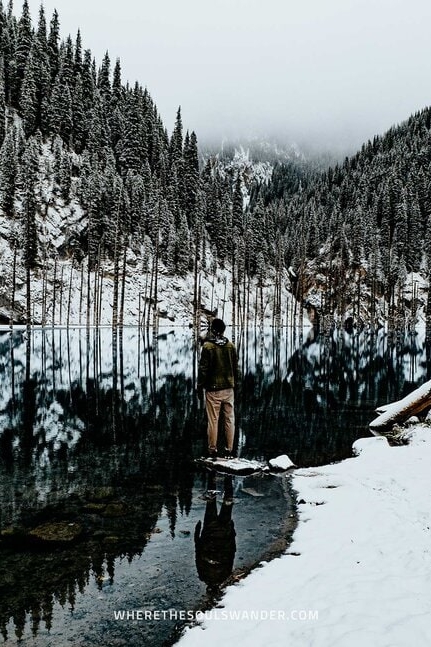
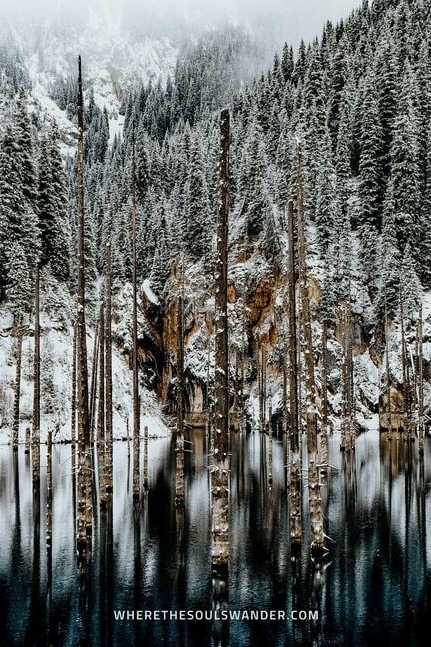
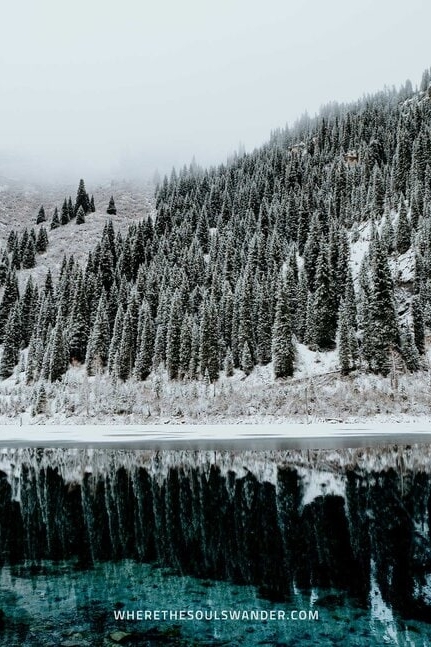
14. Explore Charyn Canyon
While the Charyn Canyon National Park is not necessarily close to Almaty, I firmly believe that it’s worth mentioning in any guide that involves the best things to do in Almaty.
Often nicknamed the Grand Canyon of Kazakhstan due to its twin-like similarities, the Charyn Canyon National Park is truly an impressive destination to explore.
From the moment you arrive, you’ll be welcomed by the most striking views of the ‘Valley of Castles’, a 150-metre deep canyon that was shaped out of the rough steppe terrain, following more than a million years of erosion.
From the parking lot, you can explore the entire left flank of the canyon walls, which I obviously advise you to do – some of the best vistas are obtained exactly here! However, note that it gets extremely steeps at times, so please be cautious.
While these views are definitely the highlight of your visit, it is also possible to roam endlessly between the deep-orange sandstone rock formations of the canyon. A dusty path takes you along several eye-catching rock formations, before ending up at a valley next to the idyllic Charyn River.
Due to its remote location at roughly 200 kilometres east of Almaty, Charyn Canyon is best explored on a multiple-day trip. By doing so, you can easily combine it with other destinations of Almaty’s famous Golden Triangle, such as Altyn-Emel National Park, Kolsai Lakes and Kaindy Lake.
Also, don’t forget to bring lunch, snacks and sufficient amounts of drinking water, Charyn Canyon can be significantly warm during the peak summer months.
Where | Charyn Canyon
Opening hours | All day, every day
Cost | Entrance fee 800 KZT ($1,90) per person
+ Read more | My in-depth guide to Charyn Canyon
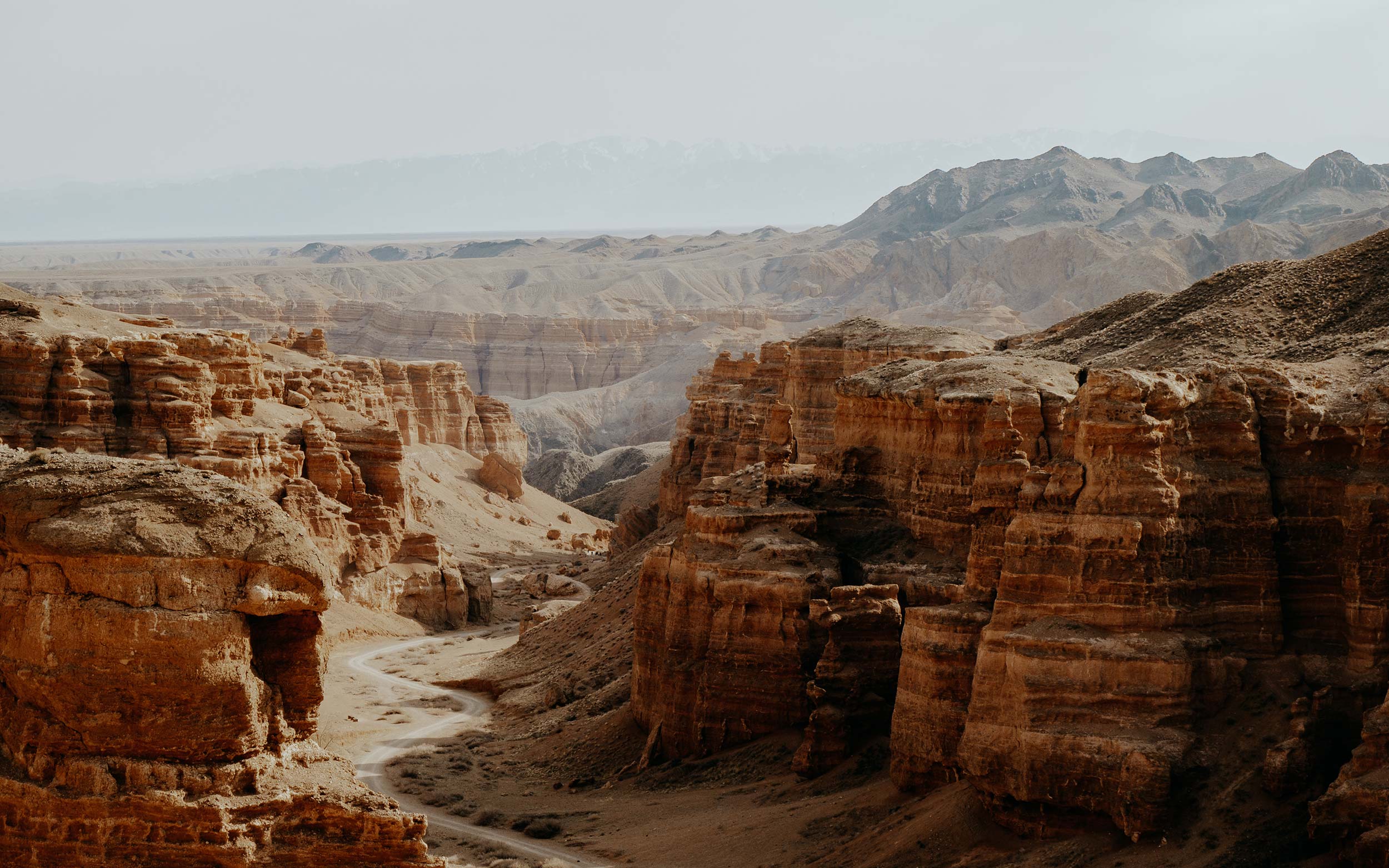
15. Admire the incredible Kolsai Lakes
Locally known as ‘the pearl of the northern Tien Shan’, the Kolsai lakes are an impressive series of three mirror-like mountain lakes.
Accompanied by robust pine trees, dense meadows and snowy mountain peaks, these crystal clear lakes often reflect the beauty that surrounds them, making it a stunning scene to take in.
For those after adventure, there is a trail that takes you all the way to the second and third lakes. Though I didn’t follow the trail myself, I’ve read that it’s pretty awesome.
What I did do, and advise you to do too, is take a walk around the first lake, which grants several excellent viewpoints, especially on the significantly higher right side of the trail.
And while the left side has a trail too, I wouldn’t advise you to walk it, this side is densely forested and therefore quite a challenge. If you do so, please be careful.
As with many tourist attractions in Kazakhstan, the Kolsai Lakes are truly a place of tranquillity, and when visiting during the week, you’ll most likely end up there completely alone.
If you’re thinking of visiting the Kolsai Lakes as part of an organised tour, the chances are high that it will be during the weekend. At first, this option sounds great, but it often means that you have limited time and share the lake with large groups of local tourists.
Where | Kolsai Lakes, Saty
Cost | Entrance fee 778 KZT ($1,85) per person
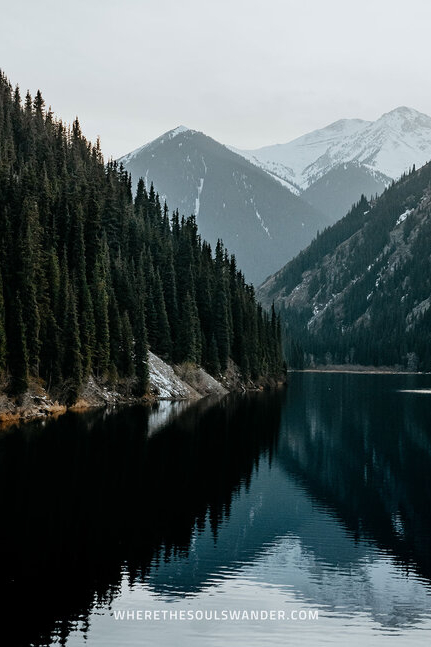
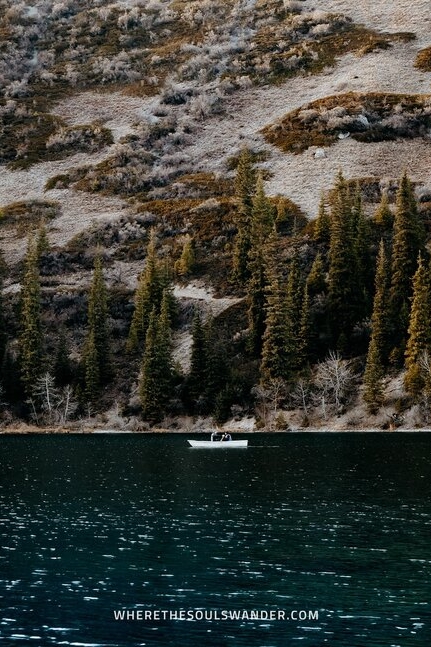
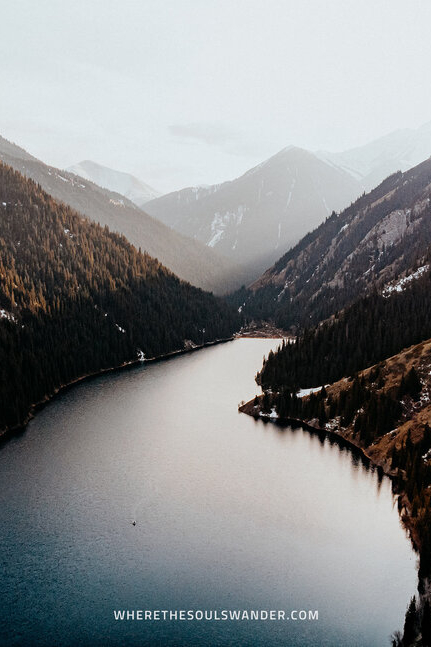
Things to do in Almaty | The essentials
The best time to visit Almaty
Almaty is an appealing destination at any given time of the year, and when you plan to visit, depends largely on your travel purpose.
For explorations around town, hiking in the surrounding mountains, and day trips to some of the region’s untouched gems, a trip in early May to begin November will be your best option. During this period, great weather conditions occur, while Almaty’s nature reveals itself in the finest colours possible.
Then there are the winter months of early December to February, which grant the perfect circumstances for adventuresome winter sports activities, such as skiing, snowboarding and ice skating. Though Winter in Almaty is mostly fun, be prepared, they can be pretty harsh too.
I visited Almaty from early September to late November and enjoyed the best of both worlds, and I can’t wait to explore the region again in the bloom of spring.
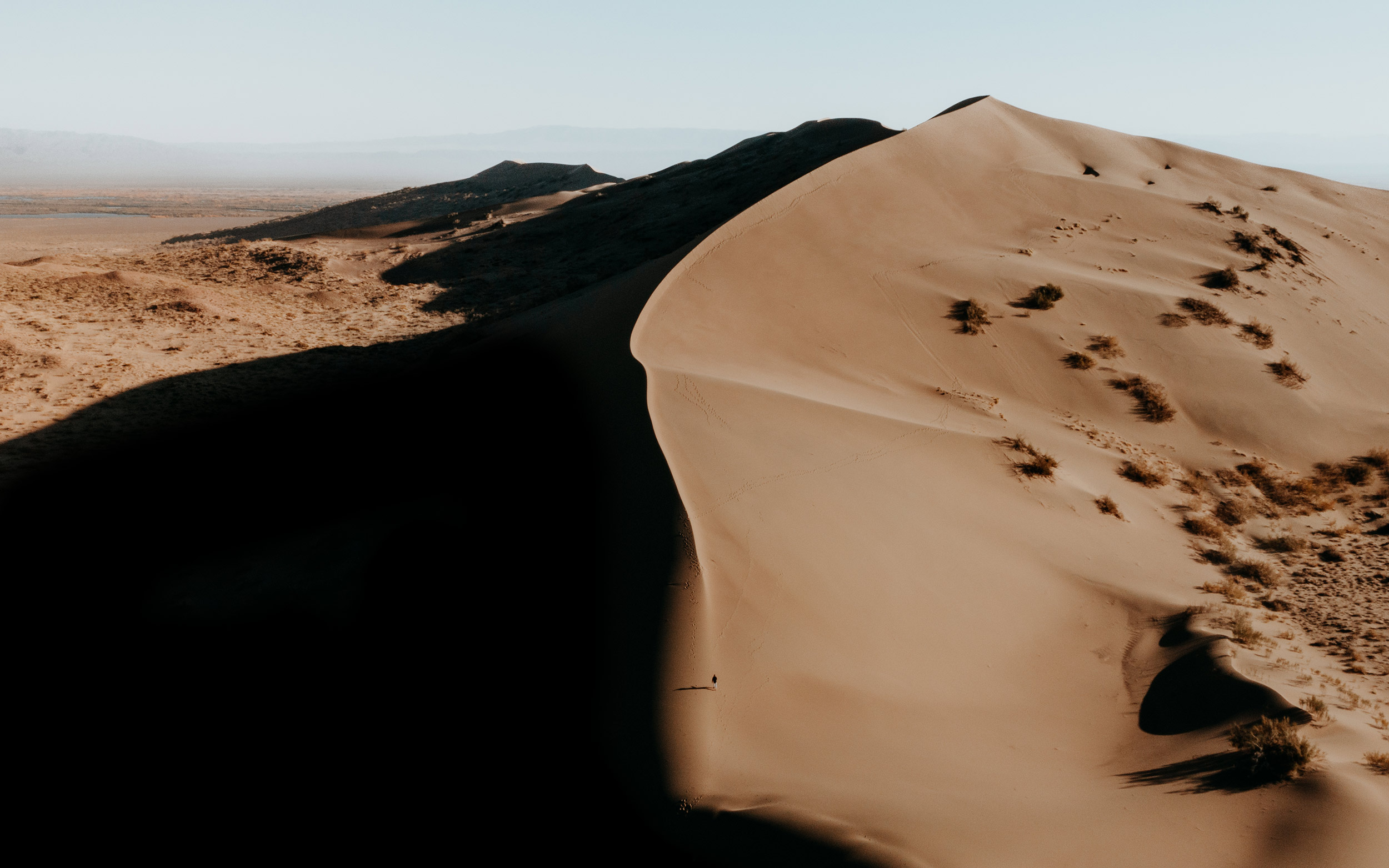
My favourite tours & activities in and around Almaty
If you’re keen to join an organized tour to discover Almaty and its stunning surrounds, here are some of the best-rated tours of the region.
How to get to Almaty
By plane | The Almaty International Airport, situated about 15 kilometres north of the city centre, hosts both Domestic and international flights, meaning you most likely enter Kazakhstan here.
For flights to Almaty, I would recommend Skyscanner. Not only is their website easy to use, but they also offer a large variety of airlines – plus the possibility to find good rates.
From the airport, it’s pretty straightforward to get to the city centre, with local buses running every 15 minutes between 06:00 and 21:00.
But to me, the easiest option is to request a taxi with the Yandex app. From the airport to the city centre will cost between 1.500 and 3.000 KZT ( $3,60 – 7,20) depending on the season.
By car | With its pure untouched nature, Kazakhstan is the perfect destination for an adventurous road trip.
And with most of the greatest things to see and do scattered throughout the vast scenic landscape, renting a car is actually the best way to fully experience Kazakhstan.
Though I was fortunate enough to move around with friends who live in Kazakhstan, I would advise looking into the many car rental options available.
Exploring Kazakhstan on your own terms is in many ways a big, big win. Not only is it significantly easier to venture to the country’s hidden gems, but it’s also time-saving and more comfortable.
For car rental in Almaty, Kazakhstan, I’d highly recommend searching DiscoverCars. They offer excellent service, additional insurance, and a broad selection of cars at an affordable price.
More information and availability here.
By train | Though it’s possible to travel through Kazakhstan by train, I wouldn’t advise it, especially if you have limited time in the country.
Not only is it slow and time-consuming, but train travel also comes at roughly the same price as the way more convenient domestic flights. These flights operate between all the major cities in Kazakhstan.
However, if you insist on experiencing a train journey in Kazakhstan, this website is by far your best bet to arrange your railway adventure.
Stay safe in Kazakhstan | Travel Insurance
Though Kazakhstan is safe for travellers, I always strive to sort out my travel insurance before arriving in a foreign country, and I highly advise anyone else to do the same.
Where we prefer that everything goes smoothly during our travels, something unfortunate can happen at any moment, whether it’s an injury or an accident on the road. When that happens, it is better to be safe than sorry.
Heymondo | Whether you’re going on a 3-week backpacking trip, or planning a long stay somewhere abroad, Heymondo has excellent insurance options either way – plus full COVID-19 coverage and a handy app with 24-hour medical assistance. Readers of WTSW receive 5% off any insurance policy, more information here.
Cheers!
I’ve been on this travel blogging journey since 2019.
If you appreciate what I do here, these are some ways you can support me.

13 Wonderful things to do in Cappadocia, Turkey
Planning to visit Cappadocia, Turkey? In this guide, I’m sharing my favourite things to do in Cappadocia, including a hot air balloon flight, staying in a cave hotel, and hiking trails – plus advice on where to stay, when to visit and transport.
As if lifted straight out of an idyllic dream, the fairytale landscape of Cappadocia has made sure that Cappadocia became a regular on the list of the world’s best travel destinations.
Located in the centre of Anatolia, the Cappadocia region has been a draw to travellers for years. But it is said that the popular region recently transcended itself, welcoming over 3.8 million foreign visitors in the year 2019 alone.
Which to me is no wonder after its renewed fame created by the likes of Instagram.
With its otherworldly landscapes, ‘picture-perfect’ fairy chimneys, and exquisite cave-style hotels sprinkled throughout town, Cappadocia offers its visitors loads of unforgettable travel experiences.
But of course, the main reason why travellers flock to Cappadocia is to tick a once in a lifetime experience off their bucket list; a hot air balloon flight above Cappadocia’s fairytale-like landscape.
While flying a hot air balloon is an absolute must, there is also much more to Cappadocia. Think of historical open-air museums, ancient rock-cut castles, epic sunset points, as well as heaps of adventurous hiking trails.
To help you make the most out of your time in Cappadocia, I’ve put together this guide, including things to see and do and the regions best hiking trails – plus my advice on where to stay, when to visit and transport.
Here’s my definite list of things to do in Cappadocia.
I you choose to use any of the links on this page, I may receive a small commission at no extra cost to you. By using these links, you’ll have a direct impact on WTSW and my ability to continue to create free insightful travel content for you. If you find any of my tips useful, you can support me by buying a virtual coffee here.
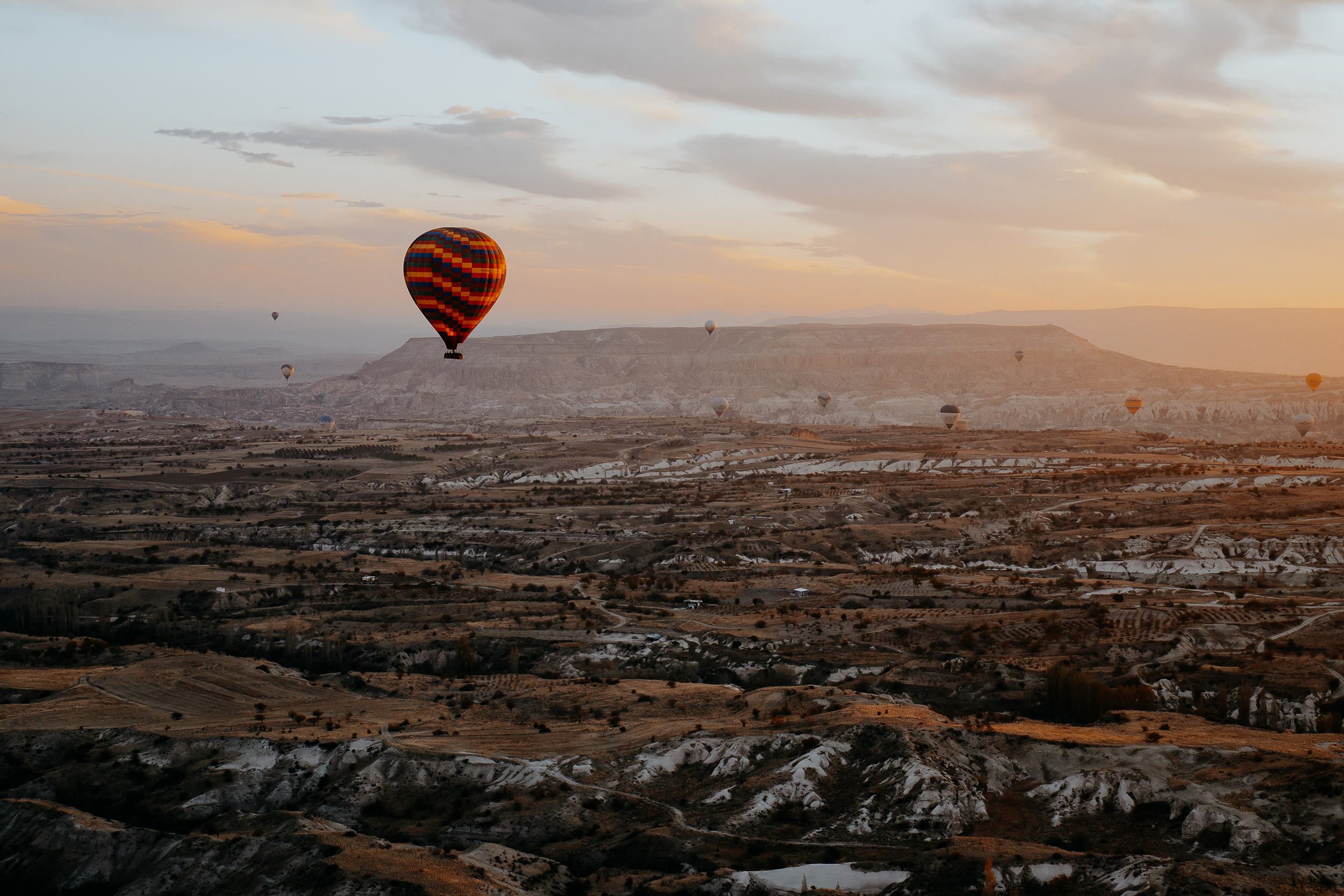
Where to stay in Göreme, Cappadocia
When it comes to accommodation in Cappadocia, Göreme is by far the most popular town from which travellers start their discoveries, and after visiting recently, it is easy to see why.
The historic town is encircled by Cappadocia’s iconic fairy chimneys, has no shortage of brilliant cafes & restaurants, and is home to possibly the world’s coolest accommodations ever; cave-style hotels.
Luckily, these cave-style hotels are found in various price ranges and travel styles, including budget-friendly hostels, family-run hotels, and of course a great number of high-end suites.
Here are some of my personal favourites in Göreme, Cappadocia.
+ Charming Cave Hotel | As mentioned earlier, I was fortunate enough to spend a total of 6 days in Charming Cave Hotel, an authentic family-run hotel, situated at the heart of Göreme. Alongside a ‘picture-perfect’ rooftop terrace, the hotel offers a wide array of cave-style rooms, all marked by amazing design and elegant details. All bookings come with an incredibly yummy breakfast, and organizing a balloon flight is as easy as it gets.
Kelebek Special Cave Hotel | One of the most luxurious options in Göreme, Kelebek Special Cave Hotel provides spacious cave-style suites, a traditional Turkish bath, and a large outdoor swimming pool. Although this extra luxury comes at a cost, I believe, it’s a great value for the money, especially for those who are keen to take it easy after an adventurous day of exploring.
Artemis Cave Suites & Spa | Right at the centre of Göreme Town, Artemis Cave Suites & Spa offers traditional-designed rooms, an authentic rooftop terrace, as well as excellent in-house spa facilities. Rooms starting at just €47,- a night make Artemis one of the best options in Göreme, Cappadocia.
Alternatively, search for accommodations in Göreme, Cappadocia on booking.com.
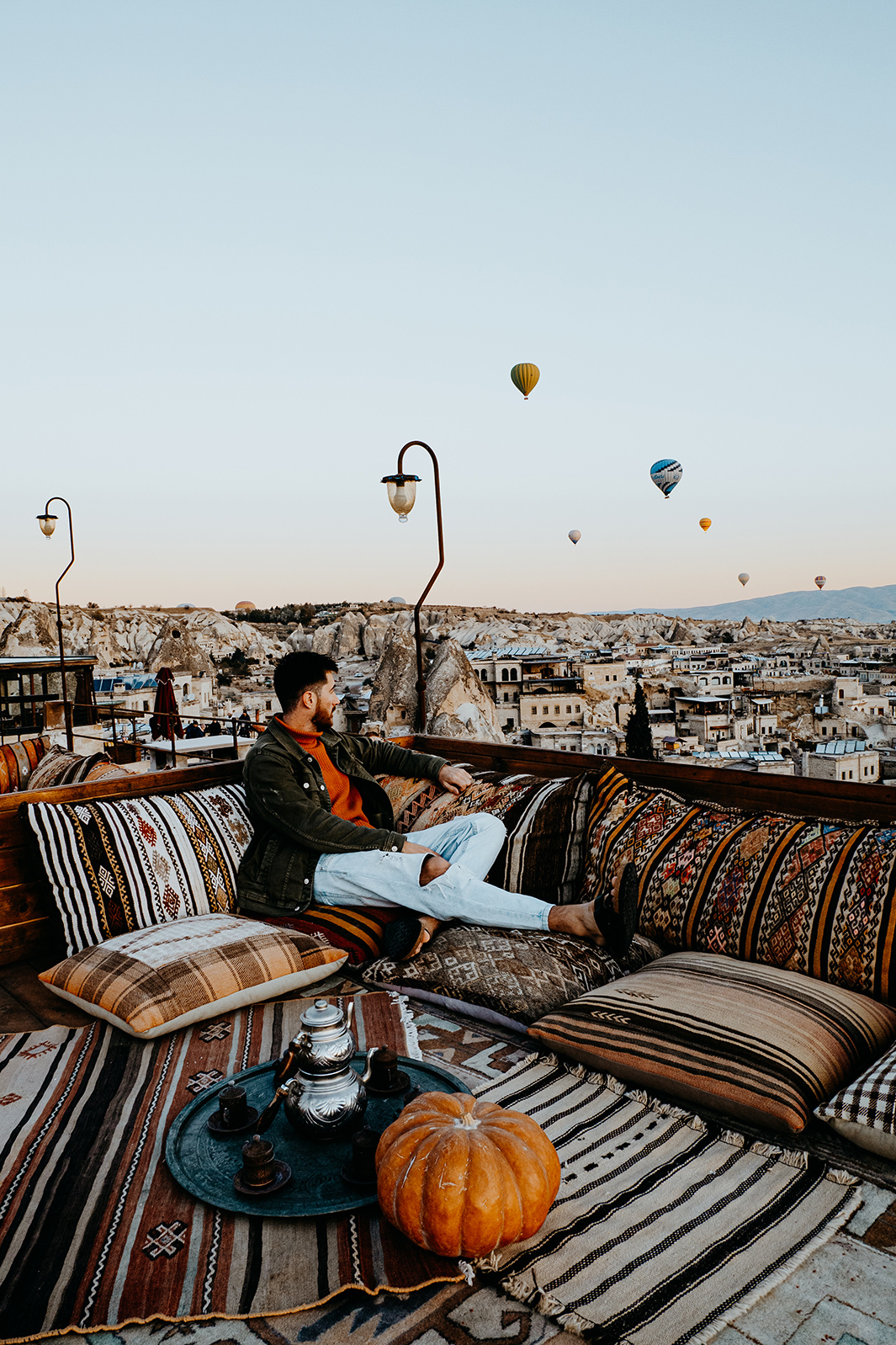
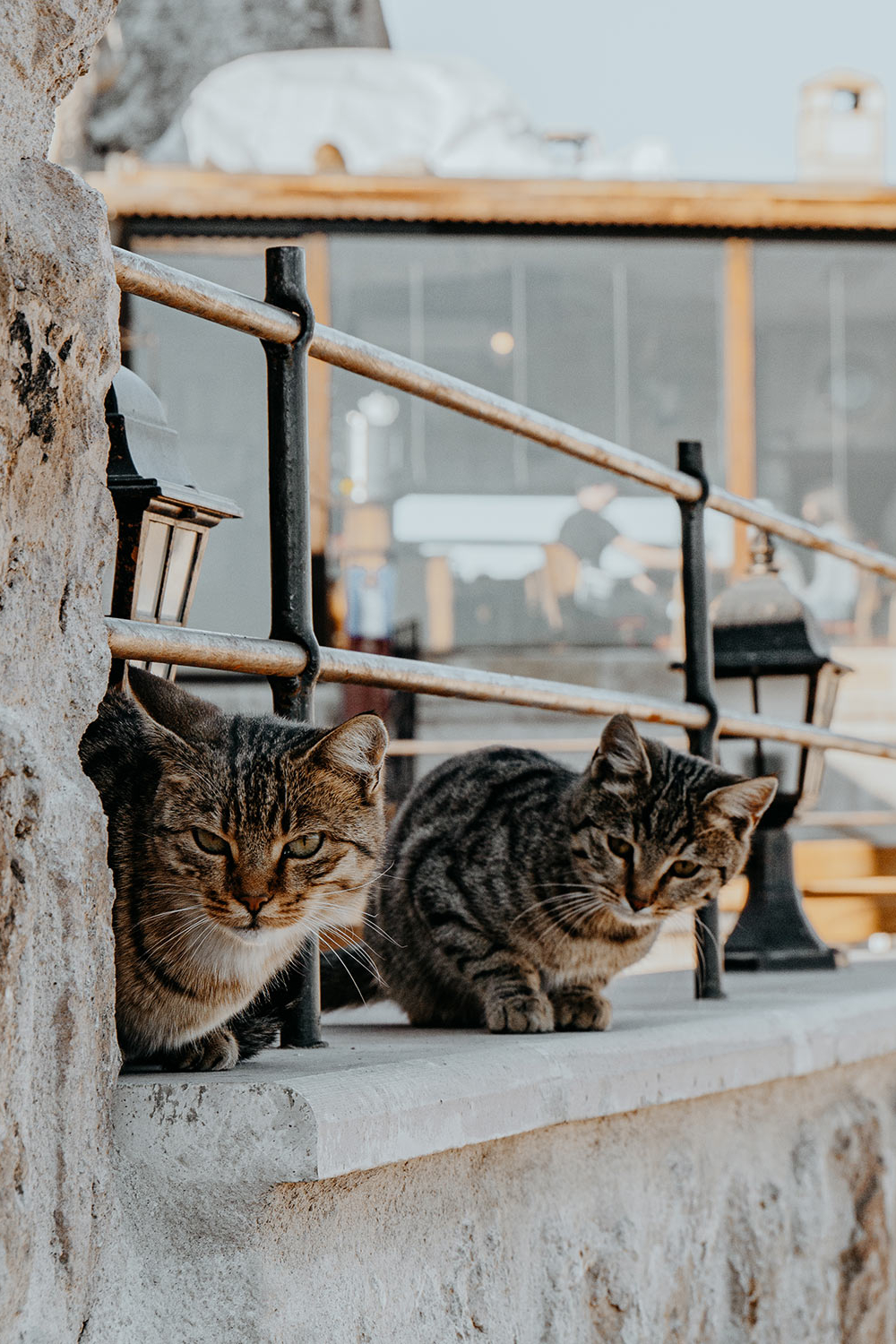
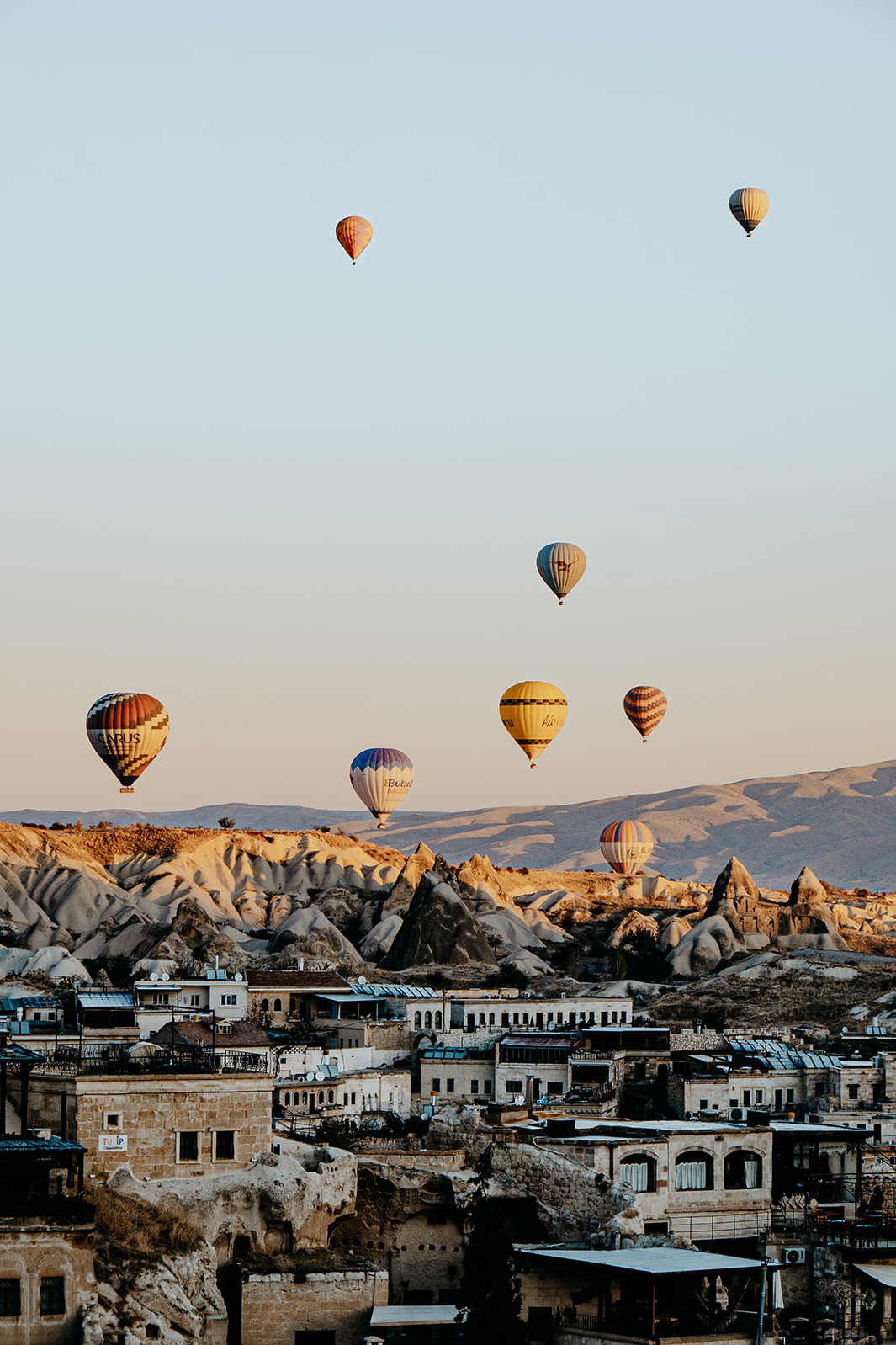
13 Wonderful things to do in Cappadocia, Turkey
1. Admire unique fairy Chimneys at Pasabag Valley
Charmed by Cappadocia’s iconic fairy chimneys, Pasabag Valley is without question, one of the most popular places in the whole of Cappadocia.
And despite that these chimneys are dotted all over Cappadocia, I believe that the very best of ‘em are found in the stunningly beautiful Pasabag Valley.
The small yet impressive valley is home to a wide variety of these unusual earth pillars and is best known for its unique mushroom-shaped chimneys – as the locals like calling them.
As a result, the valley is teeming with travellers and locals, all thrilled to get a glimpse of these unusual chimneys and the well-preserved cave dwellings that surround them.
But what I enjoyed most, was my walk over the wave-shaped sandstone surface that rises high above the valley. From here, you’ll have incredible views over the fairy chimneys, as well as the vast region in the distance.
Note that Pasabag Valley recently requires a small entrance fee, mainly due to that it is still increasing in popularity, with around a thousand visitors per day.
Where | Pasabag Valley, Cappadocia
Opening hours | Daily 08:00 – 19:00 during the high season
Cost | Entrance fee 20 TL (€2,25) per person. This includes entrance to the Zelve Open-air Museum
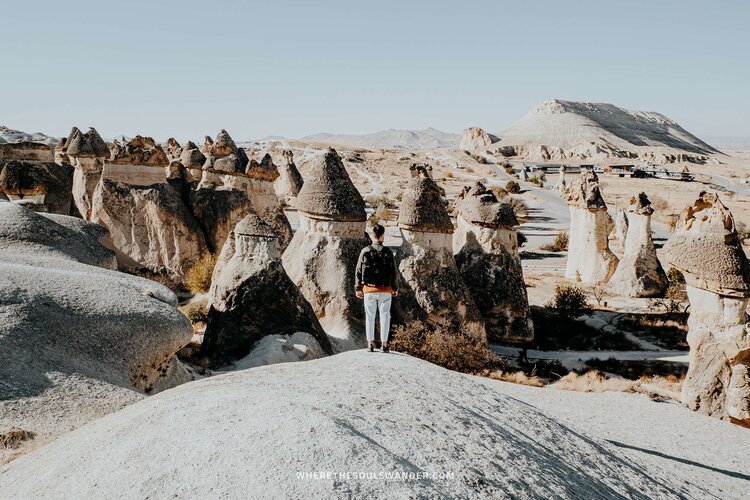
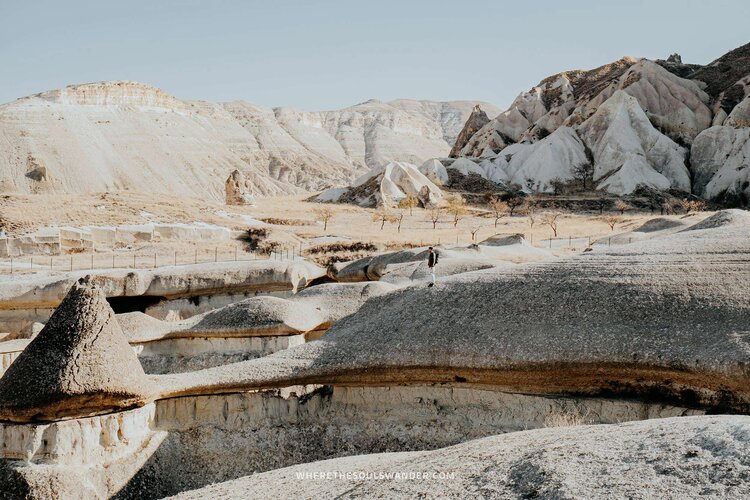
2. Take off in a hot air balloon during sunrise
Every morning during sunrise, hundreds of hot air balloons float above Cappadocia’s unique fairytale-like landscape, creating the picture-perfect vista that initially gave Cappadocia its ‘bucket list’ worthy reputation.
Whilst I never dreamed of seeing Cappadocia’s rugged landscape from the basket of a hot air balloon before I booked my tickets to Turkey, it is easy to understand why it has become one of the world’s ultimate travel experiences.
But I’m happy that one thing often leads to another.
As soon as I planned my stay at Charming Cave Hotel, the amazing staff asked me if I’d liked to take part in a balloon flight, obviously, the answer was yes.
Upon my late arrival in Cappadocia, I was told right away that the wind for the next day was favourable, which implied that a balloon flight would be my first ‘real experience’ in Cappadocia.
That was also the moment when the excitement kicked in.
And take it from me, it is an electrifying feeling to set your alarm at 4 in the morning, knowing you’re about to see Cappadocia’s amazing landscape from a hot air balloon.
The next morning, I was picked up from the hotel at around 04:30. It was dark and cold outside, and I was still sleepy when a short bumpy journey took me to the balloon take-off point. After a short safety briefing, it was finally time to lift off.
In merely 10 minutes, the hot-air balloon levitated to a height of roughly 700 metres, while the rising sun gradually revealed the dreamy landscape beneath – it was extraordinary!
Where | Hotels in Göreme and Uchisar
Cost | Ranging from €80,- to €400,-
Pickup time | 04:30
Recommended tour | This 1-hour balloon flight is your best bet for this once-in-a-lifetime bucket list experience – plus it offers pick-up service at all hotels in Cappadocia.
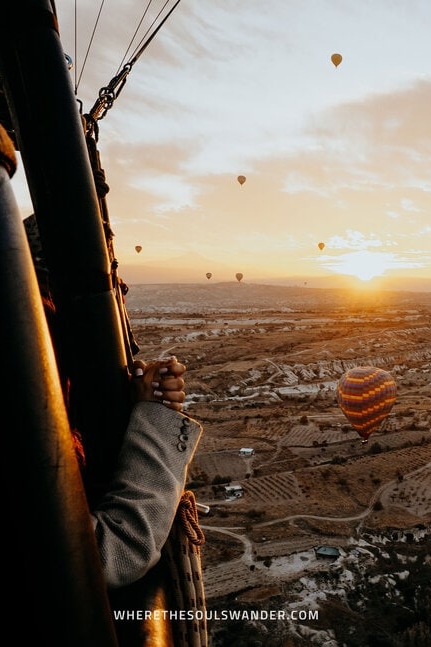


3. Explore the Göreme open-air museum
The UNESCO listed Göreme Open-Air Museum has gradually become a fixture for travellers that flock to Cappadocia, and as a result, the museum is jam-packed with visitors, especially during the high season.
Located only a short distance from Göreme’s lively town centre, the fascinating museum is in my opinion, the perfect introduction to Cappadocia and its rich and intriguing history.
The museum is home to a set of well-preserved cave dwellings, ancient churches and captivating frescoes, respectively showcasing the region’s eventful storyline.
Guided by an in-depth audio tour, the Göreme Open-Air Museum houses more than 35 points of interest, where you’ll be informed on historical facts about the region and its inhabitants.
If you somehow wish to avoid the crowds, make sure you visit the Göreme Open-Air Museum first thing in the morning or in the late afternoon.
Where | Göreme Open-Air Museum, Cappadocia
Opening hours | Daily 08:00 – 19:00 during the high season
Cost | Entrance fee 75 TL (€8,40) per person + 25 TL (€2,80) to visit the Dark Church
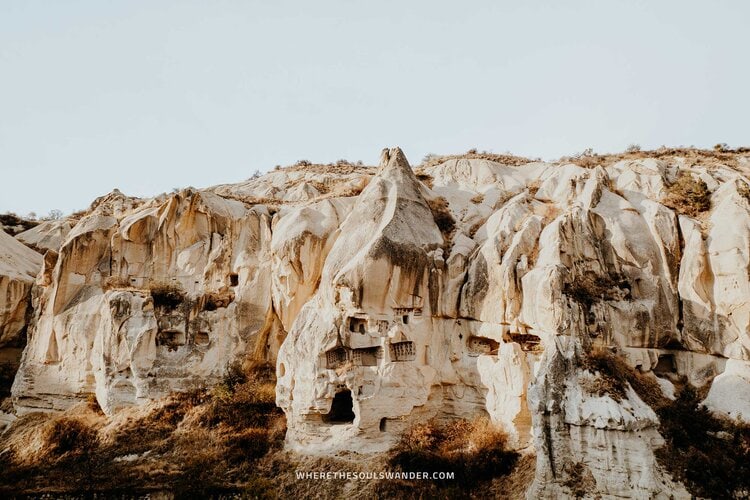
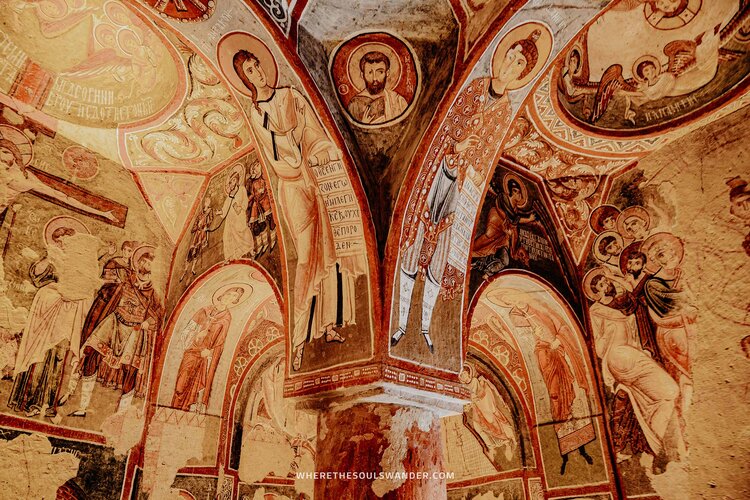
4. Spend the night in an authentic cave hotel
Since ancient times, cave dwellings were accurately carved out of Cappadocia’s distinctive rock formations, and luckily for us, this primitive, yet authentic way of housing is still very much alive.
But at present, these caves are far from the initial design that they had hundreds of years ago.
Instead, those age-old caves now grant a once-in-a-lifetime travel experience.
They are in fact, transformed into unbelievably fabulous boutique hotels, combining the aforementioned primitive lifestyle with amazing design and all kinds of luxury features.
That brings us to my stay at the Charming Cave Hotel, a family-run hotel that offers its visitors one of the most authentic cave hotel experiences in Cappadocia.
With the best rooftop terrace in Cappadocia (and photo possibilities for the IG’ers among us), a wide array of exquisite cave-style rooms, and the most delicious breakfast spread possible, Charming Cave Hotel has actually become one of my favourite hotels I’ve ever stayed in.
But to me, the real draw lies in the fact that they do everything in their power to make you feel at home away from home, and that’s exactly how I felt after spending an entire week here.
So if you’re planning a visit to Cappadocia, make sure you spent some time staying in an authentic cave hotel like Charming Cave Hotel.
To me, it was one of the undisputed highlights of my time in Cappadocia.
Book | Charming Cave Hotel, Cappadocia
Cost | Doubles start at €65,- a night
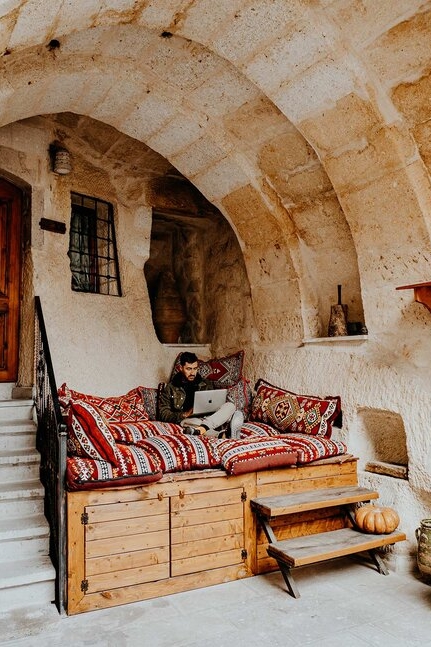
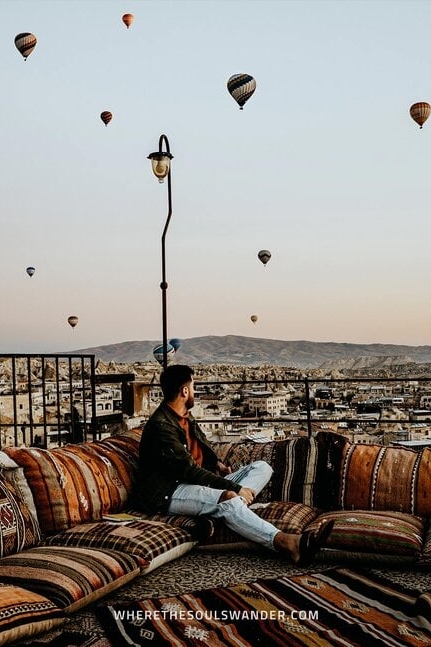
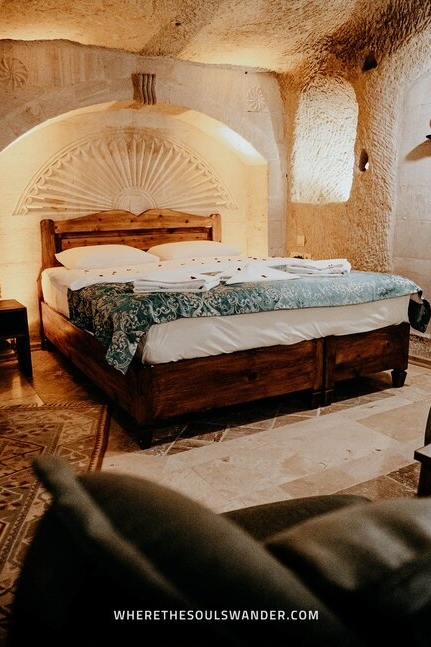
5. Watch an epic sunset at Red Valley
When it comes to hiking in Cappadocia, the Red Valley will always be the topic of conversation.
Marked by a set of rugged mountain ridges and the distinctive Mars-like sandstone out of which they’re formed, the otherworldly Red Valley is a true hiking paradise.
I’d spent multiple afternoons along the dusty hiking trails of Red Valley and found some of Cappadocia’s best cave dwellings, as well as hidden ancient churches that these caves often hold.
One day, I ended up at Red Valley’s famous viewpoint, where I managed to obtain a front-row seat to watch a true spectacle unfold; an epic Cappadocian sunset – it was brilliant!
And while Red Valley is impressive to behold on its own, it’s even better when these sharp sandstone hills bathe in the deep red tones of the setting sun.
Also, if you’re thinking of hiking in Red Valley, make sure you follow the loop with the adjacent Rose Valley – more on that later.
Where | Red Valley, Cappadocia
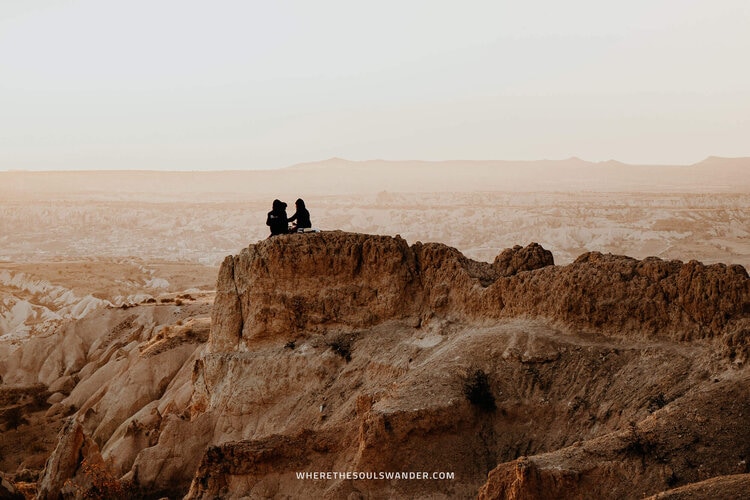
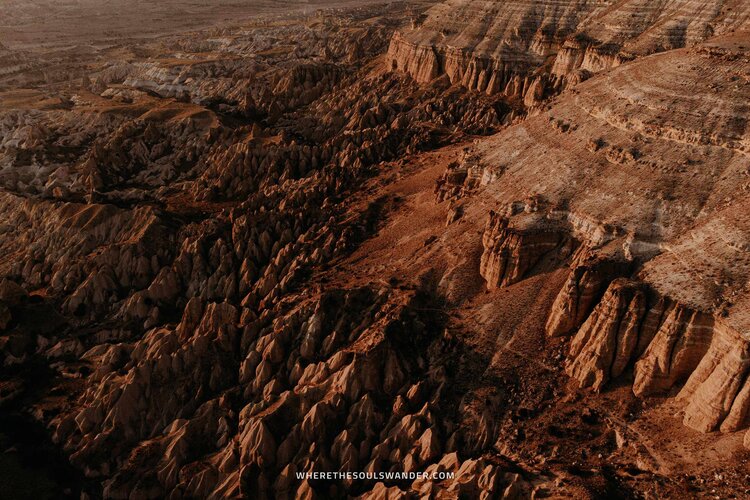
6. Hike the sharp mountain ridges of Rose Valley
Whilst Red Valley claims most of the fame in terms of hiking in Cappadocia, the adjacent Rose Valley is in my opinion equally as impressive.
Distinguished by its unique pink-toned sandstone hills, Rose Valley is no stranger to impressive things to see, with breathtaking rock formations, hidden rock-cut churches and loads of ancient cave dwellings scattered throughout the extensive valley.
With more than 4 kilometres of adventurous paths running through the valley, hikers can truly indulge themselves.
But at times, the trail can be rather misleading, with ‘Rose Valley’ signs leading you to a small cafe in the heart of the valley again and again – perfect marketing if you’ve asked me.
Instead of being frustrated by this smart marketing trick, I advise grabbing yourself a freshly pressed pomegranate juice or a robust cup of Turkish coffee, before sitting down at the cosy terrace and appreciating the mesmerizing scenery that encircles you.
After that, it is time to get back on track, but make sure you don’t forget to explore off the beaten path every now and then.
Where | Rose Valley, Cappadocia
Recommended tour | Though I’d advise visiting Rose and Red Valley during the sunset, this full-day Blue Tour of Cappadocia, is an excellent alternative for those short on time.

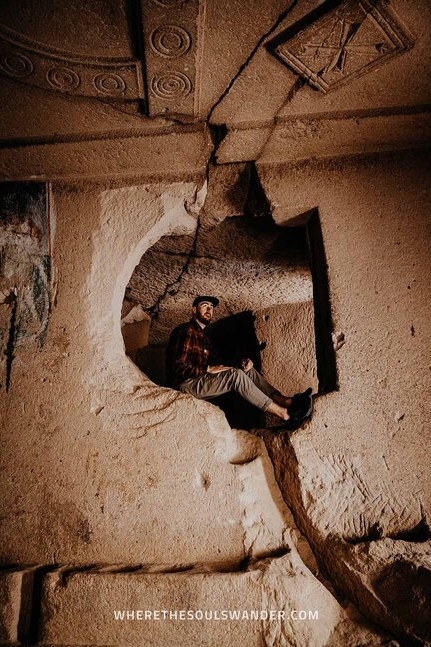
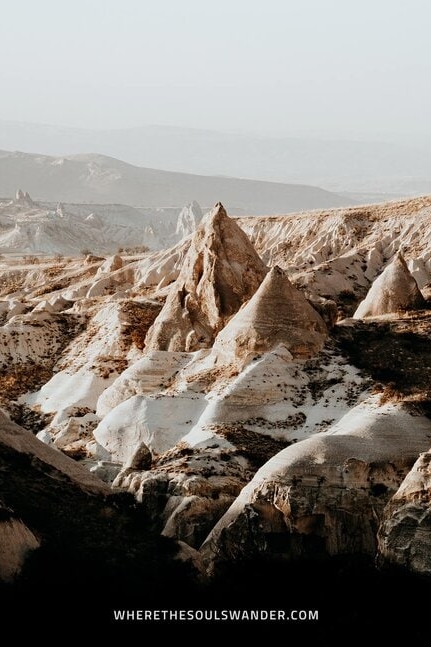
7. Take in the views from Uchisar Castle
Perched atop a remarkable rock formation at the heart of Uchisar Town is the eponymous Uchisar Castle, a former stronghold that once served to protect the region from potential invaders.
Since Uchisar Castle is now marked the highest point of Cappadocia, this ‘time-worn’ citadel provides the most dazzling panorama views of the exceptional landscape of Cappadocia.
On top of that, the underlying town is a fantastic scene to behold, so make sure you take a moment to roam the authentic laneways of Uchisar Town as well.
Depending on how long you’re staying in Cappadocia, the most common way to experience Uchisar Castle is as part of a full-day adventure in combination with Love Valley and Pigeon Valley.
However, if time isn’t a problem, I’ll recommend climbing the castle just before the sun starts setting – Uchisar Castle makes for a brilliant sunset spot in Cappadocia.
For those keen to join a guided tour or follow a strict time schedule, Uchisar Castle is also addressed on the popular Red Tour of Cappadocia.
Where | Uchisar Castle, Cappadocia
Opening hours | Daily 07:30 – 18:30 during the high season
Cost | Entrance fee 10 TL (€1,20) per person
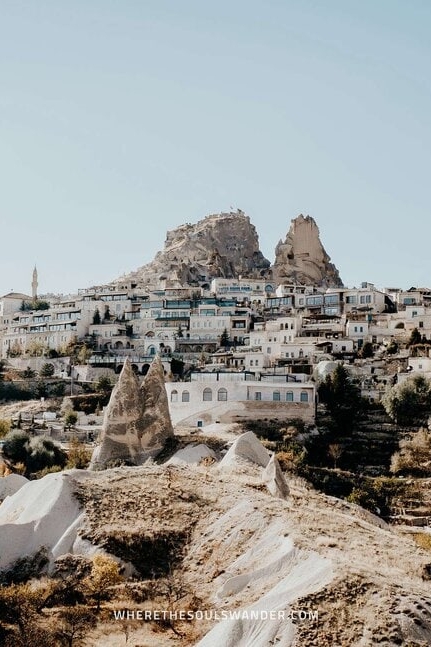
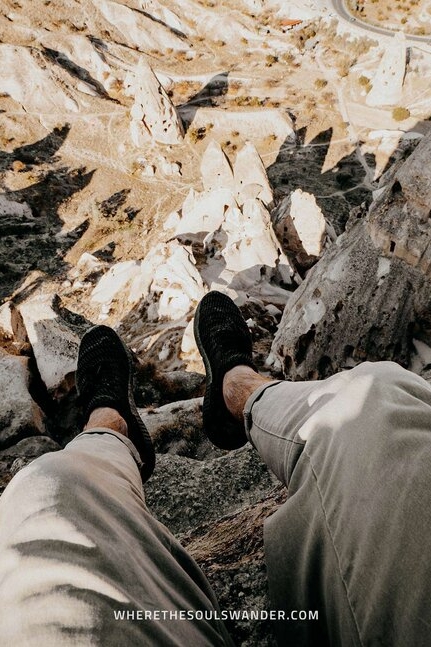
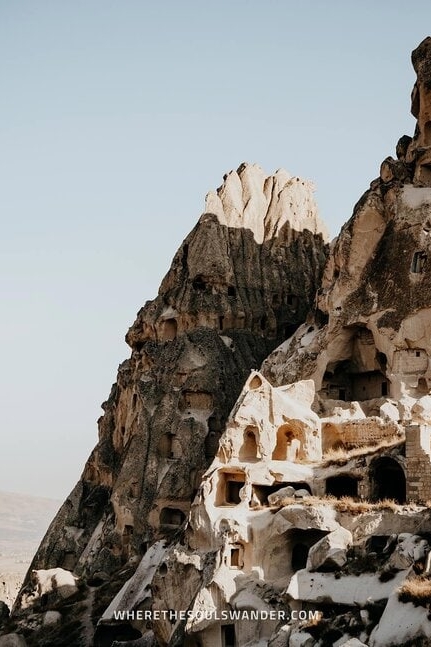
8. Visit Love Valley
Located between the historic towns of Göreme and Uchisar lies Love Valley, a sensational area that is best known for the characteristic rock formations that it holds.
Standing firm on the grounds of the valley, these ancient rock formations are now considered world-famous for their likeness of the shape of masculinity.
It is therefore no surprise that it is said, that these rock formations are single-handedly responsible for the name that was given to the popular valley.
But Love Valley is also much more than these peculiar penis-shaped rock pillars.
When you decide to follow the 2-hour trail in the direction of Uchisar (which you should absolutely do), you’ll stumble upon captivating rock formations, as well as a set of well-preserved cave dwellings and tunnels.
But to me, the best part of Love Valley is just before the end of the trail, when the path takes you through one of the most unique landscapes in Cappadocia, namely a sea of wave-shaped sandstone surfaces.
Hiking in Love Valley has long been one of the best things to do in Cappadocia, and after my recent adventures here, I believe that is more than righteous so.
Where | Love Valley, Cappadocia
Related | A complete guide to Love Valley in Cappadocia
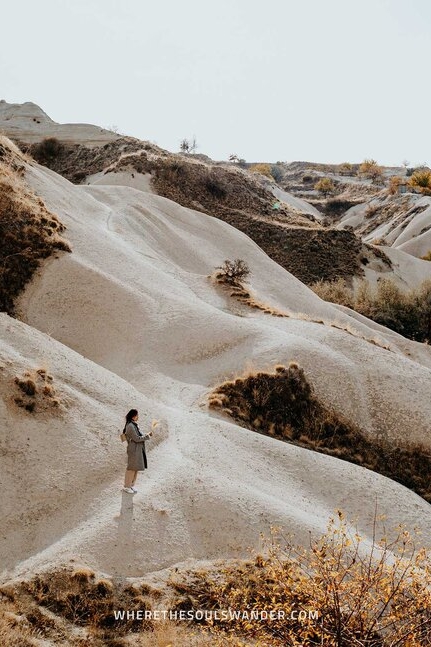
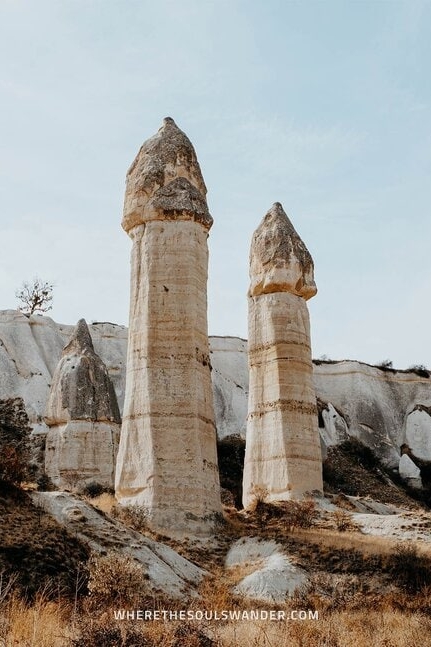
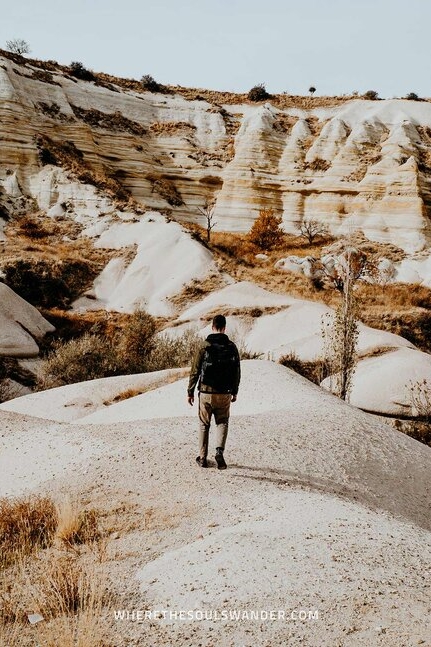
9. Spend sunrise or sunset at Lovers Hill
It is little wonder that Lovers Hill and sunrise are often mentioned in the same breath, as the panorama viewpoint provides some of the most spectacular views in Cappadocia.
When visiting Lovers Hill at sunrise, you’ll be welcomed by wonderful views of the entire region, while loads of hot air balloons gently ascend just about anywhere around you.
It is definitely one of the most exciting ways to kick off your day in Cappadocia, especially if you’re looking to capture the hot air balloon action – believe me, I took way too many shots, as per usual.
But as with many tourist highlights, Lovers Hill is teeming with locals and travellers alike.
Day in, day out.
But hey, don’t let this discourage you from obtaining some of the most enchanting views in Cappadocia.
The same spot also doubles as an epic sunset viewpoint. So if you have spare time, and are looking for a spot to end the day, look no further, this is it!
Where | Lovers Hill, Cappadocia
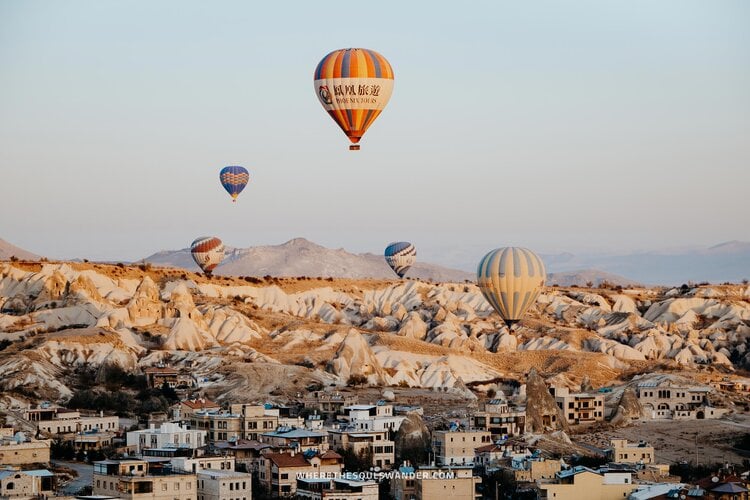
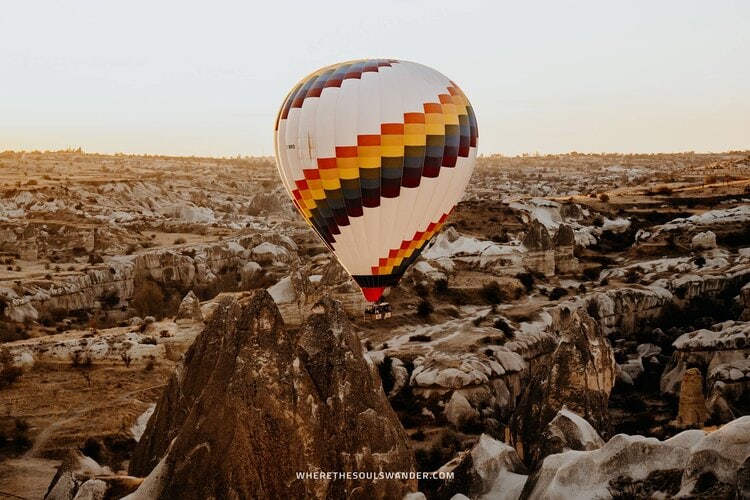
10. Explore the Zelve Open-air Museum
Once home to one of the largest communities in Cappadocia, this extensive cave town is now known as the historical Open-Air Museum of Zelve.
Being situated roughly 8 kilometres from Göreme, Cappadocia’s most popular town, the museum is a bit off the beaten path compared to the Göreme Open-Air Museum.
But despite Zelve’s unfortunate position, I believe a visit is more than worth the extra effort.
Not only is it one of the absolute highlights on any trip to Cappadocia – with its rock-cut churches, impressive cave dwellings and distinctive rock formations, but it is also an incredible place to look into one of the region’s most important settlements.
In my opinion, Zelve is the more interesting option, especially if you consider that it’s less overrun by tourists than its more famous brother; the Göreme Open-Air Museum.
Additionally, I would advise combining your visit with the neighbouring Pasabag Valley.
Where | Zelve Open-Air Museum, Cappadocia
Opening hours | Daily 08:00 – 19:00 during the high season
Cost | Entrance fee 20 TL (€2,25) per person. This includes entrance to Pasabag Valley
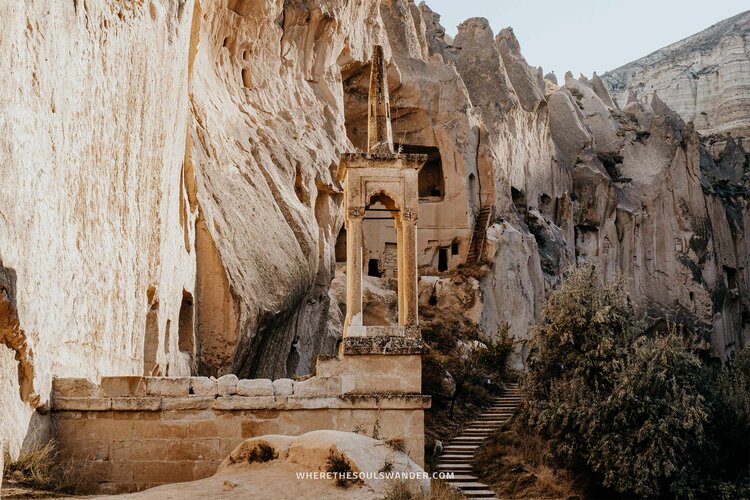
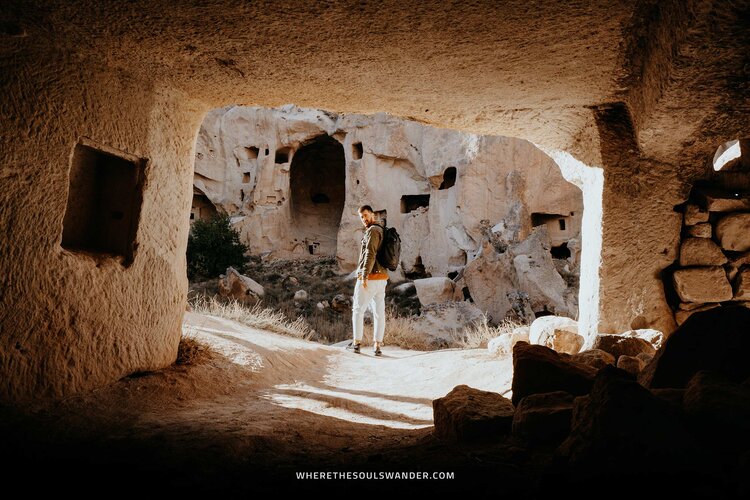
11. Discover the lesser-known Sword Valley
Though I hadn’t read much about Sword Valley when I did my research, it surprisingly became one of my absolute favourite places in the whole of Cappadocia.
The reason for this is that Sword Valley feels as though it is still largely uncharted, especially in comparison to other more popular valleys in Cappadocia.
Despite that it is one of the smaller valleys in the region, Sword Valley instantly managed to channel my adventurous spirit.
During the 2 hours that I walked along the trails of Sword Valley, I stumbled upon incredibly beautiful sword-like chimneys, hidden cave dwellings, as well as a narrow tunnel with a total length of roughly 300 meters – talking about adventure.
Though I was fortunate enough to spend a whole week in Cappadocia, I also realised that most travellers only have a few days here.
That said, I firmly believe that hiking in Sword Valley is one of the most unique things to do in Cappadocia. So if you find the opportunity to stop by, make sure you do!
Where | Sword Valley, Cappadocia
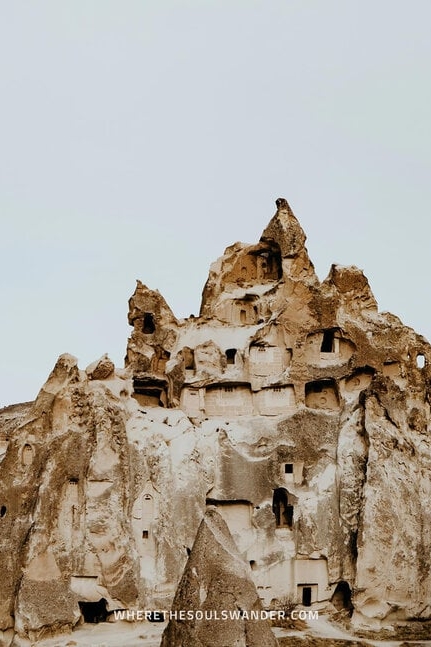
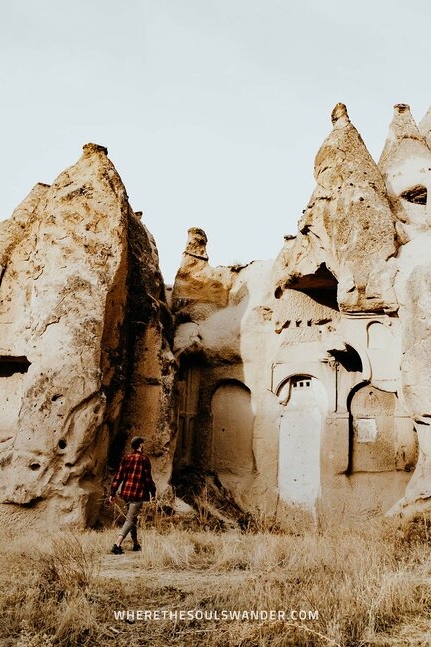
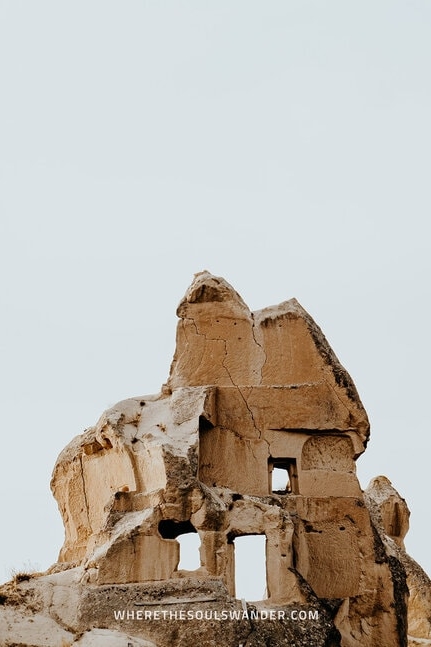
12. Climb Ortahisar Castle
A perfect example of the iconic rock-cut architecture for which Cappadocia is known, is the towering Ortahisar Castle, an 86-metre high rock castle in de midst of Ortahisar Town.
Encircled by the charming little laneways of the time-worn town, this iconic castle is often referred to as one of the best viewpoints in Cappadocia, with views stretching out as far as Uchisar, Göreme and Red Valley.
It is said that the stronghold was first used under Byzantine rule, serving as one of three outposts to protect the region from potential risk.
Another thing worth noting is the fact that Ortahisar Town is considered the epicentre of fruit production in Cappadocia.
As soon as you arrive in Orathisar, you’ll notice thousands of narrow stone holes which have a consistent temperature of 10 °C in both summer and winter, making them perfect for storing fruit and vegetables including Citrus fruits, potatoes and apples.
That said, I believe that Ortahisar is the perfect place to up your ‘history knowledge’ game.
Where | Ortahisar Castle, Cappadocia
Opening hours | Daily 08:00 – 19:00 during the high season
Cost | Entrance fee 10 TL (€1,20) per person
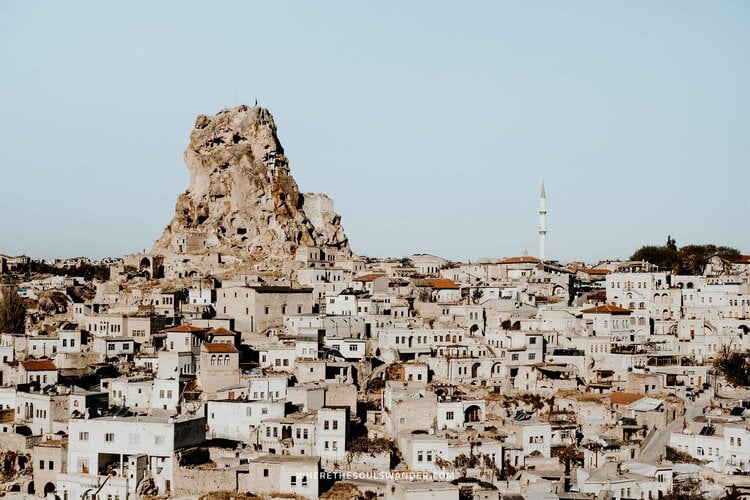
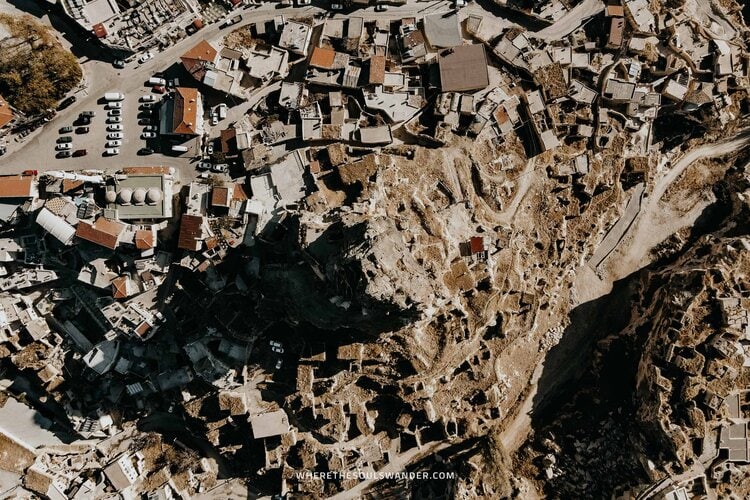
13. Walk Pigeon Valley
With its convenient position between the popular towns of Göreme and Uchisar, the worn-down hiking trails that run through Pigeon Valley are often considered the most popular in Cappadocia.
Known in Turkish as ‘Guvercinlik Vadisi’, the beloved Pigeon Valley earned its name from the thousands of pigeons that actually live here.
Similar to Cappadocia’s cave dwellings, you’ll notice loads of man-made dovecotes in Pigeon Valley, artistically carved into the soft volcanic sandstone of the valley.
It is said that during ancient times, those pigeons played a significant role in the region in terms of natural resources – think food, communication and fertiliser.
As mentioned above, Pigeon Valley is now one of the best areas for walking and is best combined with a visit to Uchisar Castle and Love Valley.
It’s worth mentioning that combining these 3 activities takes a full day of your time in Cappadocia.
Where | Pigeon Valley, Cappadocia
Recommended tour | For those who wish to have the comfort of a guided tour, this full-day Blue Tour of Cappadocia takes you to Pigeon Valley, Red Valley, Rose Valley and more.
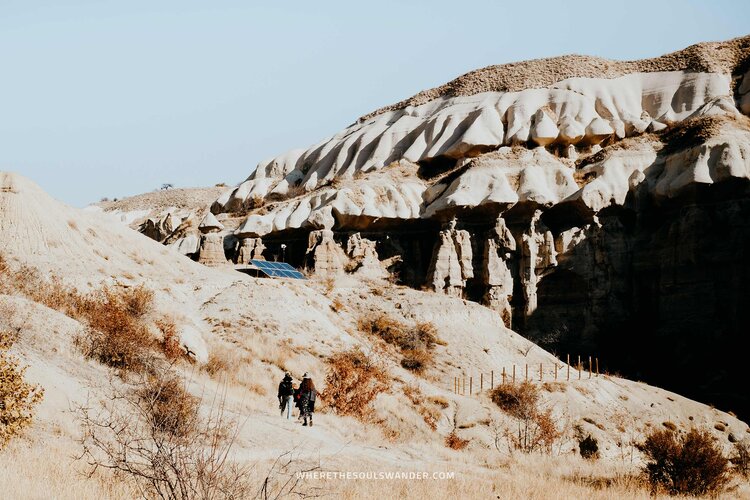
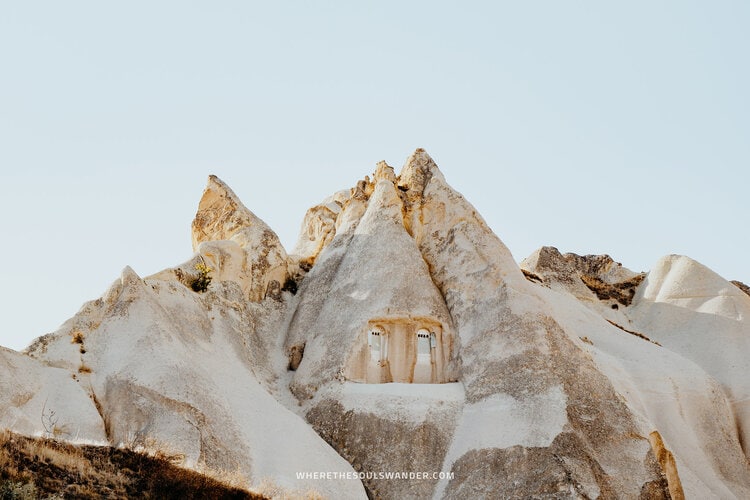
Weather in Cappadocia | The best time to visit
Cappadocia is a region that is absolutely stunning in its own right, and I’m rather certain that its magical ambience knocks your socks off at any time of year.
However, if you’re planning to do any of the incredible activities that I listed above, I believe it’s best to visit just before, or after the peak summer months of June, July and August.
Not only is it slightly too warm for exploring during the peak summer months, but it’s also by far the busiest time of the year, as it’s considered the most popular period among travellers.
This is why I would advise planning your trip for the off-season months of March to May, or September to November.
I visited Cappadocia in early November and was fortunate enough to enjoy excellent circumstances during my entire stay – brilliant for days full of adventures and exploring.
How to get to Cappadocia
FLIGHTS | HOW TO GET TO CAPPADOCIA
Most people think Cappadocia is a town on its own, but in reality, it is an extensive region home to several big cities, including Nevsehir and Kayseri.
The reason why I name these specific cities is due to the fact that they’re both housing an airport and hosting domestic, European and International flights alike.
The most convenient of these two is the Erkilet International Airport in Kayseri, situated about an hour drive North of Göreme. When I searched for a flight to Cappadocia, I noticed that Kayseri was the more flexible option, with more flights, and significantly cheaper prices.
Alternatively, there is the Nevsehir Kapadokya Airport in Nevsehir, at around 40 minutes drive from the Göreme town centre. I myself have no experience with this airport.
For flights to Cappadocia, I would recommend Skyscanner. Not only is their website easy to use, but they also offer a large variety of airlines – plus the possibility to find good rates.
BUS | HOW TO GET TO CAPPADOCIA
From the Erkilet International Airport in Kayseri, it is pretty straightforward to get to Göreme.
Most hotels in the tourist zones of Göreme, Uchisar and Urgup offer shuttle service from and to the airport. Just make sure you confirm this with your hotel during your booking.
Another great option is this shared airport transfer service from Kayseri to Göreme. This service doubles as a transfer to the airport and costs only €12,- for a one-way journey. More information and availability here.
For those after some extra comfort, this air-conditioned private airport transfer from both Kayseri and Nevsehir comes at a great value for the price. More information and availability here.
In terms of transfers, I recommend booking in advance so you don’t have to stress after your flight.
CAR | HOW TO GET TO CAPPADOCIA
If you wish to have the freedom to travel around Cappadocia on your own terms, you might want to consider renting a car. Not only is it easier to reach the highlights, but it also saves you time.
For car rental in Turkey, I would recommend searching for an option that suits your needs on Rentalcars.com. They offer excellent service, additional insurance, and a broad selection of cars, all at an affordable price. More information and availability here.
Safety in Turkey | Travel insurance
While Turkey is completely safe for travellers, I always aim to enter a foreign country with my travel insurance sorted out, and I highly advise anyone else to do the same.
Where we prefer to assume that everything runs smoothly during our travels, the reality is often that something can go wrong at any given moment – when that happens, it is better to be safe than sorry.
Heymondo | Whether you’re going on a 3-week backpacking trip, or planning a long stay somewhere abroad, Heymondo has excellent insurance options either way – plus full covid-19 coverage and a handy app with 24-hour medical assistance. Readers of WTSW receive 5% off any insurance policy, more information here.
World Nomads | If you’re an adventure seeker, backpacker, or planning your once-in-a-lifetime world trip, make sure you check out World Nomads, they designed the perfect travel insurance to help you travel safer and smarter. Do note that they’re not covering covid-19 related claims.
Cheers!
I’ve been on this travel blogging journey since 2019.
If you appreciate what I do here, these are some ways you can support me.

My 2-week Croatia itinerary | Uncover the best of Croatia
Ready to explore the absolute best of Croatia? I’ve got you covered! My in-depth Croatia itinerary includes the best things to see and do, awesome day trips, as well as advice on accommodation, money and transport.
It was a rare, but sunny summer day in the Netherlands when one of my long-cherished dreams spontaneously became reality; a road trip along Croatia’s incredibly picturesque coastline.
From the moment I arrived in Croatia, I felt that this road trip would exceed all of my expectations.
From the picture-perfect fortified city of Dubrovnik to the incredible beaches that are dotted along the coastline of Hvar Island, to the sheer natural beauty of both Krka and Plitvice National Park, to the many attractive medieval towns perched by the Adriatic – Croatia truly is amazing of its own accord.
Having now travelled through Croatia for two weeks, uncovering what I believe to be Croatia’s absolute highlights, it is more than righteous to say that my intuition was bang on.
Croatia was everything I dreamed of, and more.
So, I’ve put together my in-depth Croatia itinerary, including my day-to-day overview – plus all the travel essentials to help you make the most of your time in Croatia.
Here’s my itinerary to uncover the absolute best of Croatia in two weeks.
If you choose to use any of the links on this page, I receive a small commission at no extra cost to you. By using these links, you’ll have a direct impact on WTSW and support me to continue to create free insightful travel content for you. If you find any of my tips useful, you can support me by buying a virtual coffee here.
Where is Croatia
Croatia, officially the Republic of Croatia is situated on the crossroads of Central and Southeast Europe and is encircled by the brilliant company of other fascinating European countries, including Slovenia, Hungary, Serbia, Bosnia and Herzegovina and Montenegro.
Given its position next to the attractive Adriatic Sea, Croatia is considered one of the best beach destinations in the Mediterranean, if not the whole of Europe.
Accommodations | Where to stay in Croatia
Croatia is up there with the best travel destinations in Europe, and I firmly believe that it’s still rising to take a shot at the title.
During my road trip, I stumbled upon a wide array of accommodation options, suiting pretty much every budget and travel preference – think budget-friendly hostels, comfy Airbnbs, and luxury hotels near the beach.
So whether you’re travelling on a tight budget, or looking to find a bit of extra comfort, accommodation in Croatia is simply brilliant.
Those travelling on a budget could find options for as cheap as €50,- per night, while those keen to spend a little extra have plenty of options within the €50 – €200 range.
As a solo traveller, my favourite website for finding accommodation in Croatia is booking.com.
I’ve also shared the accommodations I visited in Croatia, which I listed at the end of every destination within this itinerary.
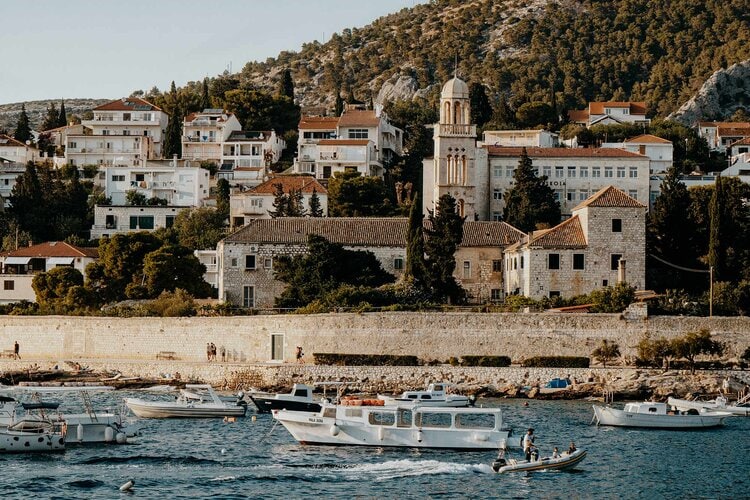
My 2-week Croatia itinerary | Day to day overview
Day 1 – 3 | Split
The first point of interest on this Croatia itinerary is the vibrant coastal city of Split, where you most likely arrive by plane via the Resnik International Airport.
If you ask me, Split makes for the perfect destination to kick off this itinerary.
Nestled on the picturesque Dalmatian coast, this vibrant coastal town has no shortage of excellent things to see and do, while it’s also a great place to get a feel for Croatian culture and its local life.
For those two reasons, I’d recommend spending at least three days here. This allows you to get your bearings – plus take in Split’s rich and captivating history.
SPLIT | MY HIGHLIGHTS
Diocletian’s Palace | Right at the heart of Split Old Town lies Diocletian’s Palace, an extraordinary palace that is among the most captivating Roman structures in the world. For the best experience, I advise walking the palace first thing in the morning, when the picturesque alleyways around the Peristyle are still ‘relatively’ empty. For those looking to join a guided tour, this 2-hour walking tour of Diocletian’s Palace takes you along all the important structures.
FIG Split | If you’re anything like me, and enjoy creative cuisine, make sure you head over to FIG, a contemporary restaurant that serves the most delicious food. Located in the vibrant streets of Split Old Town, this restaurant is an absolute must-visit. One thing I highly recommend you to try is their incredibly tasty Chimichurri Potatoes.
Klis Fortress | Although the Klis Fortress is located somewhat remote, I sincerely think that this stronghold is worthy of a visit, especially if you’re keen to learn more about the area’s rich and intriguing history. One thing worth noting is that the ancient fortress doubles as the slave city of Meereen in HBO’s blockbuster series Game of Thrones.
Where | Split
Where to stay in Split | I stayed at Ciri Biri Bela and had an excellent time here. Additionally, I would recommend Grgur Ninski Rooms.
Related | Check out my Split guide for inspiration, travel advice and all the essentials.
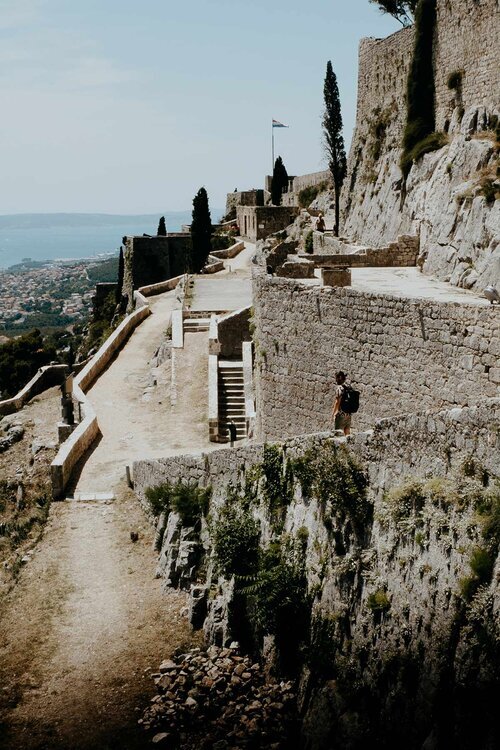
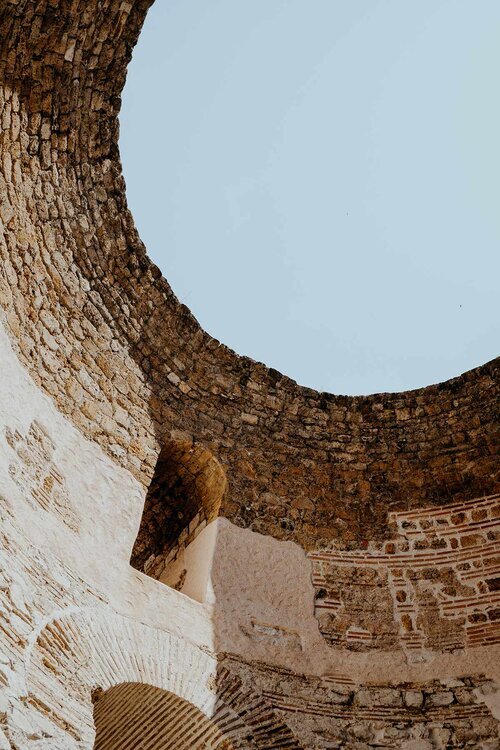
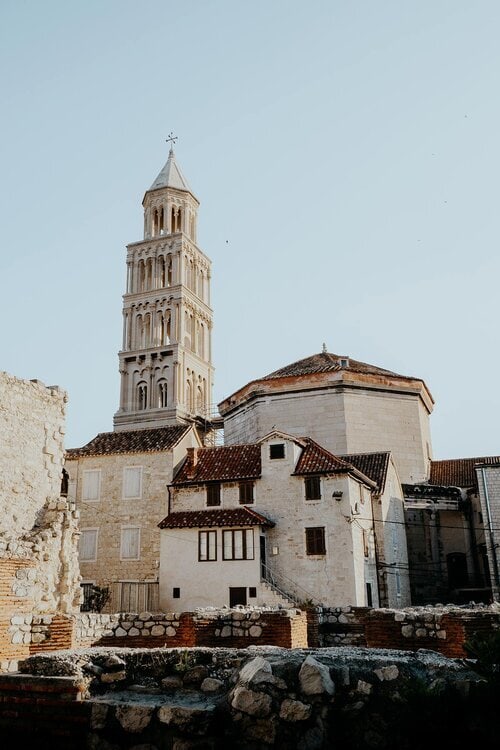
Daytrip | Krka National Park
Croatia is home to some of the most impressive national parks in Europe, and one that I believe should be on any Croatia itinerary is the exceptional Krka National Park.
Named after the eponymous Krka River, the stunningly beautiful Krka National Park is an unaltered nature reserve that is defined by gushing waterfalls, picturesque lakes, and loads of rippling rapids and rivers.
The natural beauty of the park is simply breathtaking; Roški slap, Visovac Island, and the viewpoint at the Oziđana pećina cave, just to mention a few.
With its convenient location at only 1 hour north-west of Split, the Krka National Park is easily, and best visited in the form of a day trip – this can be done by car or as part of an organized tour.
I took part in this full-day Krka National Park + Sibenik tour and had the most wonderful time.
Where | Krka National Park
Opening hours | Daily 08:00 – 20:00 during high season, more information here.
Cost | Entrance fee single 300 HRK (€40,-) per person
Recommended tour | This full-day Krka National Park tour takes you along the best waterfalls, plus a visit to the historical city of Sibenik.
Related | Check out my Krka National Park guide for inspiration and travel tips.
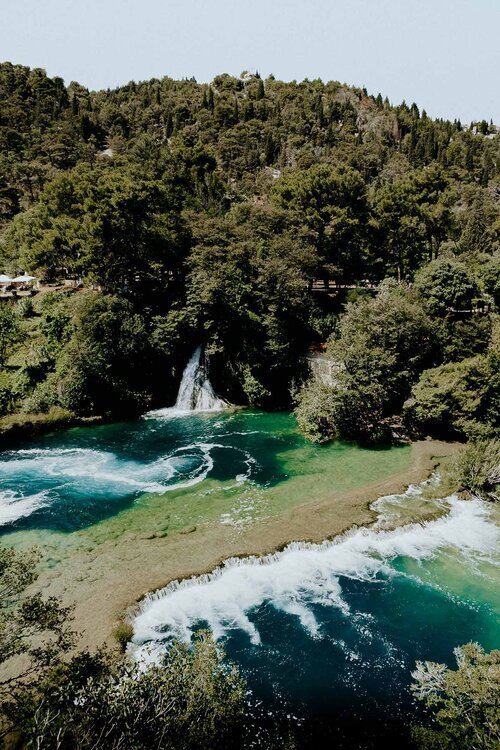
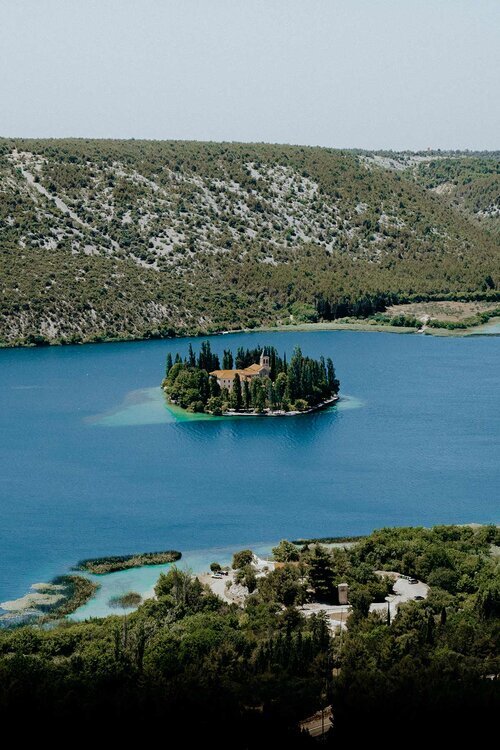
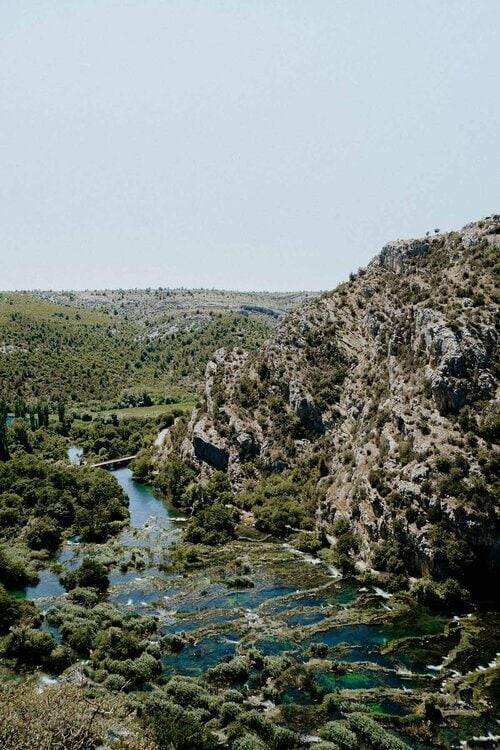
Day 4 – 6 | Zadar
After discovering Split and its surrounds, it’s time to head further west to Zadar, a laidback coastal town that wasn’t initially included in my Croatia itinerary.
But that’s what I love most about travelling, it gives you the freedom to go with the flow – and that’s exactly what I did.
And to me, Zadar was a welcoming surprise.
Not only is it the perfect base from which to explore the ‘must-see’ Plitvice National Park, but it’s also a town that knows how to impress travellers of its own accord.
The old town showcases the rich influences of ancient Roman civilization and has a lot of interesting things to see and do – while on the other hand, you’ll have the option to take it easy in one of the many trendy bars and restaurants.
Zadar Old Town provides its visitors with an authentic Balkan summer experience, and is the perfect place to chill out for a few days – so I advise spending at least two full days to take it all in.
ZADAR | MY HIGHLIGHTS
Zadar Sea Organ | Perched on the edge of the Riva is the Zadar Sea Organ, an architectural sound art object, that is without a doubt my favourite point of interest in Zadar. The innovative art installation follows the flow of the Adriatic and creates random, yet calming sounds via the 35 organ pipes that lay beneath the marble steps of the Riva. You have to hear it to believe it.
The Roman Forum | As mentioned above, Zadar was once part of the prosperous Roman empire, and as a result, it is teeming with beautiful architecture, with the Roman Forum at the heart of it all. Situated at the epicentre of Zadar Old Town, the Roman Forum is literally and figuratively unmissable, and that’s a good thing.
Bazen Kolovare | For those after a day of relaxing, make sure you visit Bazen Kolovare, a large natural swimming pool that is the perfect cure during the sizzling summer days. If you’re considering visiting, remember to bring your swimsuit, a good book and some suncream.
Where | Zadar
Where to stay in Zadar | I stayed at Boutique Hostel Forum and Apartments & Rooms Mareta, and both exceeded my expectations.
Related | Check out my Zadar guide for inspiration, travel advice and all the essentials.
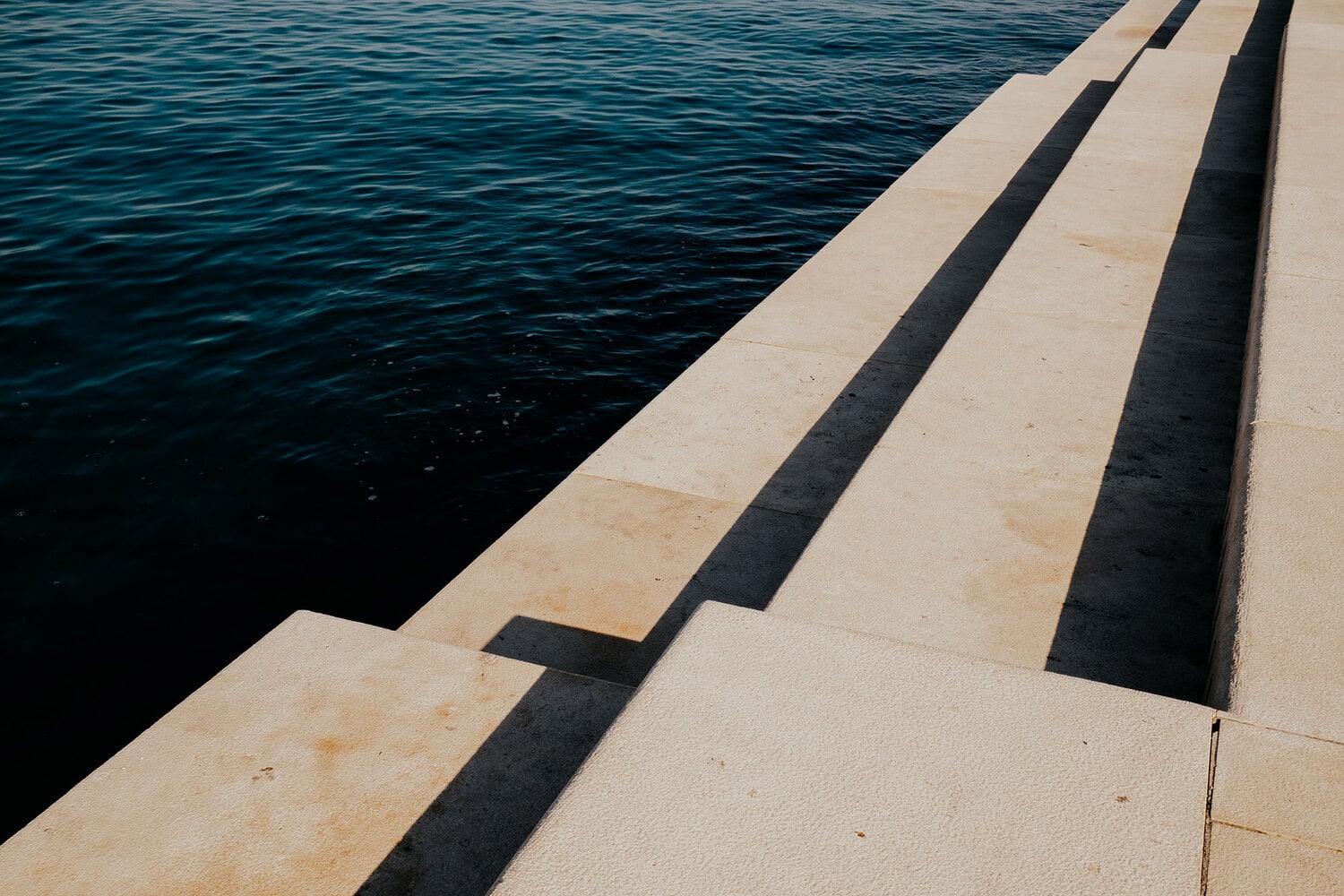
Day trip | Plitvice National Park
Plitvice National Park is, without question, one of the definite highlights of this two-week Croatia itinerary.
Just north of Zadar, and perfectly explored as part of a day trip lies the Plitvice National Park, an extensive forest reserve that truly is a spectacle to behold.
The UNESCO-listed National Park is marked by an exceptional mix of idyllic waterfalls, large interconnected lakes, and lush greenery all around.
That said, the extensive Plitvice National Park is divided into two sections – the Upper Lakes (Gornja Jezera) and the Lower Lakes (Donja Jezera), both equally beautiful and worthy of a visit.
Also, there is no shortage of adventurous walking trails, which makes it perfect for those after an active day in Croatia’s untouched nature.
Though you’ve probably seen it pass by on your Instagram feed over a thousand times, I’m here to say that it is even more beautiful up close and personal.
Where | Plitvice National Park
Opening hours | Daily 07:00 – 20:00 during the high season, more information here.
Cost | Entrance fee 300 HRK (€39,70) per person
Recommended tour | This full-day Plitvice National Park tour from Zadar uncovers all the highlights of the unique Plitvice National Park.
Related | Check out my Plitvice National Park guide (coming soon) for more inspiration and advice on how to visit responsibly.
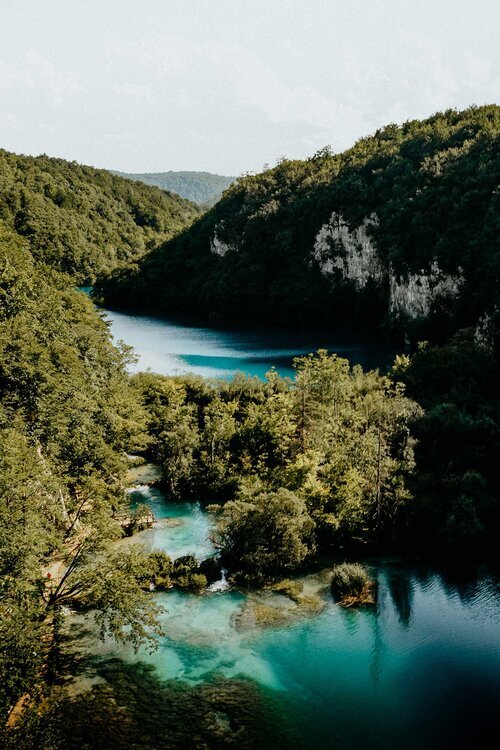
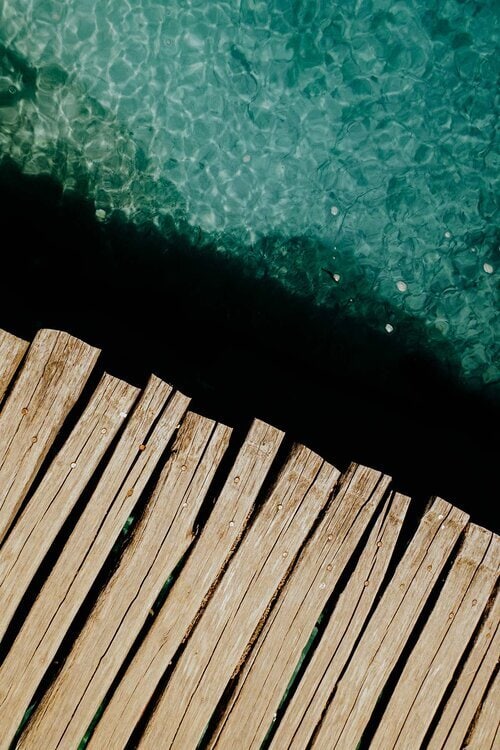
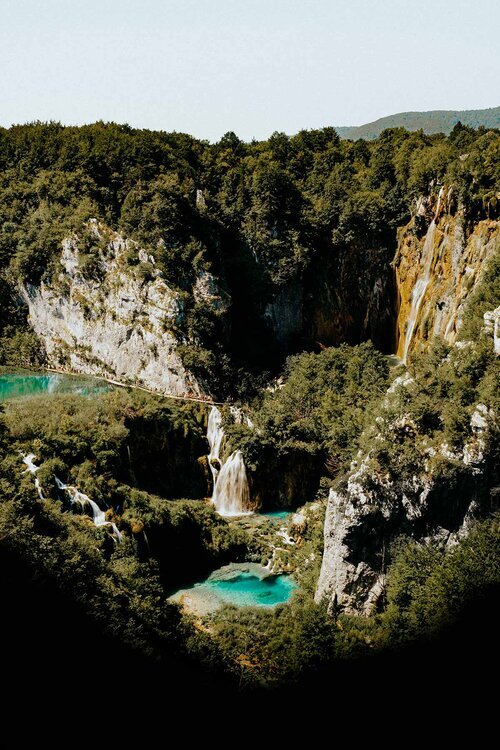
Day 7 – 10 | Hvar
Following a pleasant few days in Zadar, and an awesome day trip to the Plitvice National Park, the time has come to head for the next stop on this Croatia itinerary, the enchanting island of Hvar.
And as soon as I’d set foot on Hvar, the postcard-perfect island captured me with its charm.
Situated amid the Adriatic, off Croatia’s Dalmatian coast, lies the island of Hvar, a paradisiac island that is among the most popular destinations in Croatia, if not the most popular.
Like most places in Croatia, the old town is beautiful as ever – think intriguing Venetian architecture, narrow cobblestone streets, and well-preserved ancient fortresses.
Also, Hvar is home to some of the most idyllic beaches in the whole of Croatia. Add the mouth-watering Dalmatian cuisine, and Hvar turns into the island you’ve always dreamed of.
Be warned though, the laidback island life is pretty damn tempting, inviting you to spend all your time here. Look, it’s not a punishment – not at all, but there’s more of the good stuff waiting for you in the remainder of this itinerary.
For that reason, I recommend spending three to four days on Hvar. By doing so, you have all the time to explore the island, while there’s also enough time for sunbathing and swimming.
HVAR | MY HIGHLIGHTS
Hvar’s stunning beaches | Woohoo, the beach is part of your daily routine when on Hvar Island, and that’s an absolutely good thing if you ask me! With no shortage of picture-perfect beaches, Hvar is easily one of the best beach destinations on this Croatia itinerary, making it perfect for lazy days full of sunbathing and swimming. If you’re looking to uncover the best beaches of Hvar, make sure you check out my in-depth Hvar guide.
Hvar Fortress | Settled high above Hvar Town is the Hvar Fortress, a former stronghold that provides the most dazzling views of Hvar’s harbour and the stunning Pakleni Islands in the distance. The rustic fortress dates back as far as the 13th century, and a visit gives you an understanding of its eventful history. I’d highly recommend visiting just before sunset, especially if you’re into photography.
Franciscan Monastery | The ancient Franciscan Monastery is in my opinion the most iconic point of interest in Hvar. Luckily for you, this impressive monastery is easily admired on a relaxing morning walk on its adjacent promenade. For those into history, the monastery doubles as a museum, so make sure to have a look inside, it is worth it.
Where | Hvar
Where to stay in Hvar Town | I stayed at Villa San Marco and White Rabbit Hostel.
Related | Check out my Hvar guide for inspiration, travel advice and all the essentials.
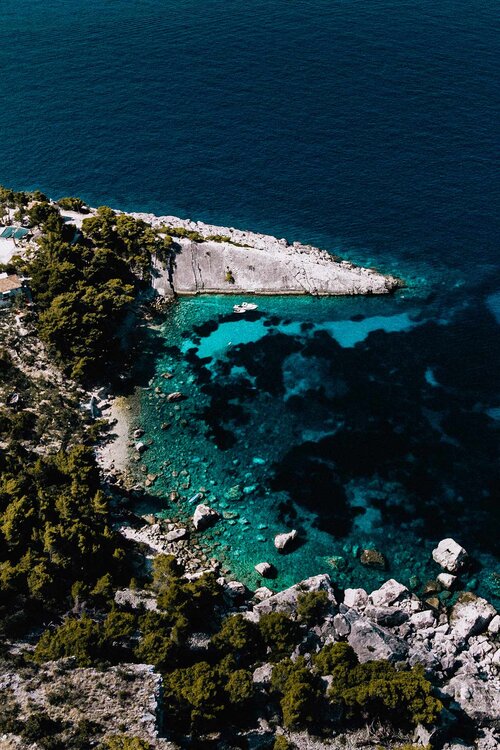
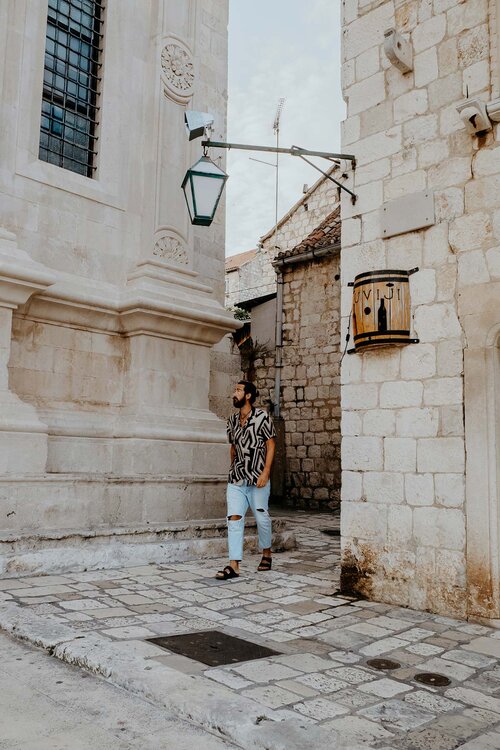
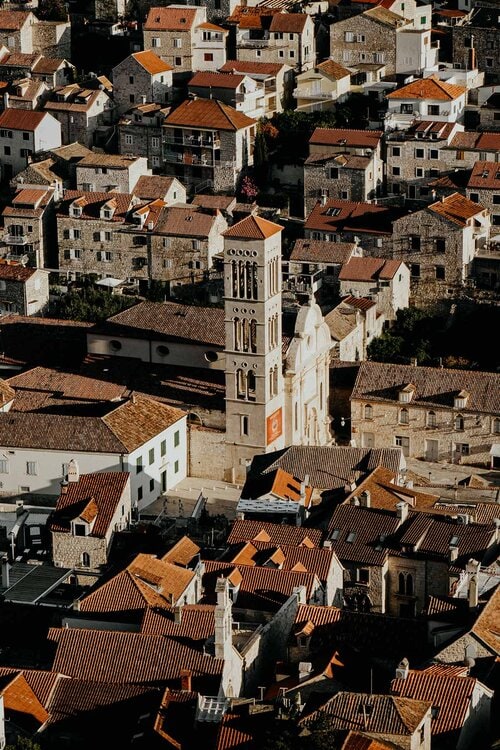
Day 11 – 12 | Korcula
After uncovering just about every square inch of Hvar, it is time to grab a ferry to the next destination on this itinerary; the island of Korcula, a scenic island that is all about local life and its traditions.
Even though Korcula is fairly compact, the eponymous old town isn’t inferior to other destinations included in this itinerary. It is in fact, one of the most authentic places that I visited during my two weeks in Croatia.
The historic old town is encircled by towering fortifications and is defined by charming little laneways, ornate time-worn buildings and a well-balanced mix of ‘real’ local eateries and bars.
It is, therefore, no wonder that Korcula is recognised as one of the best-preserved medieval towns in the Mediterranean, and believe me, it’s more than deserved.
It’s a town where life slows down a tad, and to me, that was as a welcome surprise after several days of exploring and creating.
For the best experience, I advise spending at least one day in Korcula, allowing you to get a feel for the town and the magical ambience that prevails here.
KORCULA | MY HIGHLIGHTS
The Marco Polo House | One of the undisputed highlights on a visit to Korcula is the house of Marco Polo. Although we’ll never know for sure, local legend has it that famous world traveller Marco Polo was born in Korcula. Whether you believe it or not, the time-worn house is quite appealing, and therefore worthy of a visit.
St. Mark’s Cathedral | Situated in the heart of Korcula Old Town is the impressive St. Mark’s Cathedral, a towering church that is marked by locally obtained limestone, intriguing details, and an ornate Gothic-Renaissance style. For those looking to see Korcula from above, make sure you visit the bell tower, which is considered the highest point of the old town.
Where | Korcula
Where to stay in Korcula | I stayed at White House Apartments and B&B Ghetto.
Related | Check out my Korcula guide for inspiration, travel advice and all the essentials.
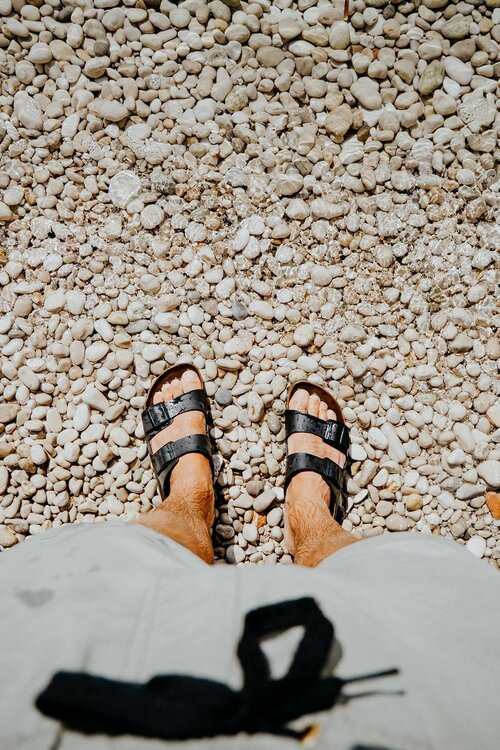
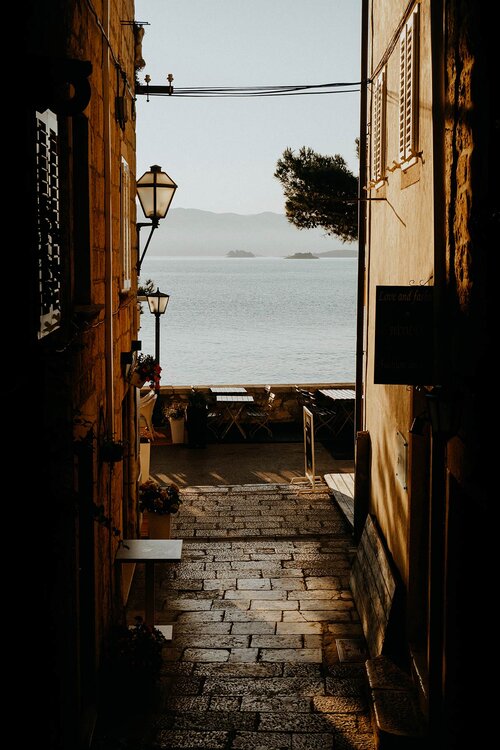
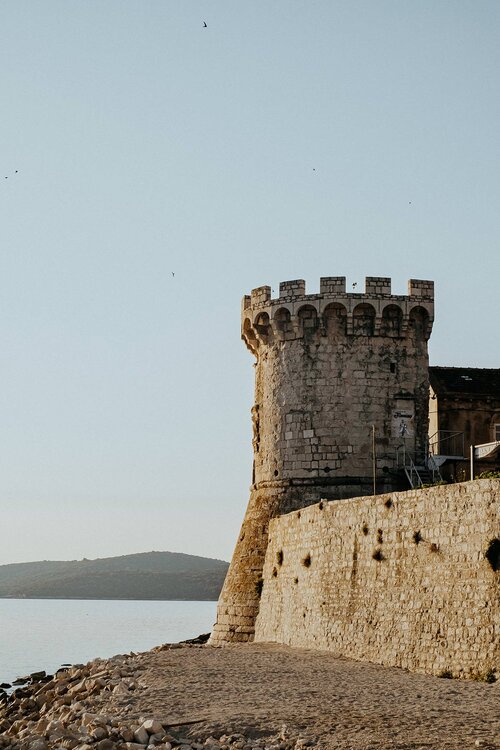
Day 12 – 14 | Dubrovnik
I often hear the saying, save the best for last, and this is clearly also the case with this itinerary.
That brings us to Dubrovnik, one of the places that I’ve dreamed of visiting, long before I planned this spontaneous road trip within Croatia.
The picture-perfect fortified city next to the turquoise waters of the Adriatic – internationally known as Kings Landing in HBO’s blockbuster series Game of Thrones, is without question the most appealing old town I’ve ever set foot in.
But it’s not just a pleasure for the eye – the medieval town is a vibe on its own.
To tick off the best things to see and do, and appreciate Dubrovnik fully, I believe you should stay at least two days here – you might even want to stay longer than planned – yes, it’s that awesome.
As with all destinations on this itinerary, Dubrovnik is best explored at a slower pace. If you somehow wish to squeeze it in a shorter visit, make sure you check out my Dubrovnik guide.
DUBROVNIK | MY HIGHLIGHTS
Dubrovnik City Walls | I believe it’s right to say that a visit to Dubrovnik isn’t complete without a walk atop of the town’s intriguing city walls. The two-hour walk provides the most fascinating vistas of Dubrovnik’s scenic time-worn buildings, with the shimmering Adriatic as its backdrop.
Mount Srd | Talking about views, another great point of call is Mount Srd, an extraordinary vantage point that rises high above Dubrovnik. From the summit, you’ll be welcomed by striking views of Dubrovnik’s iconic terracotta roofs, as well as Lokrum Island in the distance. All in all, Mount Srd makes the ideal place to watch a stunning Croatian sunset unfold.
Walk the old town | Any trip to Dubrovnik should obviously involve at least one full day to behold the ornate historical buildings that are dotted throughout the old-fashioned streets of the old town. However, as one of Croatia’s most visited destinations, it is wise to wake up early for this one, especially during the peak summer months. For those looking to join a guided tour, this 1.5-hour walking tour of Dubrovnik Old Town includes the most important structures.
Where | Dubrovnik
Where to stay in Dubrovnik | I stayed at Hostel Angelina Old Town and Guesthouse Rustico, and had a wonderful time.
Related | Check out my Dubrovnik guide for inspiration, travel advice and all the essentials.
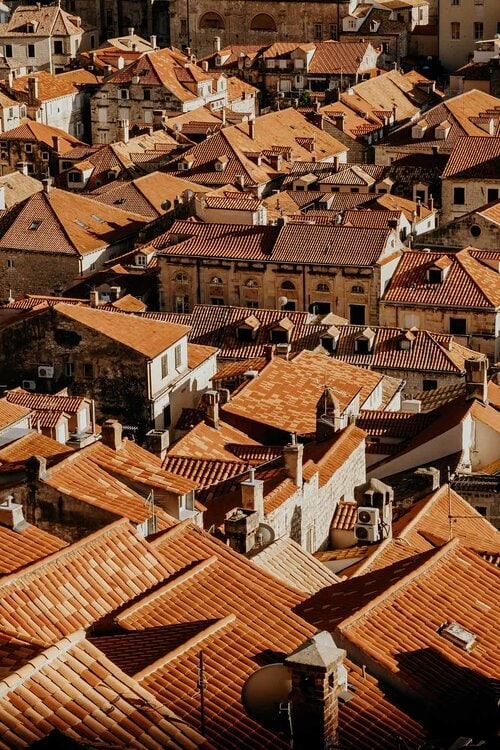
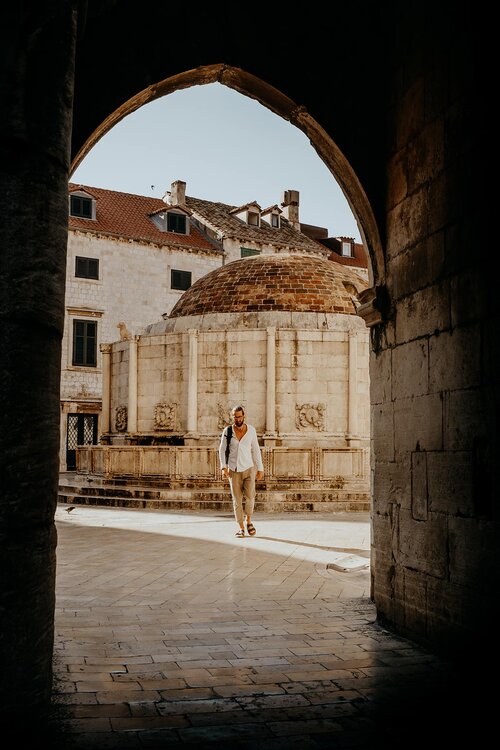
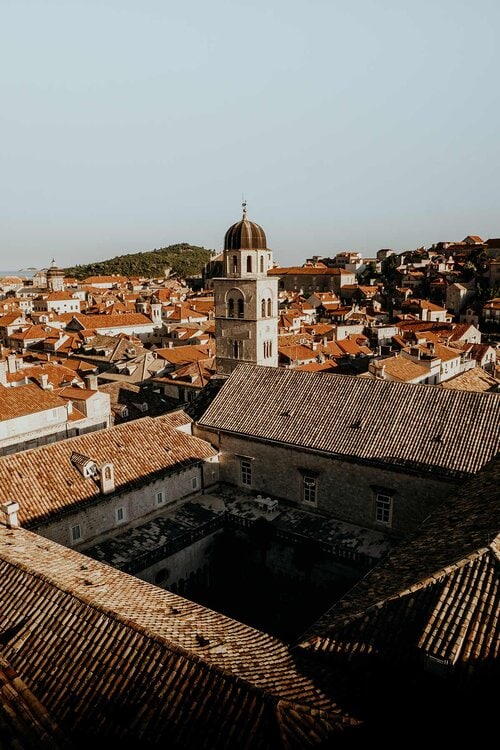
Day 15 | Time to leave Croatia
It’s a wrap! After roughly 2 weeks in Croatia, exploring what I believe to be the country’s most stunning places, this itinerary sadly has to come to an end.
From here, the possibilities are endless, so the next step is entirely up to you.
But whether you’re heading home, or continuing to travel the rest of Europe as part of a massive road trip, I’m pretty sure that you’ll leave Croatia with a bunch of awesome, new memories.
I personally opted to leave Croatia via plane from the Resnik Airport in Split – this is one of the cheapest options for travellers from Europe.
One word of attention, if you decide to follow the above option, make sure you arrive in Split well before your flight, especially if you need to return your rental car.
Alternatively, and if spending extra money isn’t a problem, you also have the option to catch a flight from Dubrovnik Airport.
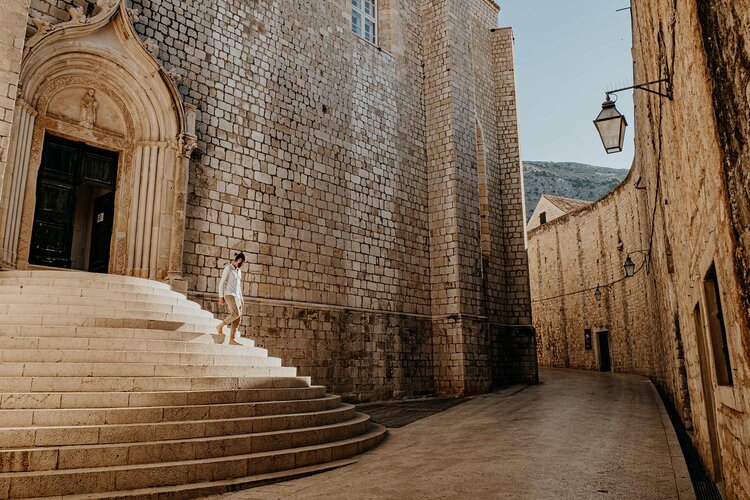
Weather in Croatia | The best time to visit Croatia
Croatia is situated in the Mediterranean and generally enjoys a warm and comfortable climate.
That said, the most popular time that travellers flock to Croatia is during the European summer months of June, July, August and September.
And while the weather is absolutely stunning during these peak summer months, I firmly believe that it’s better to plan your trip for the off-season months of April, May and October.
By doing so, you’ll have excellent weather for beach days and sightseeing adventures alike, while you also reap the benefits of the somewhat lower prices that come with travelling off-season.
I followed this Croatia road trip itinerary in June, and I couldn’t wish for better circumstances to discover the beauty that this incredible country holds.
Transport | How to get around Croatia
This road trip itinerary wouldn’t be complete without informing you about the ins and outs in terms of transport options in Croatia.
Croatia is pretty compact in size, and therefore easy to navigate by rental or public transport.
By car | If you’re keen to explore Croatia more freely, I believe that renting a car is the better deal here.
Not only does it provide the flexibility to travel at your own pace, but it’s also slightly comfier, and significantly easier planning day trips.
For car rental in Croatia, I highly recommend Rentalcars.com. They offer brilliant service, additional insurance options, and a wide array of cars, all at an affordable rate. Prices and availability here.
By bus | For those not comfortable with driving a car, that’s all right – Croatia is home to great public transport options.
My favourite of these options is Flixbus, a company that is excellent in terms of comfort and punctuality, not to mention that it operates between all the major cities in Croatia, including Zadar, Split and Dubrovnik.
One small hint though, make sure you book your tickets in advance online.
For information on availability, departures and additional information, visit the Flixbus website.
By ferry | If you’re planning to set foot on some of the astonishingly beautiful islands of Croatia (I bet you will), it is essential to know the basics as concerns transport with Croatia’s ferries.
There are two ferry companies that service the islands, Krilo for foot passengers, and Jadrolinija for car and foot passengers alike.
Both ferries are affordable, comfortable, and punctual – plus they operate frequently during the day.
Just make sure you book your tickets in advance, especially during the peak summer months – this can be done online or at the ticket booth in the harbours.
Safety in Croatia | Travel insurance
While Croatia is completely safe for travellers, I always aim to enter a foreign country with my travel insurance sorted out, and I highly advise anyone else to do the same.
Where we prefer to assume that everything runs smoothly during our travels, the reality is often that something can go wrong at any given moment – when that happens, it is better to be safe than sorry.
For travel insurance, I always use Heymondo, as they offer excellent medical, baggage and electronic equipment coverage as well as a handy app with 24-hour medical assistance.
Make sure you take a look here – readers of WTSW receive 5% off any insurance policy.
Cheers!
I’ve been on this travel blogging journey since 2019.
If you appreciate what I do here, these are some ways you can support me.

A complete guide to Love Valley in Cappadocia, Turkey - Updated 2024
Famed for its phallic rock formations, Love Valley is one of the most popular hiking trails in Cappadocia. This complete guide covers all the essential information, including how to get there, when to visit, and where to stay – plus some of my personal tips.
As you most-likely already noticed on Instagram, Cappadocia has increased its reputation as one of the world’s top travel destinations, which is no wonder given its unique moon-like landscape, and the hundreds of iconic hot-air balloons that float above it daily.
But something most travellers overlook, is that Cappadocia is actually a haven for those interested in hiking and history, as the historical region is home to a wide array of excellent hiking trails and valleys.
Arguably the most popular of those trails runs through Love Valley, an incredibly picturesque valley that is famed for its phallic rock formations and rough mountain ridges.
To help you make the most out of your time in Love Valley, I gathered and bundled all the essential information.
Here’s my complete guide to Love Valley, where I share my take on the trail – as well as first-hand advice on how to get there, when to visit, and where to stay – that being said, enjoy the hike!
If you choose to use any of the links on this page, I may receive a small commission at no extra cost to you. By using these links, you’ll have a direct impact on WTSW and my ability to continue to create free insightful travel content for you. If you find any of my tips useful, you can support me by buying a virtual coffee here.
A complete guide to Love Valley, Cappadocia
Where is Love Valley
Love Valley in Cappadocia is a fascinating valley that is situated only just outside of Göreme, Cappadocia’s most popular region among travellers and locals alike.
Defined by a bundle of distinguishing rock formations, rough mountain ridges, and a lush, wide-open valley, Love Valley is deemed to be one of the best hiking trails in Cappadocia.
The reason for this is not just Love Valley’s enchanting beauty, but also its convenient position close to other popular attractions in Cappadocia, including Uchisar Castle and Pigeon Valley.
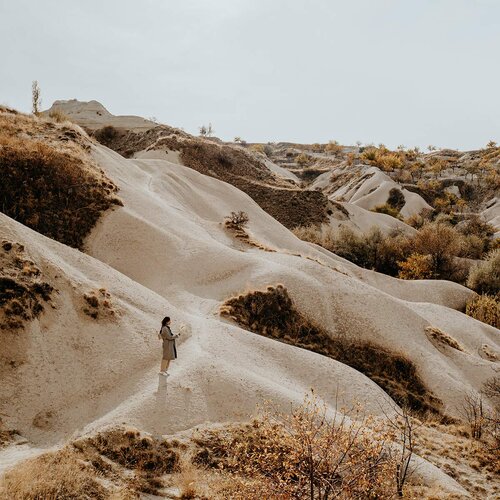
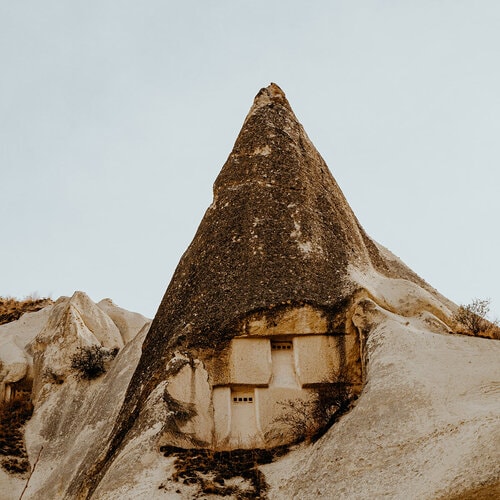
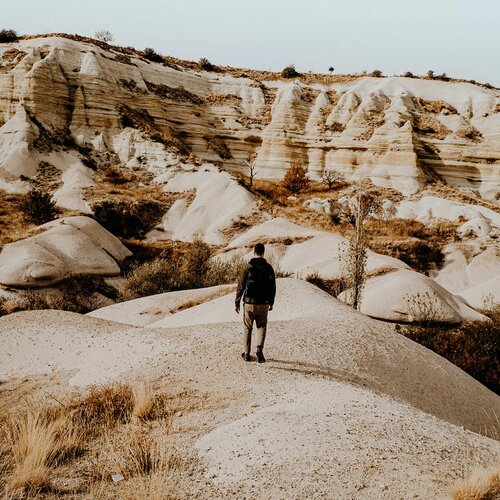
Entrance fee | The cost of visiting Love Valley in Cappadocia
Unlike other popular places in Cappadocia, including Pasabag Valley, Göreme Open-air Museum and Zelve Open-air Museum, entry to Love Valley is actually free.
How to get to Love Valley, Cappadocia
The beginning of the Love Valley trail is situated roughly 3 km outside of Göreme, and for that reason, it is best reached by car, especially if you’re short on time. The journey by car should take around 10 minutes.
Alternatively, you could opt for a short ride with one of the many well-priced taxis that service the area.
For those interested in walking to Love Valley, keep in mind that it takes around 45 minutes – plus you’ll have to walk next to the main road for most of the journey.
I was fortunate enough that the friendly people at Charming Cave Hotel were more than happy to give me a ride, which turned my stay there into an absolute winner.
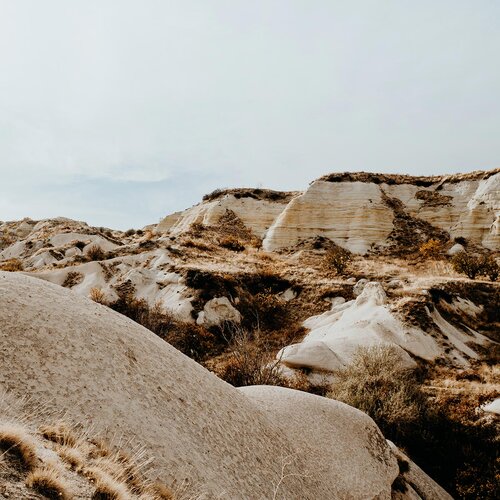
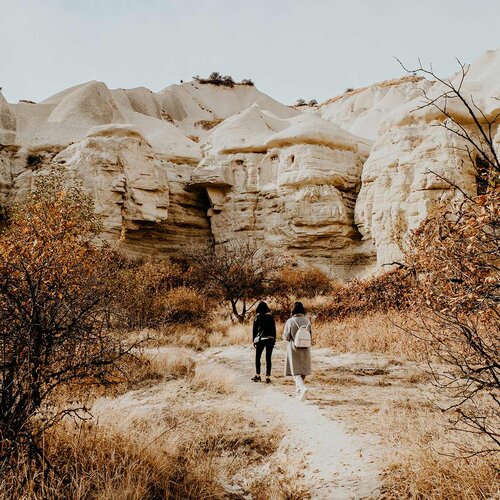
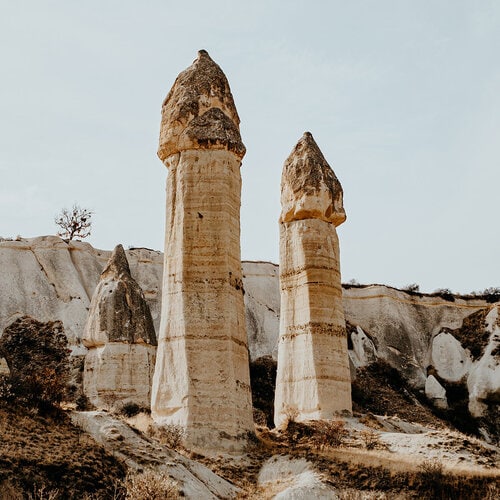
Start of the Love Valley trail
Love Valley is situated between Göreme and Uchisar and can easily be reached from both of these destinations. However, for the best experience, I recommend starting the hike on the Göreme side of the trail.
One word of warning though – if you mark ‘Love Valley’ on Google Maps, you’ll be directed to the Love Valley viewpoint, which is located above the actual hiking trail.
Luckily for you, I’ve already done the research regarding the exact start of the trail.
Where | Love Valley, Cappadocia
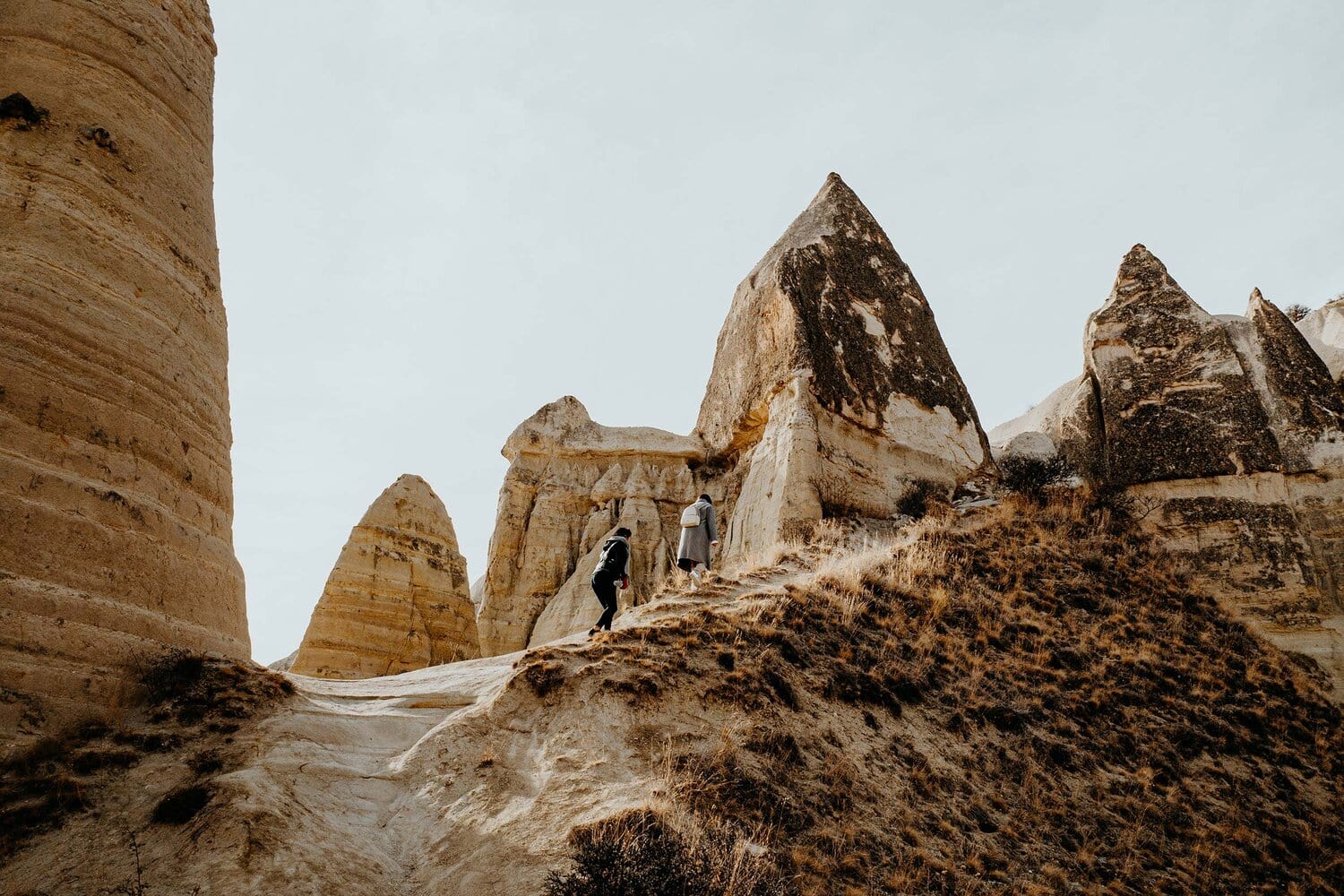
Love Valley in Cappadocia | The trail from Göreme to Uchisar
Nestled between Göreme and Uchisar, Love Valley is a scenic valley that is renowned as one of the absolute highlights on any trip to Cappadocia.
The attractive valley is distinguished by multiple groups of phallic rock formations, which are said to be the number-one inspiration for the name of Love Valley.
Standing tall upon the dusty soil of Love Valley, these ancient rock formations are now considered world-famous for their similarity to the shape of masculinity.
These iconic rock formations are settled in the heart of Love Valley, at roughly 15 minutes from the start of the trail.
As with so many popular sights in Cappadocia, you’ll find a small cafe among these rock formations, turning it into the perfect stop for a coffee or fresh juice.
Besides these peculiar penis-shaped rock pillars, Love Valley has much more to offer, and therefore I’d highly recommend following the 2-hour trail in the direction of Uchisar.
Along the way, you’ll stumble upon a series of fascinating cave dwellings and tunnels, as well as a sea of wave-shaped sandstone surfaces, adding a balancing touch of feminine energy to the valley.
After taking in the breathtaking views, it’s time to exit the valley via the trail on the left side.
At the end awaits a friendly vendor that seduces you to stop for a freshly squeezed pomegranate juice, which to us, came as a welcoming surprise.
From the juice vendor, it’s barely 10 minutes of walking before you reach Uchisar, where you’ll be able to climb Uchisar Castle or head back to Göreme by following the Pigeon Valley trail.
Distance | +/- 4 km (2,5 miles)
Duration | Around 2 hours
Effort | Easy
Tip | Around the rock formations are lots of sketchy trails that seem to bring you to the viewpoint. I would strongly advise you not to follow them. Some come to a dead-end, and climbing down is quite a challenge (I spare you the details).
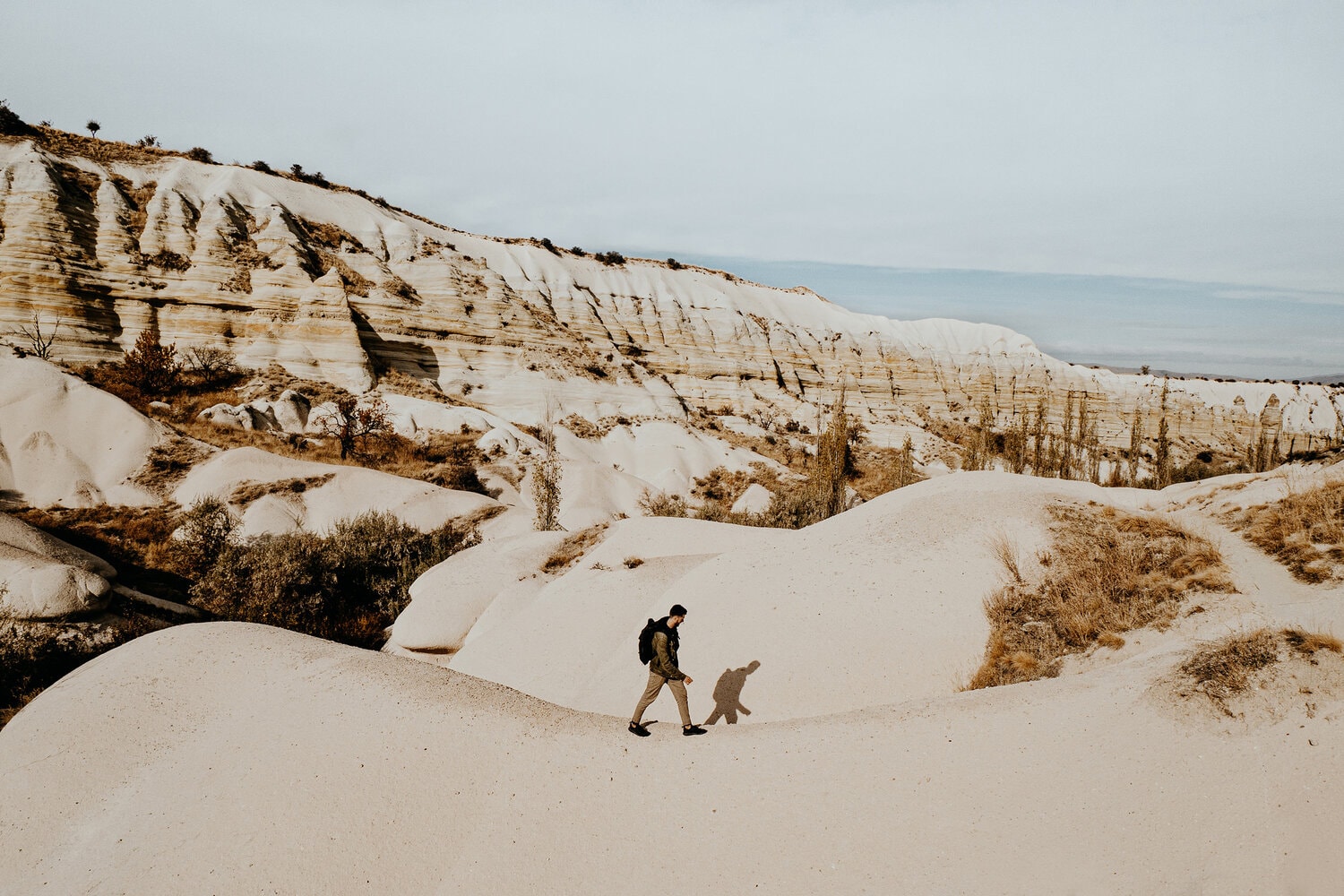
The best time of the year to visit Love Valley in Cappadocia
Cappadocia is a place that is extremely attractive, and I’m pretty sure that it will blow your mind at any time of year.
However, for those planning to mark off some of the area’s best hiking trails, I would strongly advise a visit just before, or after the peak summer months of June, July and August.
Not only is Cappadocia remarkably hot during the peak summer months, but it’s also the most popular period among travellers, and therefore by far the busiest time of the year.
For that reason, I would highly recommend planning your trip for the off-season months of March to May, or September to November.
I visited Cappadocia in early November, and was fortunate enough to enjoy excellent circumstances during my entire trip – perfect for sunny and adventurous hiking days!
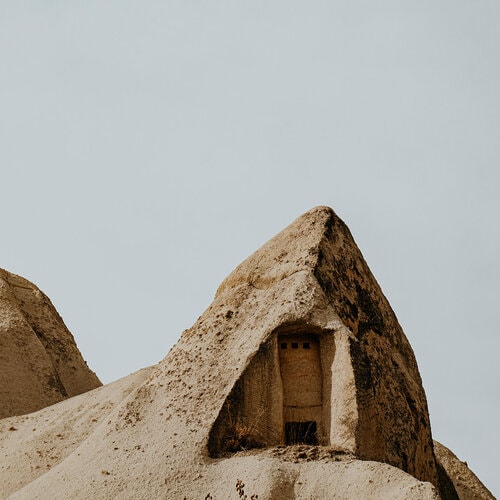
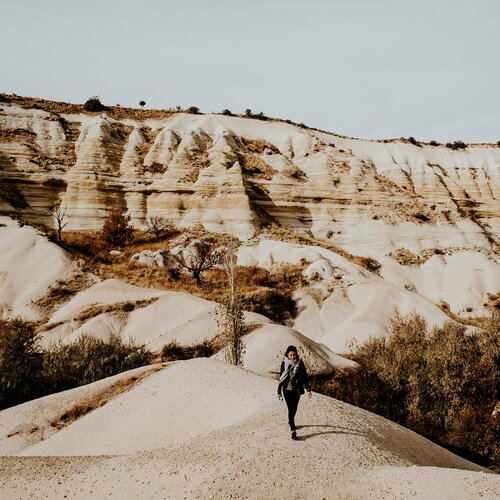
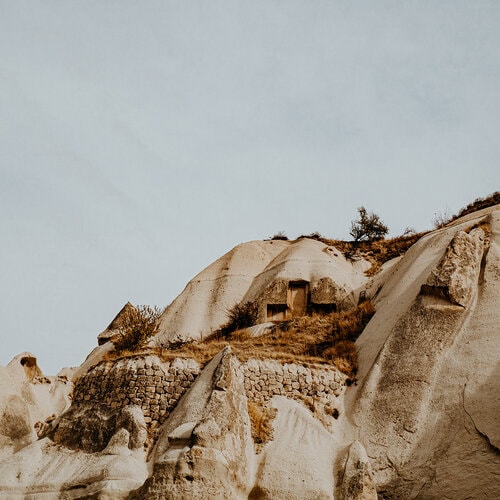
The best time of the day to visit Love Valley in Cappadocia
Love Valley is easily combined with a visit to Uchisar Castle and Pigeon Valley, and accordingly, best visited right after sunrise.
On top of that, Love Valley is bathed in the most gentle morning hues during a morning visit, adding up to the beauty that marks the valley.
Another great benefit of arriving in the early morning is the fact that you’ll be sharing the valley with significantly fewer people. Not to mention that the circumstances are far more pleasant for photography and hiking.
For those who prefer to start their day at a slower pace, plan your visit in the late afternoon.
By avoiding the middle of the day, you’ll still be able to enjoy the valley with a smaller crowd, as other visitors start their journey back to Göreme or Uchisar by this time.
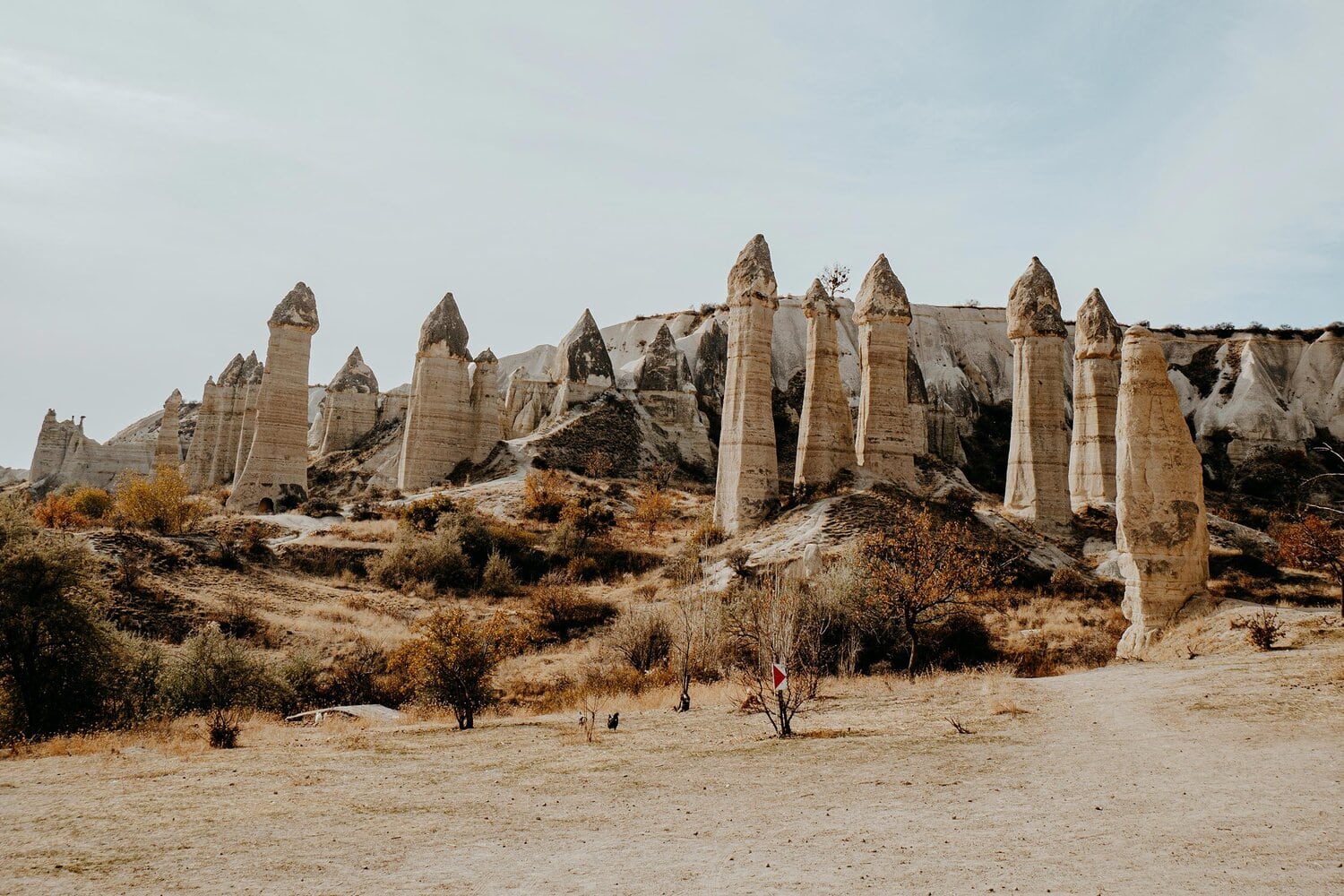
What to pack for Love Valley, Cappadocia
Even though the trail is fairly easy, I’d still recommend bringing a few essentials that will support you during the hike.
One of these essentials is the Grayl GEOPRESS, a purification bottle that has instantly become my favourite travel item after receiving it lately. The sustainable Grayl reduces your travel footprint and allows you to fill up on water directly from the source, without the worry of ending up sick.
For optimal comfort and grip during the hike, a pair of decent sneakers will do, yet I believe hiking boots are not an unnecessary luxury.
Another thing I advise you to bring is some fruits and a few (healthy) snacks, especially if you’re planning to combine Love Valley with a visit to Uchisar Castle and Pigeon Valley.
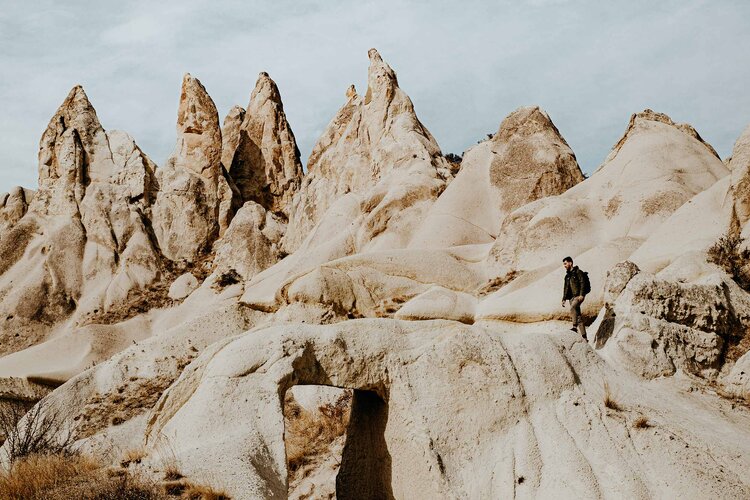
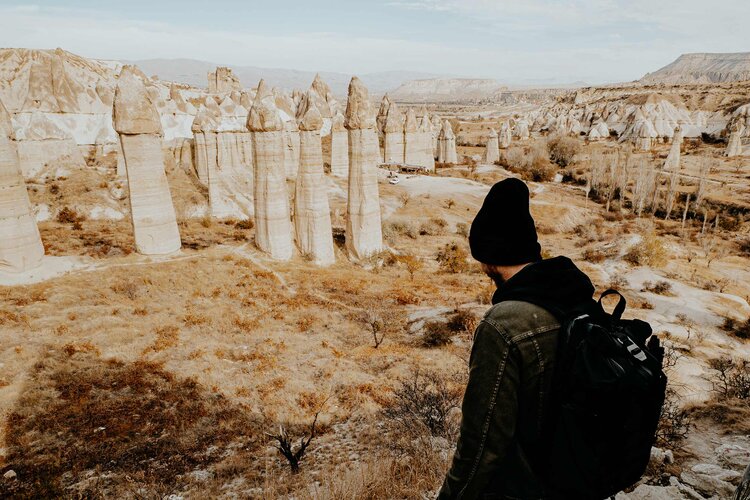
Where to stay in Cappadocia
When it comes to accommodation in Cappadocia, Göreme is by far the most popular town from which travellers start their discoveries, and after visiting recently, it is easy to understand why.
The historic town is encircled by iconic fairy chimneys, has no shortage of brilliant cafes & restaurants, and is teeming with the most authentic accommodations, including budget-friendly hostels, family-run hotels, as well as a great number of classy luxurious suites.
Charming Cave Hotel | I was fortunate enough to spend a total of 6 days at Charming Cave Hotel, an authentic family-run hotel, situated at the heart of Göreme. Alongside the most stunning rooftop terrace in Cappadocia, Charming offers a wide array of cave-style rooms, all marked by amazing design and refined details. All bookings come with an incredible breakfast, and organizing a balloon flight is as easy as it gets.
Kelebek Special Cave Hotel | One of the most luxurious options in Göreme, Kelebek Special Cave Hotel provides spacious cave-style suites, a traditional Turkish bath, and a large outdoor swimming pool. Although this extra luxury comes at a cost, I believe, it’s a great value for the money, especially for those who are keen to take it easy after an adventurous day of exploring.
Artemis Cave Suites & Spa | Right in the centre of Göreme town, Artemis Cave Suites & Spa offers traditional-designed rooms, a spacious terrace, as well as excellent in-house spa facilities. Rooms starting at just €47,- a night make Artemis one of the best options in Cappadocia.
Alternatively, use booking.com to find accommodations in Göreme, Cappadocia.
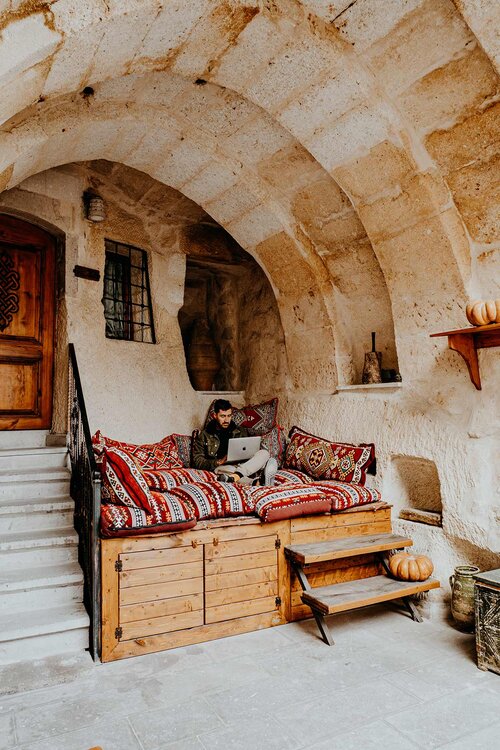
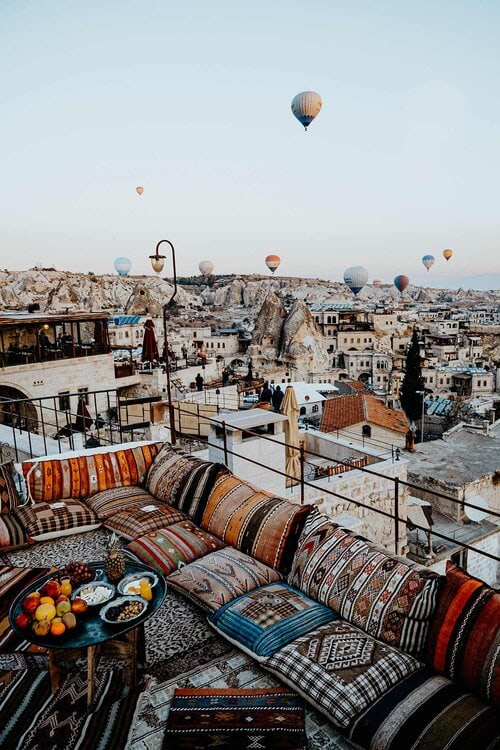
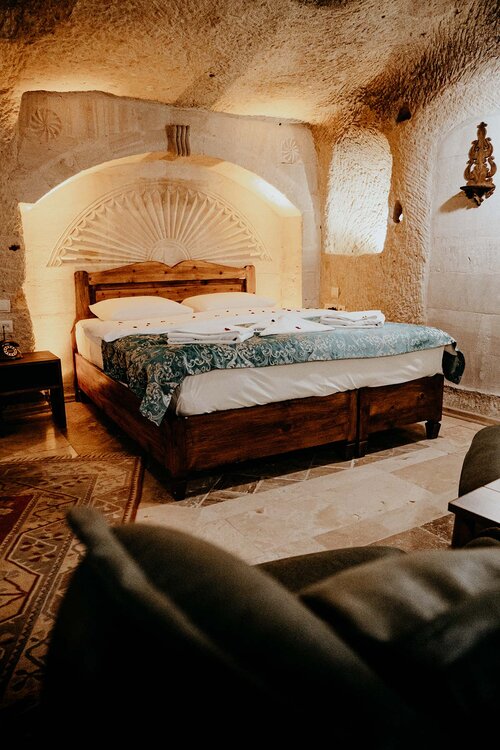
Safety in Turkey | Travel insurance
While Cappadocia is completely safe for travellers, I always aim to enter a foreign country with my travel insurance sorted out, and I highly advise anyone else to do the same.
Where we prefer to assume that everything runs smoothly during our travels, the reality is often that something can go wrong at any given moment – when that happens, it is better to be safe than sorry.
Heymondo | Whether you’re going on a 3-week backpacking trip, or planning a long stay somewhere abroad, Heymondo has excellent insurance options either way – plus full COVID-19 coverage and a handy app with 24-hour medical assistance. Readers of WTSW receive 5% off any insurance policy, more information here.
Book | Find out your Heymondo Travel Insurance quote here.
World Nomads | If you’re an adventure seeker, backpacker, or planning your once-in-a-lifetime world trip, make sure you check out World Nomads, they designed the perfect travel insurance to help you travel safer and smarter. Do note that they’re not covering covid-19 related claims.
Book | Find out your World Nomads Travel Insurance quote here.
Keep on reading with these in-depth Turkey guides
After spending 3 weeks in Turkey, I’ve made plenty of in-depth guides that might interest you too.
13 Wonderful things to do in Cappadocia
A guide to a hot air balloon flight in Cappadocia
A hiking guide to Red and Rose Valley
A complete guide to Love Valley in Cappadocia
Cheers!
I’ve been on this travel blogging journey since 2019.
If you appreciate what I do here, these are some ways you can support me.

8 Wonderful things to do in Zadar, Croatia
Though Zadar wasn’t included in my Croatia itinerary at first, I’m pleased that I eventually decided to extend my trip, which allowed me to visit this laidback coastal town as well.
Situated on the extensive shoreline next to the calming Adriatic lies Zadar, a small town that is characterized by its welcoming atmosphere, rich history, and lively contemporary daily life.
The time-worn streets of the old town have no shortage of fascinating things to see and do – think ancient Roman ruins, innovative art installations, as well as trendy restaurants and bars.
The best part though, Zadar Old Town is the perfect size to discover in just a few days, while it also makes a great base to uncover the nearby Plitvice National Park on an exhilarating day trip.
Though Zadar is often overshadowed by the grandeur of Split and Dubrovnik, I believe that Zadar is a town in its own right, clearly worthy of your visit.
So here’s my take on the best things to do in Zadar – plus travel essentials and tips on where to stay, how to get there, as well as an insight on a unique, local summer hotspot.
If you choose to use any of the links on this page, I receive a small commission at no extra cost to you. By using these links, you’ll have a direct impact on WTSW and support me to continue to create free insightful travel content for you. If you find any of my tips useful, you can support me by buying a virtual coffee here.
Where to stay in Zadar
Zadar is perfectly situated next to the Adriatic, as well as appealing to those interested in culture, making it a favourite destination among tourists and backpackers alike.
I recommend staying in Zadar old town, where you can find a huge selection of accommodations, including family-run guesthouses, Airbnb’s, budget-friendly hostels, as well as luxurious hotels for those looking for a bit of extra comfort.
Apartments & Rooms Mareta | Encircled by all the best things to see and do in Zadar, Apartments & Rooms Mareta offers a comfy luxurious apartment, without breaking the bank. On top of that, it is spacious and well-designed, as well as equipped with a kitchen, air conditioning and a seating area with a flat-screen.
Scallop Regent Rooms | Situated in the heart of Zadar Old Town, just a short walk from the action, Scallop Regent provides spacious rooms, air conditioning and a pleasant private bathroom, all at an excellent quality-price ratio. Perfect for those looking for some extra comfort.
Boutique Hostel Forum | This is where I stayed during my time in Zadar, and it was an excellent experience, at only €17 a night. Boutique Hostel Forum has comfortable and spacious shared rooms, and a large common area, and is without a doubt one of the best hostels I ever spent the night. Additionally, it is located next to Zadar’s charming Roman Forum.
Alternatively, use booking.com to find accommodations in Zadar, Croatia.
8 Wonderful things to do in Zadar, Croatia
1. Admire a stunning Zadar sunset at the sea organ
Perched on the northwestern edge of the charming Zadar Riva is the Zadar Sea Organ, an architectural sound art object, that is easily one of the most interesting things to see in Zadar.
Designed in 2005 by Croatian architect Nikola Bašić, the Morske Orgulje – the sea organ’s Croatian name – follows the intuitive flow of nature, creating random, yet calming sounds.
And believe me, there’s just something magical and captivating about the calming vibrations that are created by the waves of the Adriatic and the 35 organ pipes that lay beneath the marble steps of the Zadar Riva.
Throw in the fact that famous British film director Alfred Hitchcock once said that ‘’Zadar has the most beautiful sunset in the world’’, and the Zadar Sea Organ turns into an absolute must-visit.
It is therefore little wonder that this extraordinary art object is considerably popular among travellers and locals alike.
So do as I did, and grab some gelato at Bob Rocks ice cream, and secure yourself a quiet spot to sit and watch the world go by.
Additionally, you can also see the adjacent Greetings of the Sun, an art installation that uses light to symbolize communication with nature.
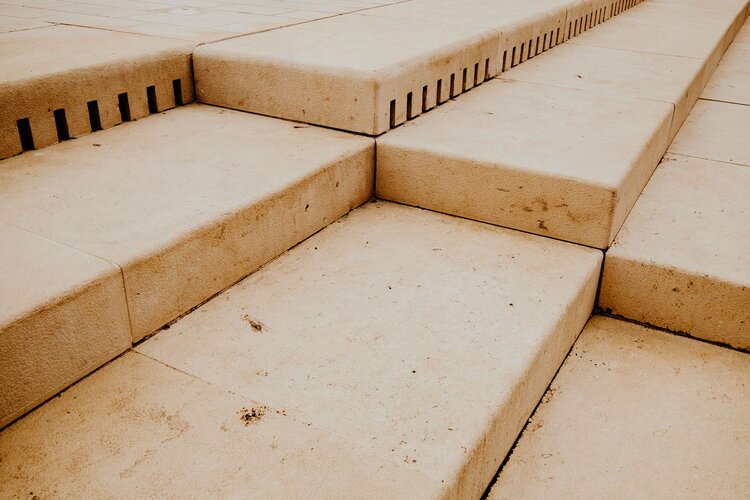
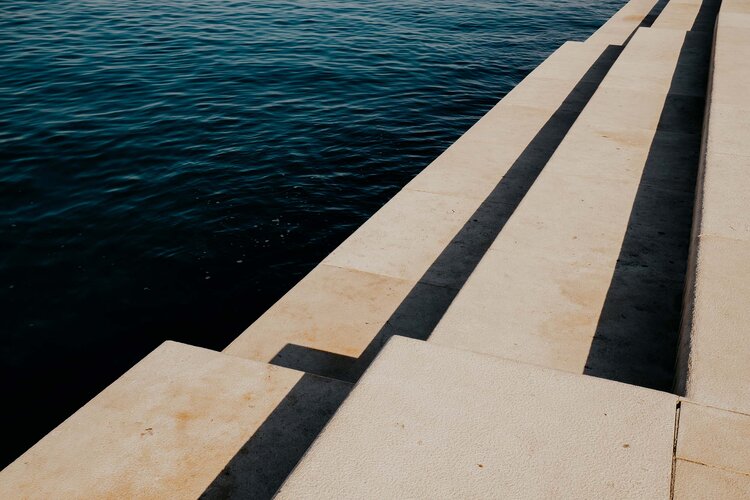
2. Walk the incredible Roman Forum
Though you most likely already know, the delicate architecture is one of the key ingredients for the splendour that defines Zadar Old Town, with the imposing ruins of the Roman Forum at the heart of it all.
Situated in the epicentre of Zadar Old Town, the Roman Forum dominates the horizon, and walking around it feels as though you accidentally boarded a flight heading for Italy, yet this is far from the truth.
But is easy to see why, if you consider the fact that ancient Zadar was once part of the prosperous Roman empire that ruled in Zadar from 48BC till the end of the 5th century.
While this period in time is now long gone, the Roman forum reminds travellers and locals, that this was one of the most influential chapters in Zadar’s rich history.
Adjacent to the forum, you’ll notice the medieval St Donat church, a cylindrical-shaped church that was built on the remnants of a Roman construction at the beginning of the 9th century.
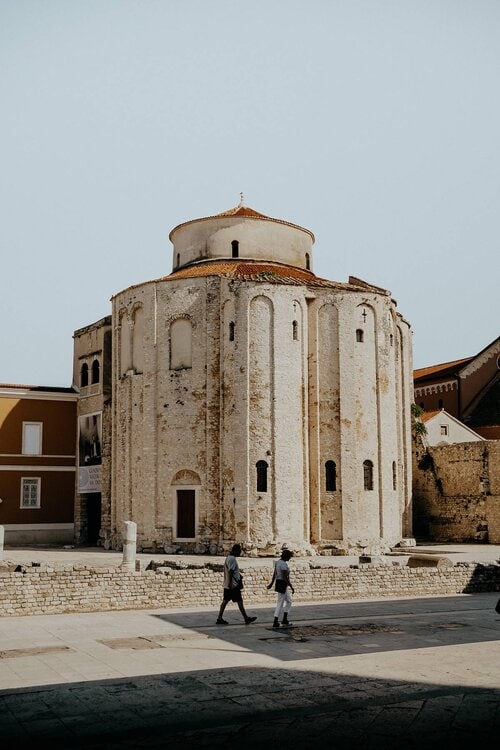
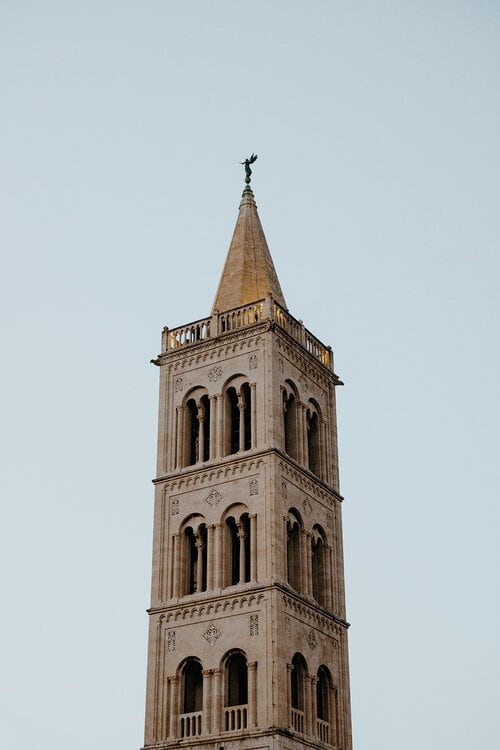
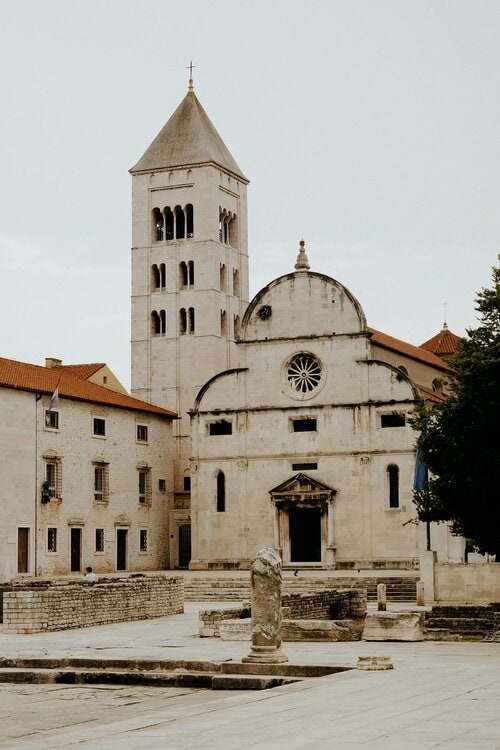
3. Go on a day trip to the Plitvice National Park
Situated roughly 1,5 hours away from Zadar is the incredibly beautiful Plitvice National Park, a vast natural phenomenon that is deemed to be one of the main reasons why travellers flock to Croatia.
Croatia’s best-known highlight is distinguished by a wide array of picturesque interconnected lakes, the most mesmerizing waterfalls, as well as plenty of calming streams and rapids, and walking among this sheer natural beauty is truly an otherworldly experience.
The UNESCO listed National Park is divided into two sections – the Upper lakes (Gornja Jezera) and the Lower Lakes (Donja Jezera) – both extremely impressive, and best visited in the early morning.
One word of warning though – book your tickets online and well ahead. By doing so you have guaranteed access to the park at the time of arrival, saving you a lot of unnecessary waiting time.
If you plan to visit Plitvice National Park as a day trip from Zadar, I highly recommend renting a car, so you’ll have all the freedom to visit on your own conditions. For car rental in Croatia, make sure to pick an option from the wide selection that is available at Rentalcars.com.
Ooh and just to make it clear, I think a visit to Croatia is incomplete without a visit to the famous lakes of Plitvice National Park.
Where | Plitvice National Park
Opening hours | Daily 07:00 – 20:00 during the high season, more information here
Cost | Entrance fee 300 HRK (€40,-) per person
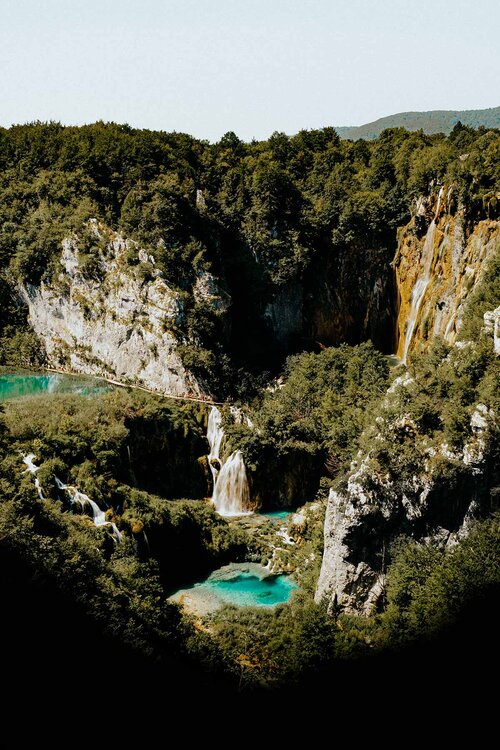
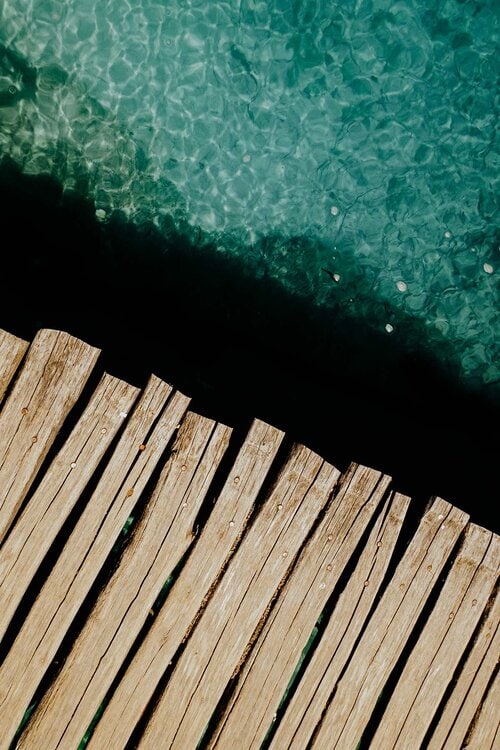
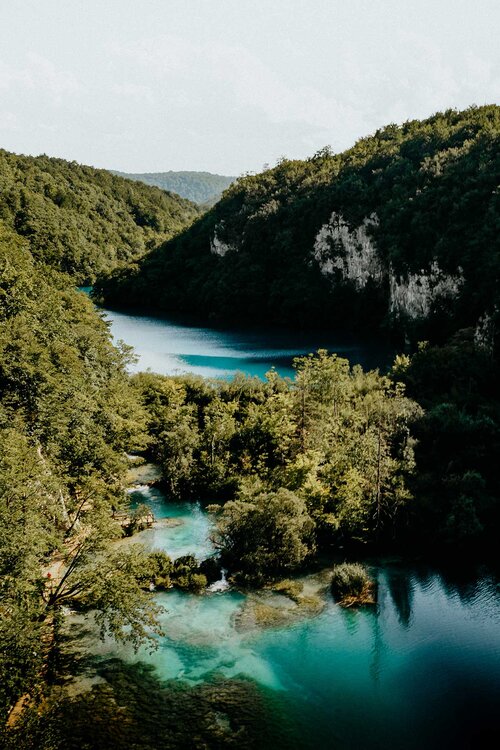
4. Walk around Zadar Old Town
Like most old towns in Croatia, Zadar has no shortage of fascinating architecture, dotted throughout the streets of Zadar’s attractive historic centre.
A walk around Zadar Old Town is the perfect activity for those that are keen to uncover Zadar’s time-worn architecture but of course also for travellers looking to enjoy a relaxing late-afternoon walk.
Zadar Old Town has the perfect size to uncover in a few hours, and walking around it is, partly thanks to that, one of the most rewarding things to do in Zadar.
Here are a few highlights where I highly recommend stopping by:
St Anastasia cathedral | Built at the end of the 12th century, the St Anastasia cathedral – also known as the Zadar Cathedral – is considered one of Zadar’s most fascinating buildings. Charmed by its intriguing facade in typical Romanesque architecture style, the cathedral is a must-see in the old town.
The Land Gate | Zadar’s charming old town is encircled by fortified walls, and as a result, the city is only entered via a handful of ancient gates. The best-known of these gates is the ornate Land Gate, which was once the main gate to the city. At present, the Land Gate is easily the most picturesque gate to gain entrance to Zadar Old Town.
Five wells square | During the 16th century, Zadar survived many Turkish attacks, partly due to its innovative system that supplied citizens with water. And though the five wells are no longer in use, the historic Trg Pet Bunara square has become a popular place for locals and travellers alike.
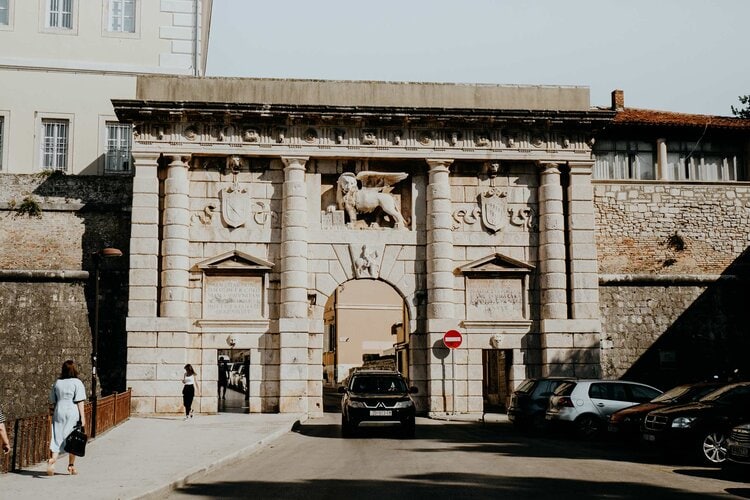
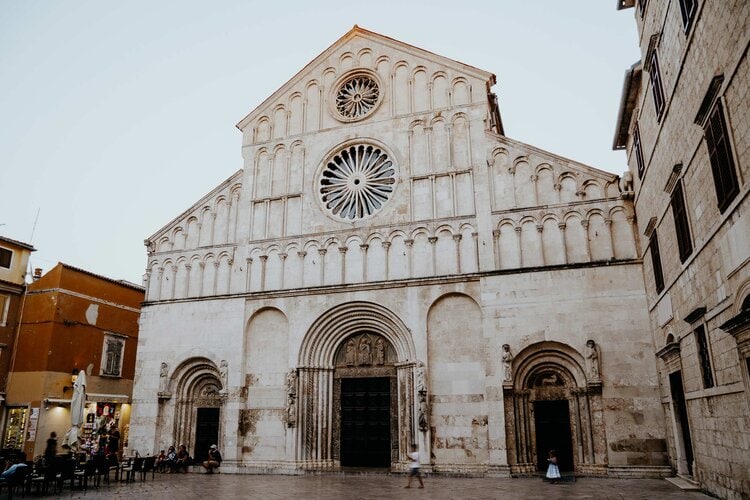
5. Sample local craft beer at Deja Brew
During the car journey from the Netherlands to Croatia, my friends Sander and Maaike told me that Croatian people are pretty serious when it comes to craft beer, and after visiting Deja Brew it is easy to understand why.
Situated in the time-worn streets of Zadar old town is Deja Brew, a classy ‘hipster-ish’ pub that serves a wide variety of local, national and international craft beers, as well as hand-crafted cocktails and excellent whiskeys.
After my day trip to Plitvice National Park, I decided to drop by, and once seated I sampled a bottle of Zagreb’s very own Grif craft beer, a light refreshing single hop Pale Ale, that was rewarded with a World Beer Award in 2020.
And I must say, it was a welcoming refreshment after an adventurous day under the sizzling Mediterranean sun.
The unique and local-oriented setting, the cosy atmosphere and the excellent selection of top-notch craft beers make Deja Brew a great place to sit down after an active day of exploring.
So, if you’re keen to have a friendly chat with travellers and locals alike, while enjoying a few late-night drinks, make sure to visit Deja Brew at least once during your time in Zadar.
For those wanting to start the day off right, Deja Brew doubles as a cafe and serves excellent coffee during the day.
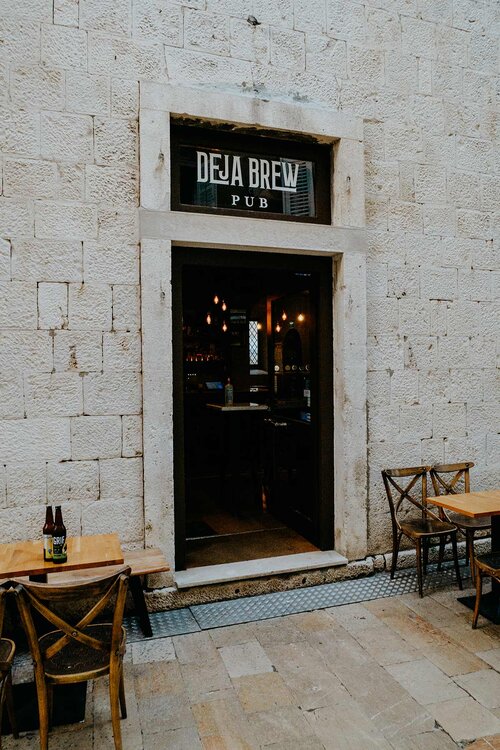


6. Take a ride with the boatmen of Zadar
For over 800 years, the boatmen of Zadar have been transferring passengers from the surrounding cities to Zadar Old Town, and at present, this tradition is fortunately still very much alive.
Passed on from father to son, the Barkajol Zadarski is by far one of the most authentic travel experiences in Zadar, and by taking part in it, you’ll be supporting a proud tradition.
Once you set foot in the small bright-coloured wooden skiff, a traditional boatsman will row you to the other side of the harbour, using only 2 oars and a large dose of friendliness.
Though the passage to the old town takes only 5 minutes, it is an excellent way to get a feel for the ‘real’ Zadar and its people.
On top of that, I think the boatmen of Zadar make quite a picturesque frame for the wall.
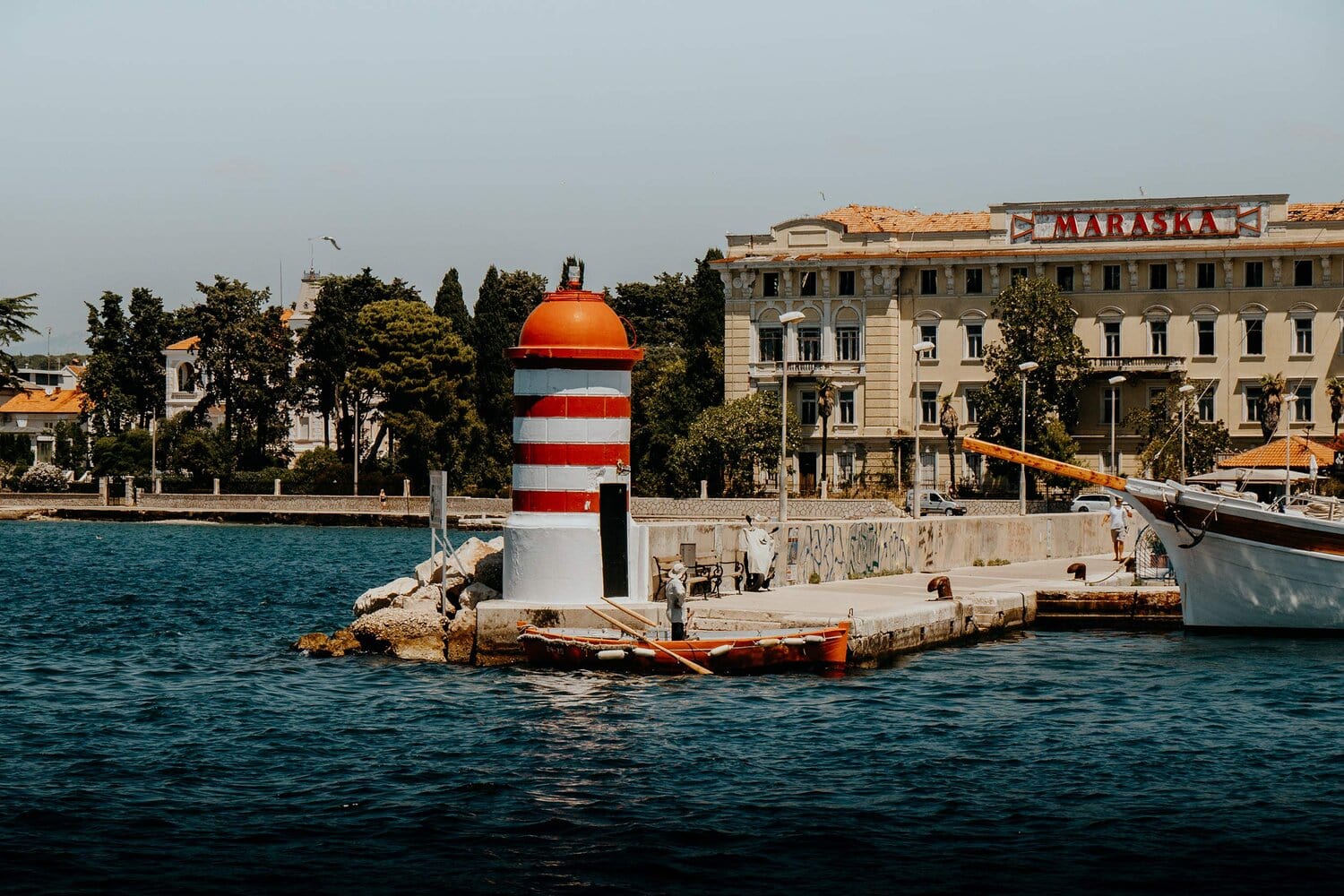
7. Spend a day relaxing at Bazen Kolovare
Nestled on the shoreline only just outside of Zadar Old Town is Bazen Kolovare, an urban outdoor swimming deck that is without a question one of my favourite places for an afternoon of swimming and relaxing in Zadar.
Teeming with both local youngsters and the elderly, Bazen Kolovar is considered a bit of a local-only secret, and by visiting you’ll have a great impression of a traditional Mediterranean summer day.
The complex houses a large natural swimming pool, a towering diving board for those after a quick adrenaline spike, as well as a cafe that serves refreshments and snacks.
So, if you’re keen to spend a day relaxing, yet still want to experience authentic local life, look no further, Bazen Kolovare is the place where you want to be during the long summer days.
Ooh, and Bazen Kolovare truly makes for a postcard-perfect setting.
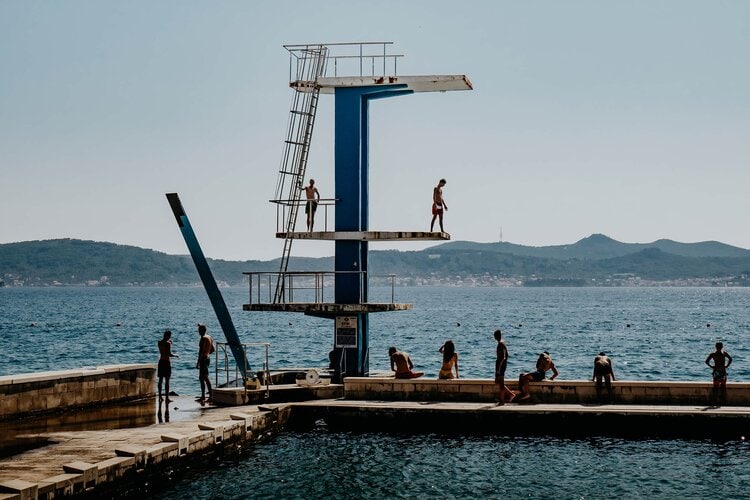
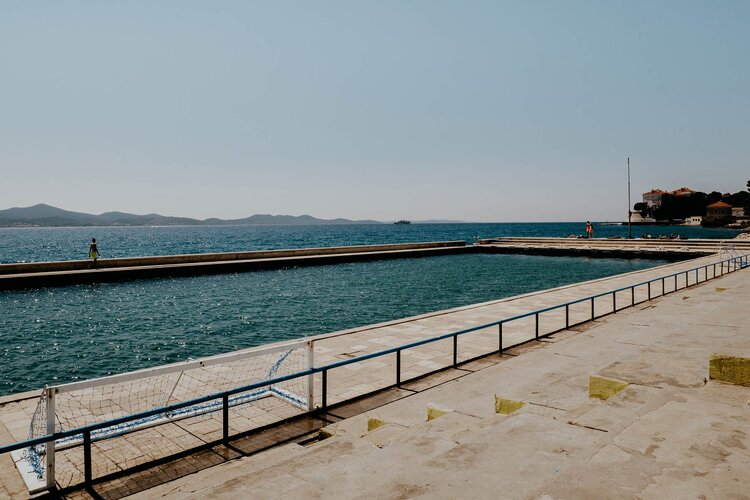
8. Sample a burger at La Famiglia Zadar
The one thing that I struggle to resist since I started to eat more plant-based food, is definitely a good, juicy beef burger.
So every once in a while, when I stumble upon an inviting place that specialises in creating innovatively composed burgers, I give in.
This was clearly also the case when I discovered La Famiglia in Zadar.
Once I checked their extensive menu, it became very clear that I was in the right place to consent to my occasional burger craving.
After some contemplation, I opted for the Big Boy, a double burger served with pickled red onions, fresh tomatoes, cheddar cheese, their signature sauce, and an iconic black bun.
It was impressively tasty.
Those keen for a lighter meal, be at ease – their menu is vegan-friendly – think pasta, risotto, salads, as well as a falafel burger, making it an excellent option for everyone.

Things to do in Zadar | The essentials
The best time to visit Zadar
Zadar has no shortage of long summer days flooded with sun, and is, in my opinion, best visited during the shoulder months that run from April to June and from September to October.
The weather during these months is excellent for exploring Zadar and its surrounds, as well as spending time relaxing poolside or at the beach.
Additionally, you’ll experience significantly smaller crowds and slightly lower prices than during the summer months of July and August, making it a more enjoyable (and cheaper) trip.
My favourite day tours & activities in and around Zadar
If you’re keen to explore Zadar on an organized tour, here are some of my personal favourites.
How to get to Zadar, Croatia
FLIGHTS | HOW TO GET TO ZADAR
Zadar is considered an excellent summer getaway, and is easy to get to by plane, especially during the peak period that runs from June till September.
Flights to Zadar arrive and depart at Zadar Airport, roughly 20 minutes from the historic centre of Zadar Old Town.
For flights to Zadar, I would recommend Skyscanner. Their website is user-friendly, holds a large variety of airlines, and grants the possibility to find good rates.
From Zadar Airport, take a shuttle bus in the direction of the old town. More information here.
CAR | HOW TO GET TO ZADAR
Croatia’s attractive coastline makes it an excellent destination for a road trip, and if you’re keen to uncover the best places in the country, renting a car is clearly the best thing you could do.
If you’re planning to rent a car in Croatia, you’ll have all the freedom to visit Zadar – plus it’s remarkably easier to make day trips.
For car rental in Croatia, I would recommend checking out Rentalcars.com. They offer excellent service, additional insurance, and a broad selection of cars, all at an affordable price.
One word of warning, there are little parking spaces available in Zadar Old Town. For that reason, you’ll do wise to seek an apartment with private parking.
BUS | HOW TO GET TO ZADAR
Croatia has excellent roads and infrastructure and as a result, you’ll notice a wide array of bus travel options.
For the journey from Dubrovnik to Zadar, I’d decided to make use of Flixbus, and after this recent experience, it is safe to say that it is an excellent organization that is both comfortable and punctual.
If you’re keen to visit Zadar by bus, Flixbus will operate between all the major cities in Croatia, as well as a wide range of cities in the neighbouring countries.
In terms of tickets, I’d recommend booking online and in advance. For information on availability, travel departures and additional information, visit the Flixbus website.
Safety in Croatia | Travel insurance
While Croatia is completely safe for travellers, I always aim to enter a foreign country with my travel insurance sorted out, and I highly advise anyone else to do the same.
Where we prefer to assume that everything runs smoothly during our travels, the reality is often that something can go wrong at any given moment – when that happens, it is better to be safe than sorry.
Heymondo | Whether you’re going on a 3-week backpacking trip, or planning a long stay somewhere abroad, Heymondo has excellent insurance options either way – plus full covid-19 coverage and a handy app with 24-hour medical assistance. Readers of WTSW receive 5% off any insurance policy, more information here.
World Nomads | If you’re an adventure seeker, backpacker, or planning your once-in-a-lifetime world trip, make sure you check out World Nomads, they designed the perfect travel insurance to help you travel safer and smarter. Do note that they’re not covering covid-19 related claims.
Cheers!
I’ve been on this travel blogging journey since 2019.
If you appreciate what I do here, these are some ways you can support me.

A complete guide to the Terra Forest Meadow trail in the Almaty Mountains - Update 2024
Charmed by its sheer natural beauty, the Terra Forest Meadow trail is one of the best hikes in Almaty. This complete guide contains all your hiking information, as well as essential travel tips.
Kazakhstan is a country of sheer natural beauty, coming in many forms, including lush forests, raw mountains, as well as plenty of picturesque lakes and waterfalls.
It is therefore little wonder that an adventurous country such as Kazakhstan introduced me to hiking – an activity that is completely new to me.
But after my first ever hike in the Terra Forest Meadow, which is nestled in the stunningly beautiful mountains of Almaty, I’m pretty sure that a new hobby is emerging.
With that being said, here is my complete guide to the Terra Forest Meadow trail, where I share my hiking experience, as well as essential tips for visiting, including the costs, how to get there, the duration of the trail, and where to stay.
If you choose to use any of the links on this page, I may receive a small commission at no extra cost to you. By using these links, you’ll have a direct impact on WTSW and my ability to continue to create free insightful travel content for you. If you find any of my tips useful, you can support me by buying a virtual coffee here.
The New Where the Souls Wander Print Store
After putting out my first-ever print collection in 2022, I decided it was finally time to re-open my print store, and I couldn’t be happier with the result.
Whether you’re looking to grab a unique piece for your own wall, gift one to a loved one to remind them of a memorable trip together, or simply get your hands on a piece because it provokes a specific memory or feeling, I’d be honoured and grateful if you decide to collect or gift one of my prints.
To celebrate the launch, I’m offering a 20% discount until the 24th of December. Use code: WTSWPRINT24 at the checkout.
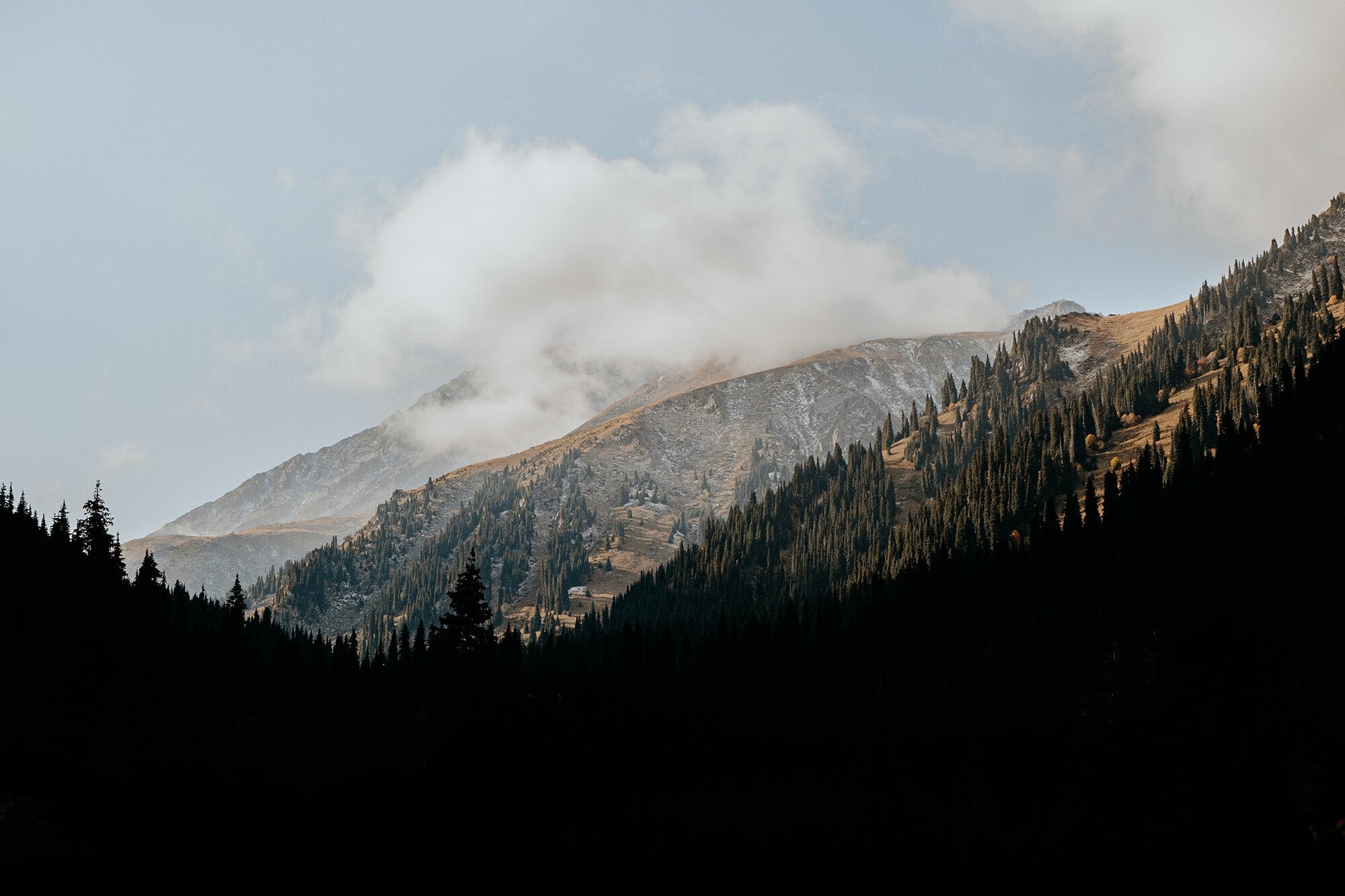
Where is Terra Forest Meadow
The Terra Forest Meadow is a charming woodland of tall pine trees, nestled in the heart of the picturesque Ile Alatau National Park, just south of Almaty.
Charmed by dense wild forest, impressive Alpine meadows, and the northern slopes of the Zailiysky Alatau mountains, the park is considered a hiking paradise, attracting adventurous travellers from all over the world.
At the centre of this stunning national park is the Terra Forest Meadow, where you’ll end up when following this adventurous trail.
Where to stay near Terra Forest Meadow
Almaty is the largest city in Kazakhstan, and due to its sheer, natural surroundings, it is popular with locals and travellers alike.
As a result, you’ll find a great selection of excellent accommodations, including brilliant Airbnbs, cosy guesthouses, budget-friendly hostels, and high-end hotels for those looking for some extra comfort.
Ambassador | Ambassador offers large classic-style rooms that provide everything to unwind after an adventurous day in the mountains of Almaty. On top of that, the hotel is home to an excellent in-house restaurant.
Renion Park Hotel | Situated at just a stone’s throw away from the Almaty city centre, Renion Park Hotel offers spacious, air-conditioned rooms at an excellent price-to-quality ratio. Perfect for those after some comfort.
Alternatively, search for accommodations in Almaty on booking.com.
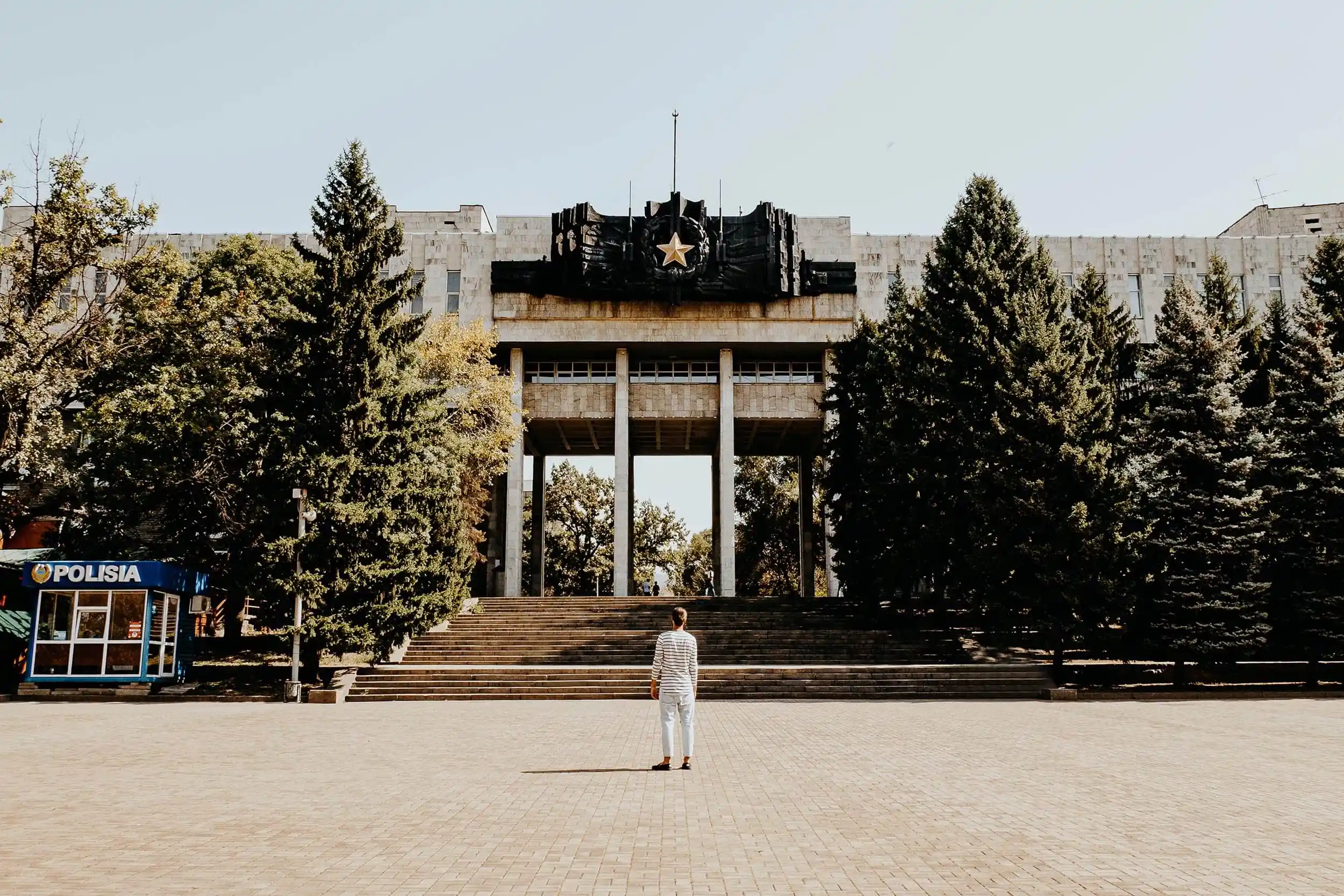
The entrance fee of Terra Forest Meadow
To follow the Terra Forest Meadow trail, you’ll need to obtain a permit to visit the Ile Alatau National Park.
At the moment of writing – September 2024, a permit for the Ile Alatau National Park will set you back 500 KZT (€1,-) per person.
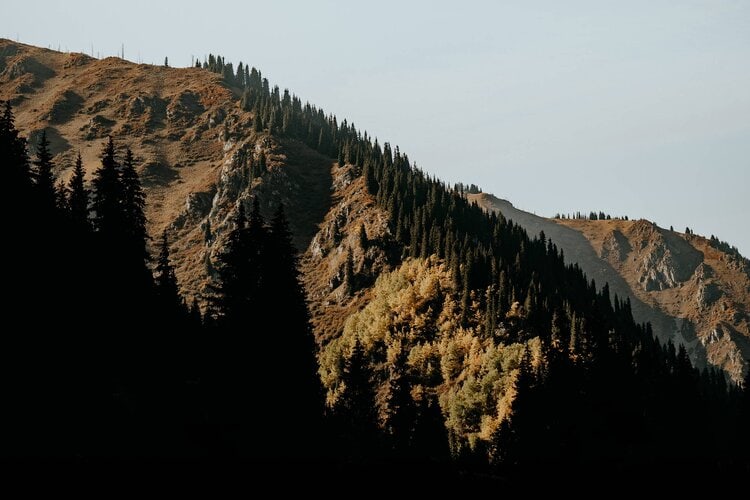
A guide to the Terra Forest Meadow Trail in Almaty
The Terra Forest Meadow trailhead location
The Terra Forest Meadow Trail is easily one of the most popular hikes in the famous Almaty Mountains and subsequently has a large, signposted parking lot at the beginning of the trail.
The beginning of the trail is situated at Alma-Arasan, a roughly 30-minute drive from Almaty.
From the parking lot, it is easy to get to the trailhead, as there is only one way to get in the Passage Gorge, which brings you to the beginning of the trail and takes you to the summit of Terra Forest Meadow.
Where | Alma-Arasan, Ile Alatau National Park
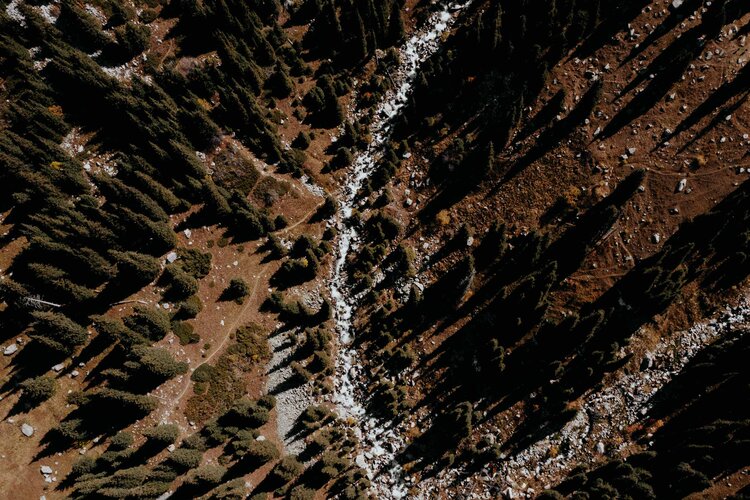
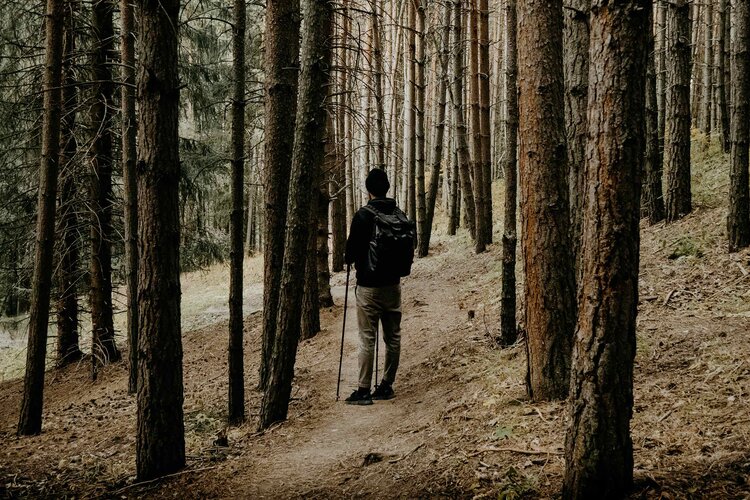
How to get to the Terra Forest Meadow trailhead
By car | For those planning to come to the trailhead by car, head in the direction of the famous Big Almaty Lake. Once you arrive at the crossroads, go straight in the direction of Alma-Arasan. The journey should take around 30 minutes.
If you’re planning to rent a car in Kazakhstan, you’ll have a significantly easier time to go on day trips. Do, however, make sure that you have good insurance, the roads in Kazakhstan can be pretty rough.
For car rental in Kazakhstan, I would recommend DiscoverCars. They offer excellent service, additional insurance, and a broad selection of cars, all at an affordable price.
By bus | For timetables, costs and information on how to reach the trailhead at Alma-Arasan by bus, check information regarding bus line 211 on easyway.
The journey by bus should take around 1.5 hours and costs 300 KZT (€0,60) for a one-way ticket.
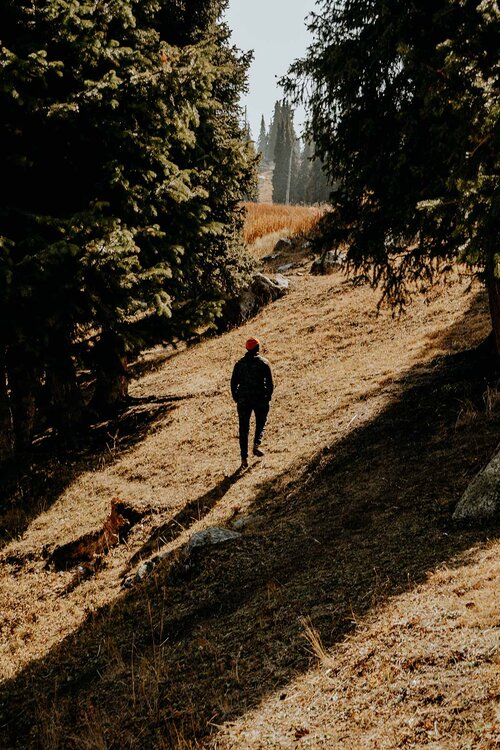
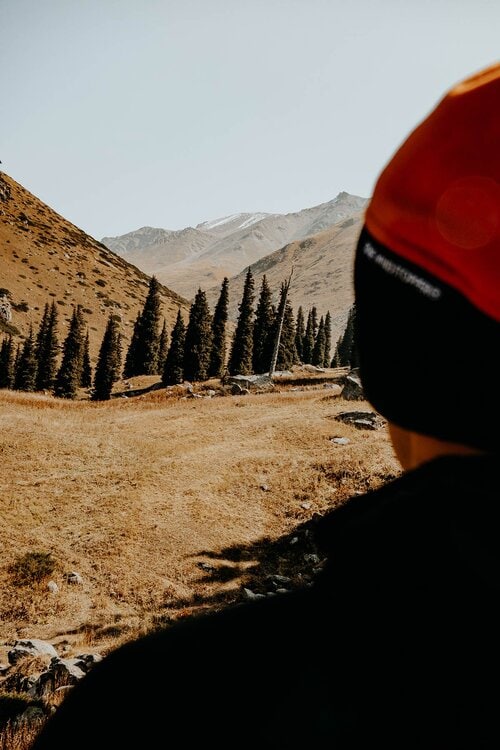
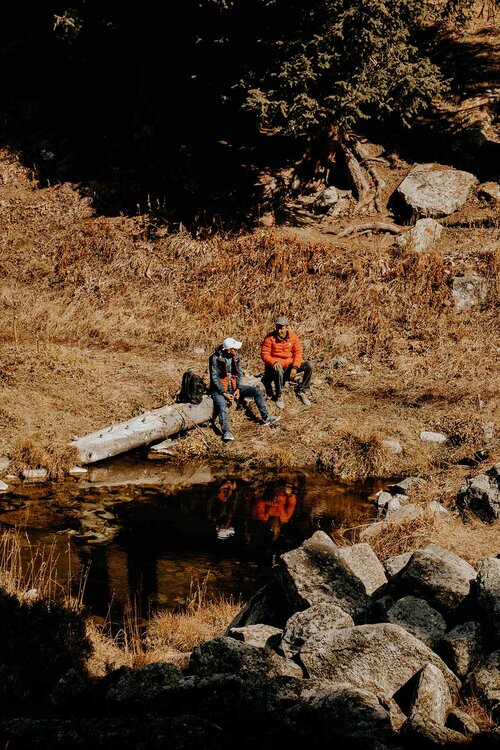
The Terra Forest Meadow hike
The Terra Forest Meadow Trail is one of the moderate hikes in the Ile Alatau National Park, yet it was quite a challenge for me, someone who’s not familiar with hiking.
The majority of the trail is well-defined and pretty straightforward.
The terrain fluctuates between densely forested hills, several streams and rapids that you’ll have to cross, as well as large open fields that provide the most stunning views of the encircling forested mountains and steep rock formations.
The trail out towards the summit of Terra Forest Meadow is around 7,1 km with an ascent of roughly 900 meters, before reaching the summit at an altitude of 2.650 meters above sea level.
Once, you crossed a small stream, you’ll know you’re close to arriving at the top.
When we arrived at the official summit, we’re where welcomed by the most stunning views of the surrounding mountains, including Big Almaty Peak (3.680 meters) and Saw Peak (3,790 meters) and took some well-deserved time for relaxing.
Though most hikers stop here, it is also possible to venture higher in the mountains. Do however keep in mind that this can be quite dangerous, therefore I always recommend going with an experienced guide.
The Terra forest trail is easily one of the best hikes in the famous Almaty Mountains, and for me a special place to kick off the beginning of my new hiking journey.
Terra Forest Meadow in numbers
Hiking time | Roughly 6 hours
Distance | 14,2 km (8,8 miles) return trip
Ascent | +/- 900 m
Altitude | 2.650 meters above sea level
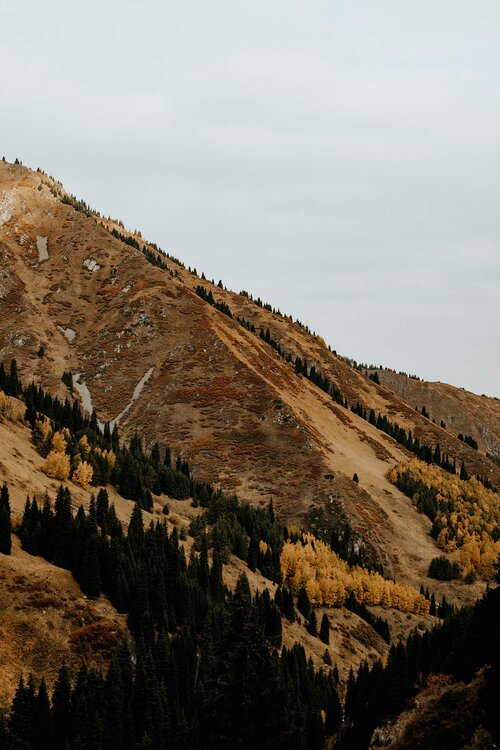
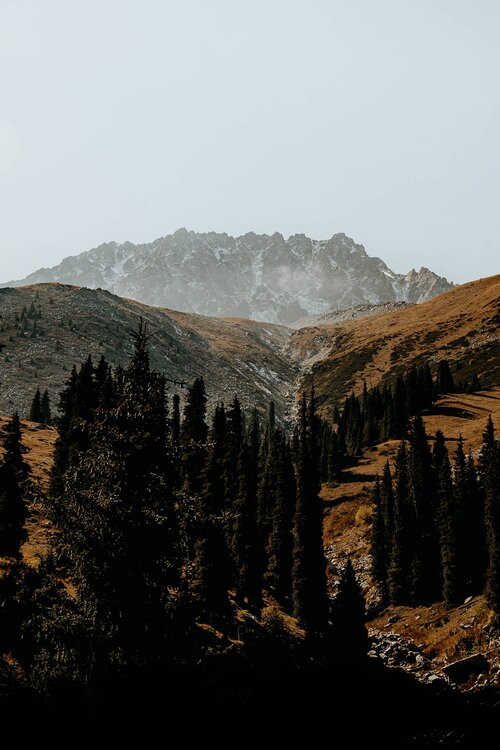
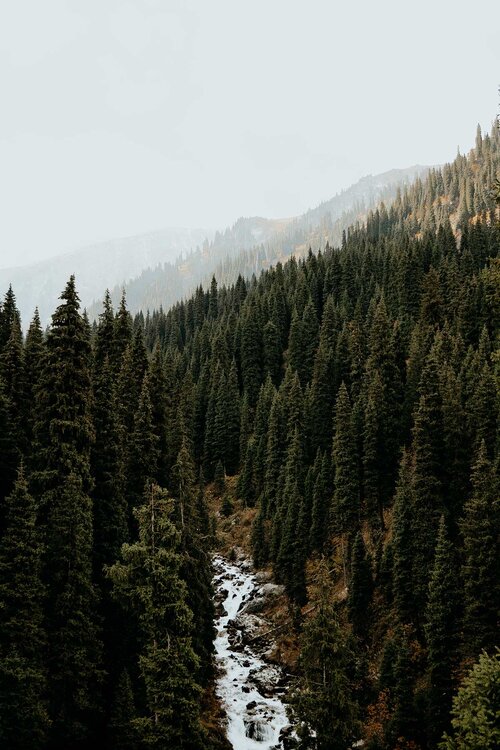
Terra Forest Meadow | The essentials
The best time of year to visit Terra Forest Meadow
It’s fair to say that winters in Kazakhstan are extremely rough, therefore it is better to avoid hiking during these extreme circumstances.
The summer and autumn months, early May to late November, are the absolute best months if you’re after good weather conditions, and a bright palette of nature’s finest colours.
Though you can hike the trail during the winter months, take into account that the circumstances might bring in some dangerous situations. For that reason, I highly recommend visiting during the warmer months.
I did the hike at the beginning of Autumn (Kazakhstan’s golden months) and had great circumstances throughout the entire hike.
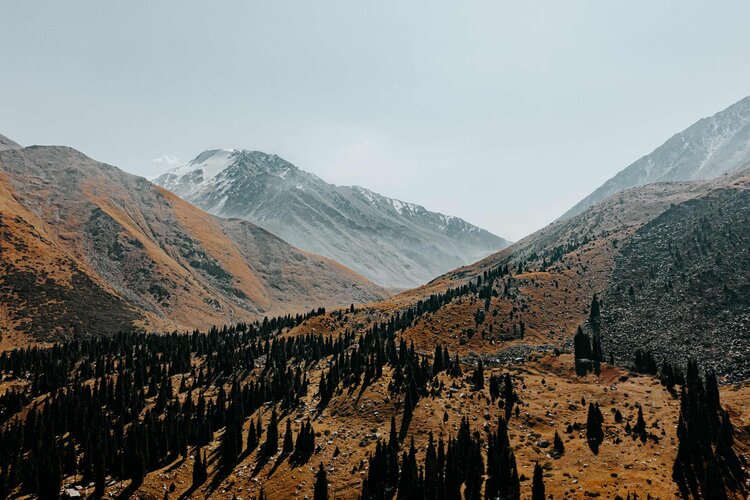
The best time of day to visit Terra Forest Meadow
As the name might suggest, most of the hike will take place in a dense forest. Therefore, I recommend visiting just after sunrise or late in the morning.
By doing so, you have all the time to relax at the summit, while also having an easier time hiking down to the parking lot.
Although I haven’t done the hike during the evening, I’m pretty sure it can be quite a struggle as with any hike.
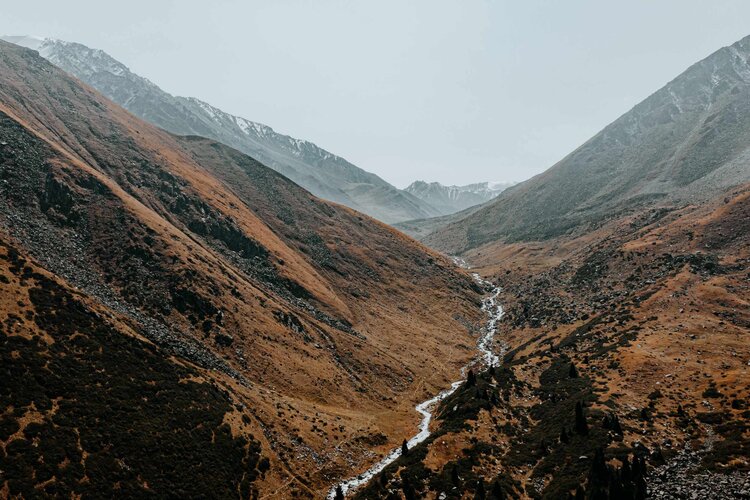
What to pack for the Terra Forest Meadow Trail
When going on a hike into the stunningly beautiful Almaty Mountains, it is good to bring some essentials that keep you safe, nourished and hydrated.
A reusable water bottle | It is no secret that hiking is a tough activity, and for that reason, it is pretty important to stay hydrated throughout any trail. That’s where the Grayl Geopress purifier comes in handy. This purification bottle is sustainable and convenient, and you can fill it up from almost every water source, all over the world.
Fruit and snacks | There are no restaurants or shops near the head of the trail, therefore I recommend bringing enough fruits, and a couple of (healthy) snacks, especially if you’re planning to chill away an afternoon in the beautiful mountains.
Hiking Cookware Kit | After your hike to the summit of Terra Forest Meadow, it is time to relax and enjoy a proper meal. We used the excellent cooking gear of Optimus to make a delicious, vegan buckwheat meal.
Hiking boots or a sturdy pair of trail runners | With a changing terrain it is wise to bring some sturdy shoes that are built to pass the test of hard conditions. While hiking boots will definitely provide more stability to the ankles, a good pair of trail runners with Vibram soles will also get the job done these days. For the last 3 years, I have been using the New Balance Hierro v7, a trail runner that offers all the features of a hiking boot, while still providing the looks of a trendy sneaker.
Stay safe in Kazakhstan | Travel insurance
Though Kazakhstan is safe for travellers, I always strive to sort out my travel insurance before arriving in a foreign country, and I highly advise anyone else to do the same.
Where we prefer that everything goes smoothly during our travels, something unfortunate can happen at any moment, whether it’s an injury or an accident on the road. When that happens, it is better to be safe than sorry.
Heymondo | Whether you’re going on a 3-week backpacking trip, or planning a long stay somewhere abroad, Heymondo has excellent insurance options either way – plus full COVID-19 coverage and a handy app with 24-hour medical assistance. Readers of WTSW receive 5% off any insurance policy, more information here.
Cheers!
I’ve been on this travel blogging journey since 2019.
If you appreciate what I do here, these are some ways you can support me.

12 Awesome things to do in Dubrovnik, Croatia
Long before I planned my adventurous trip through Croatia, I knew I one day had to visit the stunningly beautiful seaside town of Dubrovnik, and luckily it finally happened in the summer of 2020.
And, though Dubrovnik might be one of the most hyped destinations of the past few years, it one hundred per cent lived up to my sky-high expectations.
The mesmerising fortified town next to the Adriatic – internationally known as Kings Landing in HBO’s blockbuster series Game of Thrones, is without only one bit of doubt the most charming old town I ever set foot in.
In my opinion, Dubrovnik is best uncovered at a slow pace, by taking uncountable strolls through the characteristic streets of the old town, admiring its fascinating medieval interior.
And while the aged streets and laneways on its own are an excellent reason to visit Dubrovnik, there’s so much more that leaves travellers in awe.
The town has no shortage of incredible beaches, is home to an amazing viewpoint in Mount Srd, while also providing access to Lokrum Island, for those that prefer to escape the hustle and bustle of the city.
Here’s my traveller’s guide to Dubrovnik, including the best things to see and do, where to stay, when to visit, and how to get there, as well as essential information and tips that help you make the most out of your time here.
Where is Dubrovnik
Where to stay in Dubrovnik
In the last few years, Dubrovnik has seen a major increase in popularity.
As a result, you’ll find a great selection of excellent accommodations, including cosy Airbnb and guest houses, budget-friendly hostels, as well as high-end hotels for those looking for some extra comfort.
Guesthouse Rustico | Set in a 14th-century building, Guesthouse Rustico offers a cosy guesthouse just a stone’s throw from all the best things to do in Dubrovnik. On top of that, it is spacious, air-conditioned, as well as fairly budget-friendly.
Hostel Angelina Old Town | I stayed at Hostel Angelina Old Town and enjoyed the welcoming staff, comfortable beds, as well as spacious common area. Add the fact that you don’t have to break the bank, and Hostel Angelina Old Town is a winner. In addition, the staff regularly organizes fun activities for its guests.
Alternatively, use booking.com to find accommodations in Dubrovnik.
12 Incredible things to do in Dubrovnik, Croatia
1. Walk the Dubrovnik city walls
It is fair to say that a visit to Dubrovnik isn’t complete without a walk atop the town’s incredibly charming fortified city walls.
Though I was in awe straightaway when arriving in Dubrovnik’s ‘picture-perfect’ old town, I somehow intuitively decided to walk the historic city walls at the end of my trip.
And it was definitely worth the wait.
It was in fact, the absolute best possible way to end my time in Dubrovnik.
From the moment I made my entrance to the walls, I was welcomed by the most amazing views of Dubrovnik’s old town, with its aged white-washed buildings and iconic terracotta roofs – as well as a mesmerizing panoramic view over the shimmering Adriatic.
Since that point, the views only became better and better, with my absolute favourite views coming from the summit at Fort Minceta.
Do however take into account, that it takes roughly 2 hours to finish the 2-kilometre loop, and I recommend doing it in the late afternoon when the lighting is perfect for photography, and it’s significantly less warm.
Where | Dubrovnik City Walls
Opening hours | Daily 08:00 – 19:30, depending on the time of year
Cost | 200 HRK (€27,-) per person – includes entrance to Fort Lovrjenac
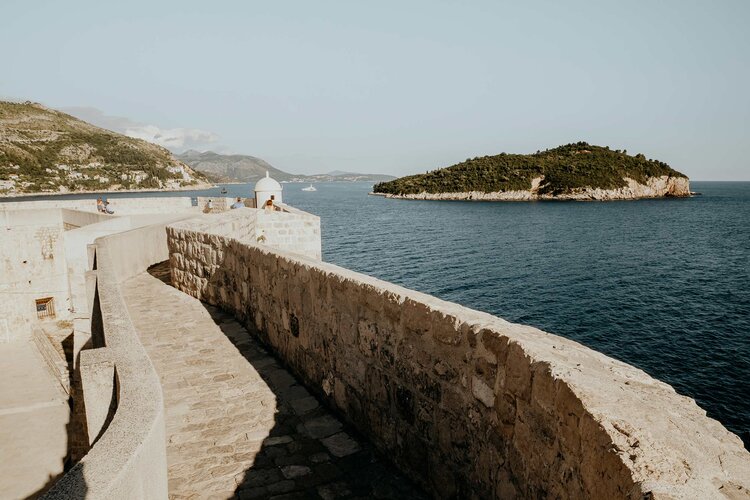
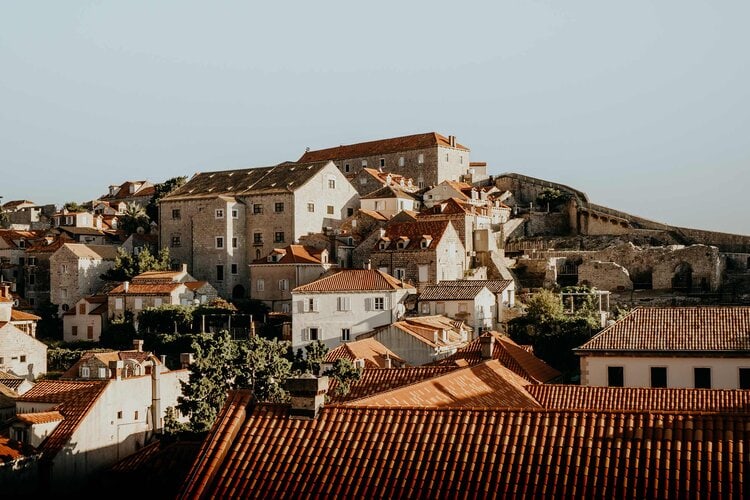
2. Admire Dubrovnik Old Town’s interior
Any trip to Dubrovnik should obviously involve at least a full day to explore the incredibly charming architecture and ‘picture-perfect’ laneways of Dubrovnik Old Town.
Seeing the time-worn streets of Dubrovnik Old Town for the first time is an unforgettable experience, and almost impossible to describe in words (I’m really trying my best, folks).
Dotted throughout these picturesque cobblestone streets, you’ll find a wide array of incredibly charming historic buildings, each more beautiful than the last.
That’s why I’d sincerely recommend taking the time to take it all in; it truly is one of the best things to do in Dubrovnik in my view.
Some of my favourite landmarks in Dubrovnik Old Town include:
Franciscan Monastery | Situated directly after the Pile gate, this enchanting 14th-century monastery houses a historic pharmacy, library and church.
Large Onofrio’s Fountain | Built in 1438 as part of a water supply system, the Large Onofrio’s Fountain is considered one of Dubrovnik’s most famous landmarks.
Jesuit staircase | An elegant Baroque staircase that connects the Jesuit Church of St. Ignatius with the lower-lying Gunduliceva Poljana square.
Rector’s Palace | Dating back to the 14th century, this palace used to serve as the seat of the Rector of the Republic of Ragusa.
Dubrovnik Clock Tower | This towering traditional clock tower was built in 1385 and is considered one of the most iconic buildings in Dubrovnik.
Church of St. Blaise | Built in 1715 in ornate baroque style, this church was dedicated to Dubrovnik’s patron saint.
Dominican Monastery | Situated in the eastern part of town, the impressive Dominican Monastery was built around the same time as the city walls.
Sponza Palace | Designed in Dubrovnik’s iconic Gothic-Renaissance style, Sponza Palace is one of the few buildings in the old town to survive the 1667 earthquake.
Yup, that’s a lot to process! Fortunately, the historic old town is pretty compact, making it the perfect size to navigate in a few hours.
Where | Dubrovnik Old Town
Recommended tour | This 1.5-hour walking tour of Dubrovnik old town includes most of the above-mentioned sites. Prices and availability here
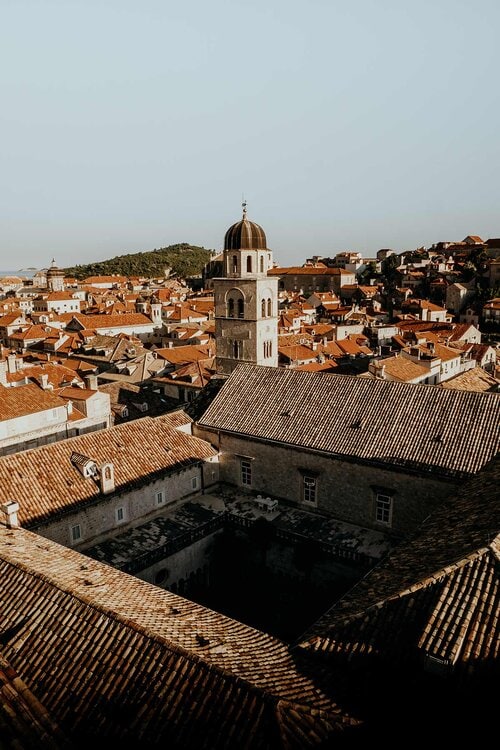
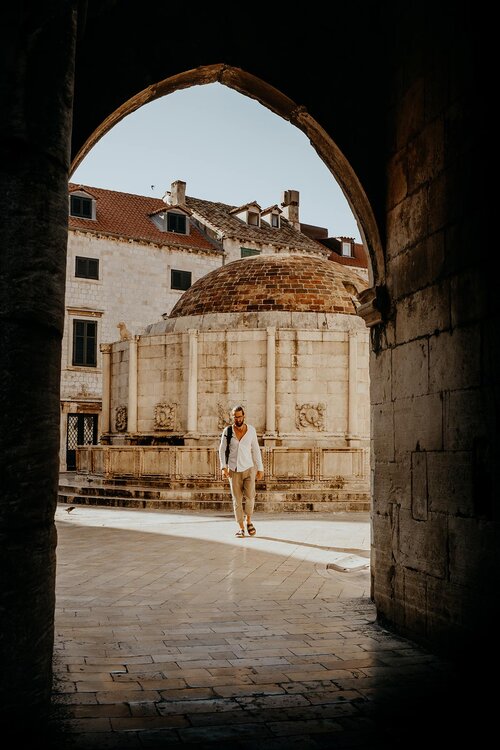
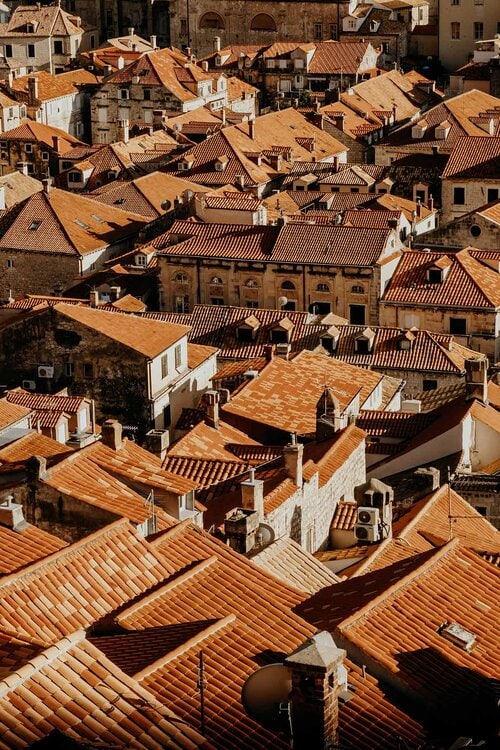
3. Sample Dubrovnik’s best gelato at Peppino’s
A refreshing scoop (or two) of gelato after a long day of exploring is one of my favourite things to do during my travels, and this was obviously also the case in Dubrovnik.
Long-time readers of Where the Souls Wander will know that I take it quite seriously to find the best-regarded gelato shops, meaning you’re pretty lucky to stumble upon this post.
Set in the historic laneways of Dubrovnik’s old town is Peppino’s, a small artisanal gelato boutique that is, without doubt, the best place to visit if you’re after a refreshing treat during the fierce summer heat.
Be warned though, Peppino’s serves a great variety of delicious, creamy gelato, making it quite the challenge to pick your flavours – I eventually ended up here two days in a row.
Lemon Pie premium and Raffaello are two of my favourite flavours, but if you’re after something more uncommon, try a scoop of the Mozart – marzipan, pistachio and nougat, or Jaffa cake.
Additionally, there is a variety of vegan, gluten-free, and organic options available – so you won’t have to worry about that.
Another great gelateria worth trying is Dolce Vita, situated just off the lively Stradun.
Where | Peppino’s Confectionary Lovers’ Club
Opening hours | Daily 11:00 – 22:00
Cost | 15 HRK (€2,10) per scoop

4. Join a Game of Thrones tour
If you’re familiar with HBO’s blockbuster series Game of Thrones, you’ll damn good know that Dubrovnik doubles as the capital of Westeros, Kings Landing.
As someone who admires the Game of Thrones series, walking among these extraordinary filming locations in real life, gave me deja vu moments on multiple occasions.
Though I enjoyed uncovering those filming locations on my own, I’d highly recommend joining a guided walking tour that takes you along the series best-known scenes and filming locations.
Some of the scenes and locations that you’ll visit on a 2-hour Game of Thrones tour include the Red Keep, Blackwater Bay, Cersei’s infamous ‘walk of shame’, as well as Kings Landing’s gate amongst plenty of others.
While the series has already come to an end (don’t worry, no spoilers here), joining a tour is still easily one of the most popular things to do in Dubrovnik.
So if you’re into Game of Thrones like I do, make sure you step in the footsteps of one of your favourite characters.
Cost | 150 HRK (€20,-) per person
Departure times | Daily 12:00 and 17:00
Recommended tour | This 2-hour Game of Thrones tour takes you along the most important scenes and filming locations in Dubrovnik. Prices and availability here
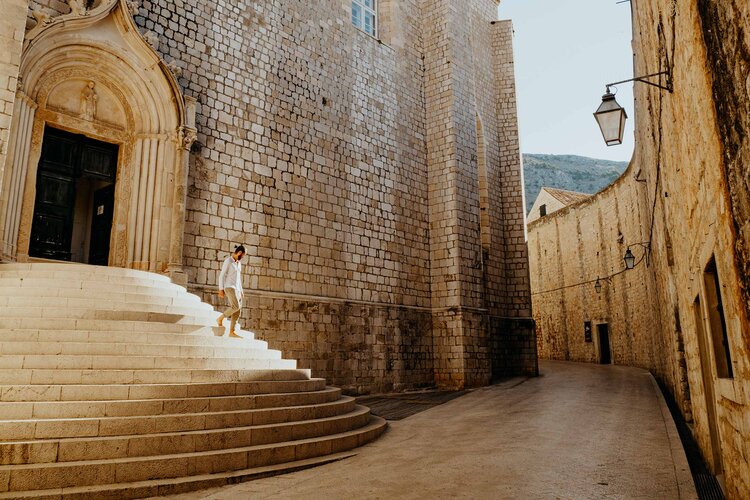
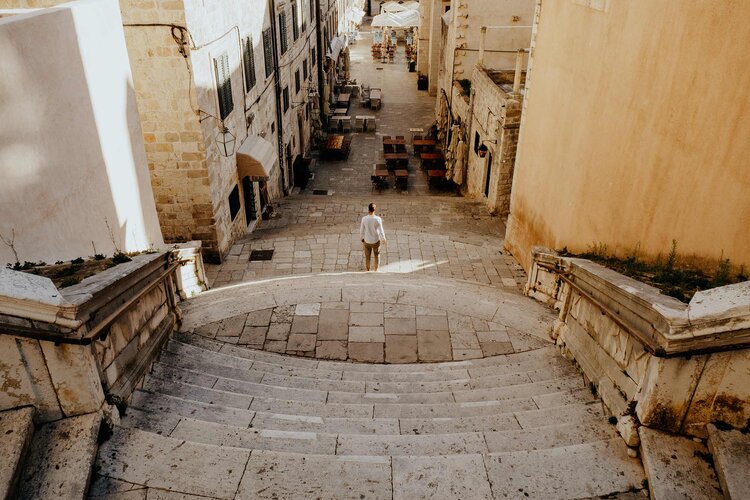
5. Walk the Stradun
It is inevitable that your first introduction to Dubrovnik includes a walk along the charming Stradun, which to me is the warmest possible welcome to the old town.
Running straight through Dubrovnik Old Town is Stradun, a charming street that is considered the beating heart of Dubrovnik, connecting Pile Gate in the west with Ploče gate in the east.
The broad 292-meter-long street is the heart of the action and probably where you’ll spend most of your time in Dubrovnik, as it leads to all the best things to see and do in Dubrovnik.
During the summer months though, the Stradun is packed with travellers, making it slightly harder to fully appreciate the wonderful street and its surrounding beauty.
But don’t worry, it takes only one turn to an adjacent laneway or time-worn stairway, and a whole different Dubrovnik unfolds – there truly is something magical about the old town.
Make sure to wander the streets with a camera in hand – you surely stumble upon authentic daily life around every corner.
Where | Stradun, Dubrovnik
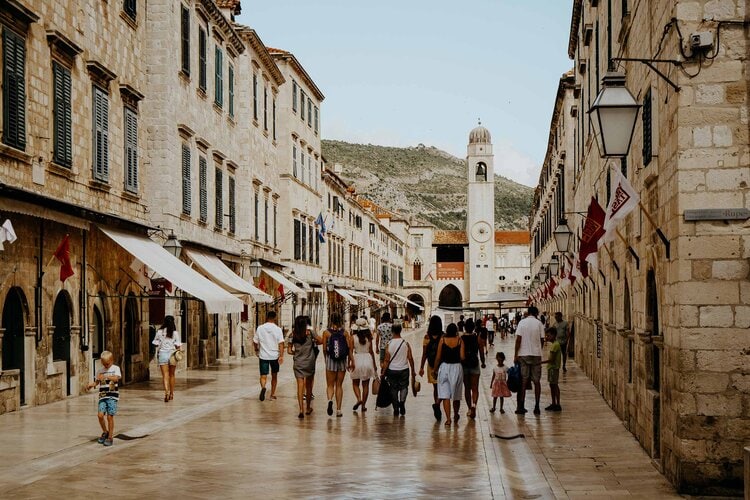
6. Admire the views from Mount Srd
Rising high above Dubrovnik Old Town, providing the most incredible views of the whole of Dubrovnik, as well as Lokrum in the distance is Mount Srd, an extraordinary vantage point to watch a Croatian sunset unfold.
But not so long ago, Mount Srd was home to one of the fiercest battles during the Homeland War, namely the siege of Dubrovnik.
And though I prefer telling you only about exciting destinations and experiences, I also feel a strong obligation to inform and educate on major historical events.
If you’re curious to learn about the history, make sure to head over to the Napoleonic Fort Imperial, which houses a permanent exhibition that is dedicated to the siege of Dubrovnik in the 90s.
Luckily, Mount Srd is now on the peaceful ground, and a visit is all about the mesmerizing panoramic view of Dubrovnik Old Town and the surrounding islands.
Every evening, locals and travellers alike gather here, as the sun slowly sinks into the Adriatic – and I must admit it, it’s one of the best travel experiences in Dubrovnik.
The easiest and quickest way to the summit of Mount Srd is by jumping aboard the Dubrovnik cable car (more on that later).
For adventurous-minded people (like me), or those on a budget, take a moderate hike that takes you to the summit in roughly an hour, depending on your physical condition.
Where | Mount Srd, Dubrovnik
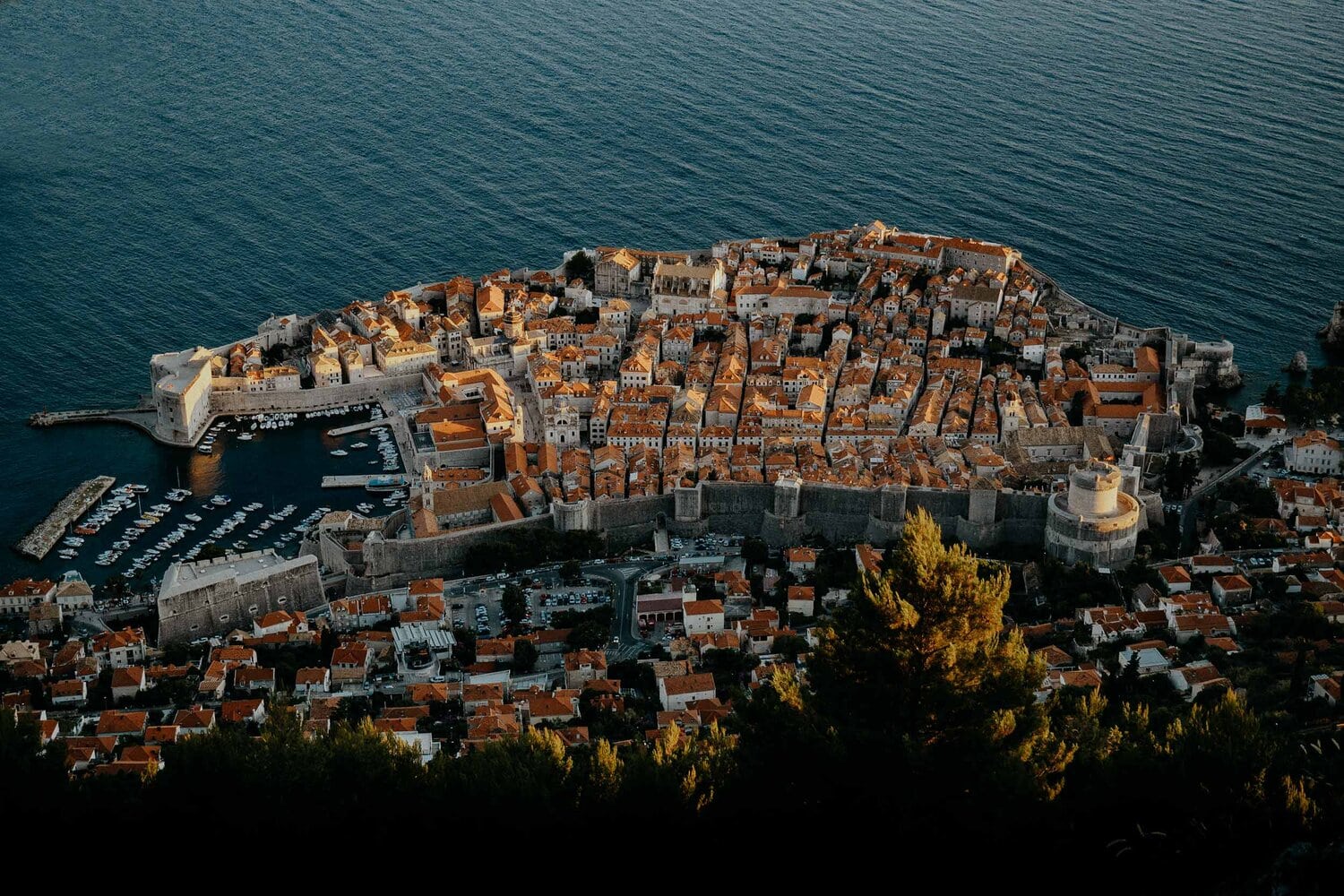
7. Ride the Dubrovnik cable car
The best viewpoint to experience a sunset in Dubrovnik is without question on Mount Srd, and a ride on Dubrovnik’s cable car is by far the easiest way to get there, making it an excellent option for those on a tight time schedule.
Built back in 1969 to transfer passengers from Dubrovnik Old Town to the summit of Mount Srd, the cable car is now an indispensable part of the city, transferring nearly a thousand visitors daily.
Though the approximately 778-meter journey takes only 5 minutes to complete, the exceptional panoramic views from the cable car are worth every penny of the somewhat expensive ticket.
On top of Mount Srd, you’ll discover two panoramic terraces that both house a selection of telescopes and on a clear day, you can see up to 60 kilometres in the distance.
Tickets are easy to obtain at both stations, and I would highly recommend buying a one-way ticket in the first instance. By doing so, you can opt for the easy hike down if you change your mind on the top.
Where | Dubrovnik Cable Car, Mount Srđ
Opening hours | Daily 09:00 – 00:00
Cost | One way 70 HRK (€9,30) | Return 140 HRK (€18,60)
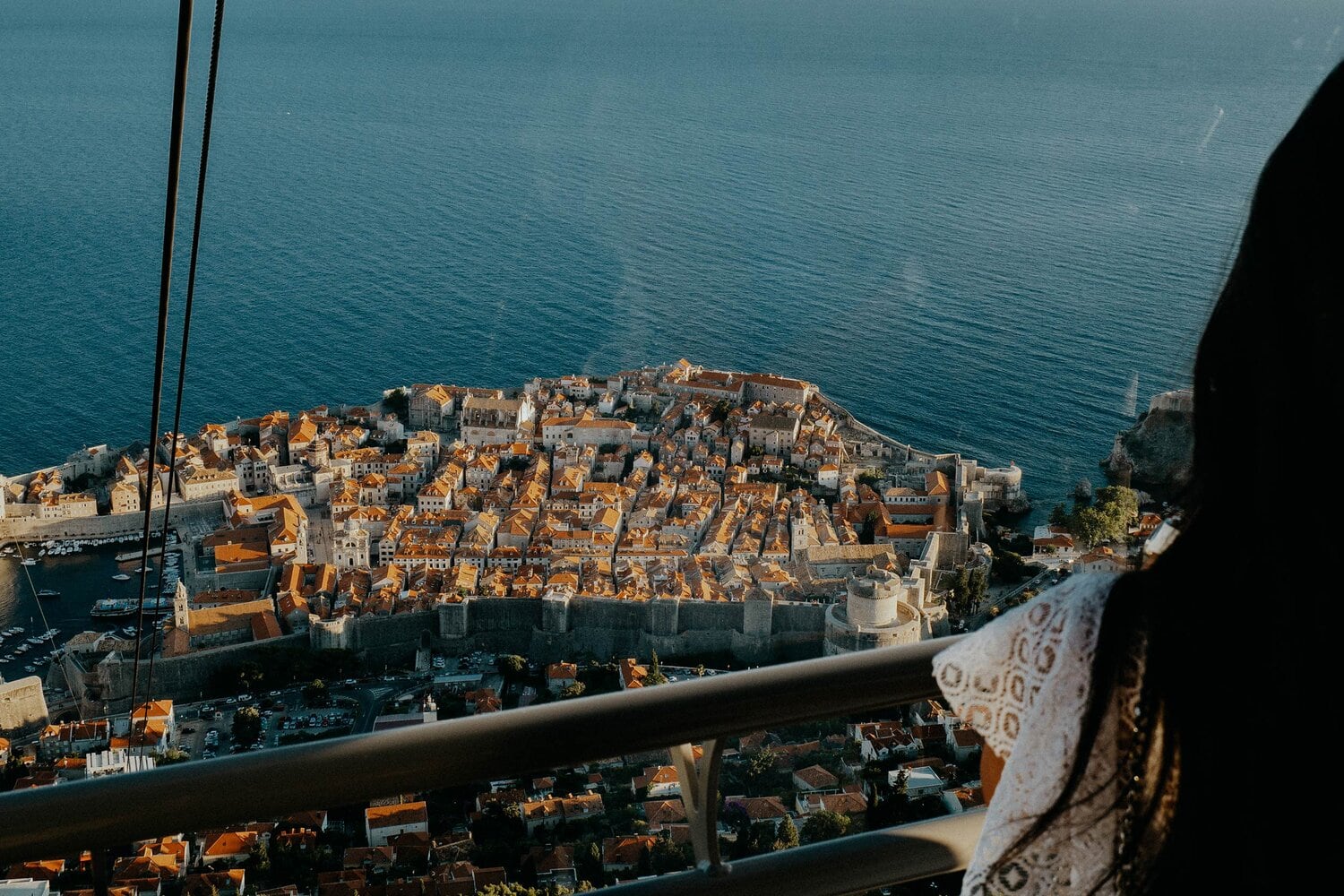
8. Spend a day chilling and swimming at Lokrum Island
Only a 10-minute ferry ride from Dubrovnik’s Old Harbour lies Lokrum Island, a stunningly beautiful island that makes a perfect place for those who need a little break from the crowds in Dubrovnik.
Lokrum Island is a wonderful place to visit for an afternoon of swimming and relaxing, and accordingly extremely popular with travellers and locals alike.
Not only does it provide a lush forest of black ash pines and olive trees, and incredible rocky beaches, but it also houses an ancient Benedictine Monastery, an impressive botanical garden, as well as a small saltwater lake known as the Dead Sea.
Those interested in Game of Thrones should know that the island of Lokrum was used as the city of Qarth, and at present, the medieval Benedictine Monastery is home to the series legendary Iron Throne.
Where | Lokrum island, Dubrovnik
Cost | 150 HRK (€20,-) for a return ticket – ferry departing at Dubrovnik Old Port
Departure time | Leaves every 15 minutes
Bring | Swimwear, a towel and a good book
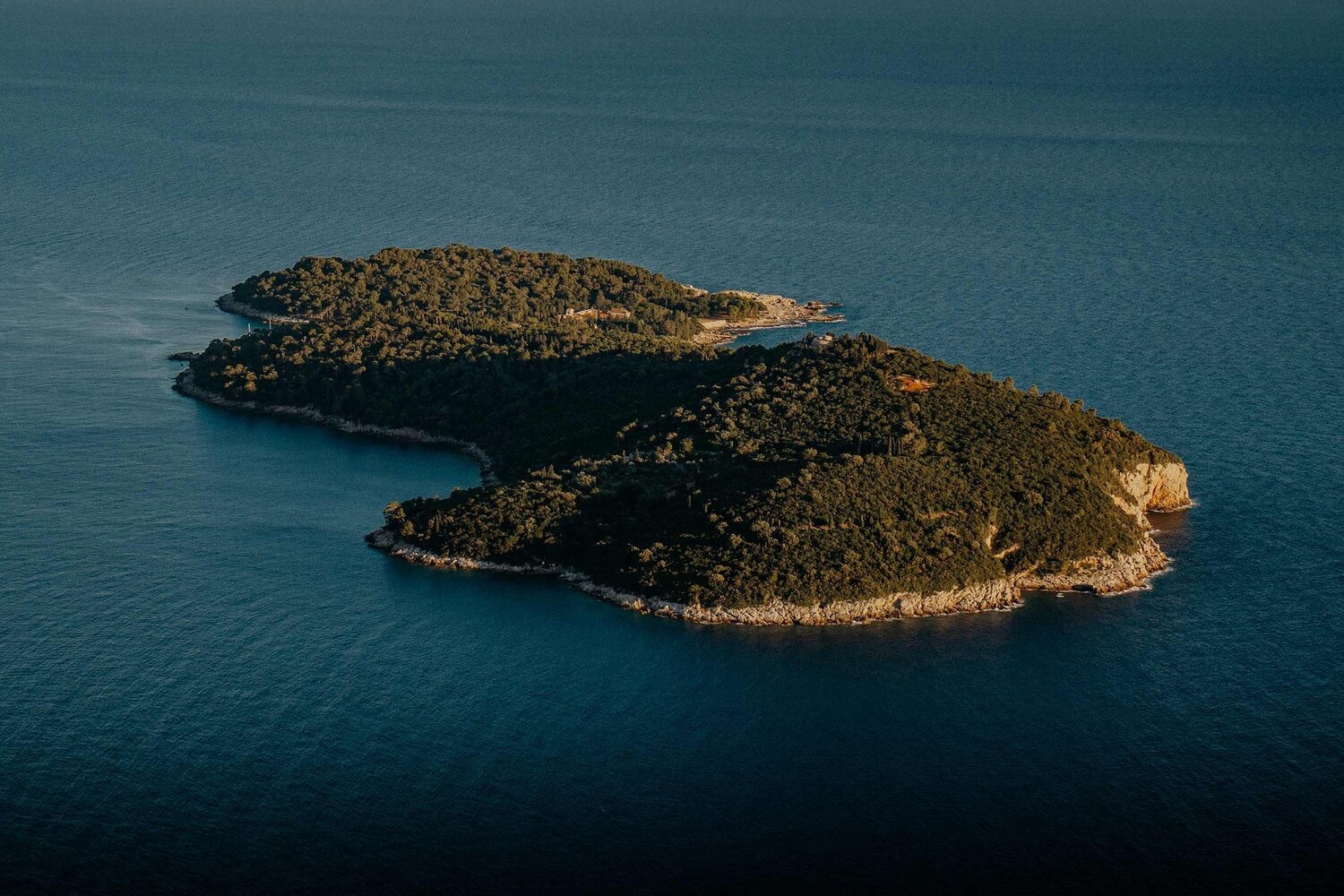
9. Kayak around Dubrovnik
One of the best activities in Dubrovnik includes an adventurous Kayak tour that takes you around Dubrovnik’s mesmerising walls, as well as beautiful Lokrum Island which is dotted just off its coast.
Those looking for a quick adventure, away from the packed streets of the old town will have an excellent time exploring the stunning highlights that are found along the Adriatic Coast.
The relaxing, yet breathtaking journey takes you to a handful of impressive sites, including the stunning Betina Cave, and Lokrum Island, while also providing a unique seaside perspective of Dubrovnik and its towering city walls.
On top of that, you’ll have the opportunity to go swimming, snorkelling, cliff jumping, or just take it easy on the only beach in Dubrovnik that is solely accessed from the water.
As wonderful as it is exploring the area during the day, it is even more beautiful if you plan to do a Kayak tour during the golden hour – it’s simply a once-in-a-lifetime experience.
I am text block. Click edit button to change this text. Lorem ipsum dolor sit amet, consectetur adipiscing elit. Ut elit tellus, luctus nec ullamcorper mattis, pulvinar dapibus leo.
Where | Beach Bokar, Dubrovnik
Starting times | Daily 10:00, 13:00, and sunset tours at 15:30
Cost | 180 HRK (€24,-) and 260 HRK (€34,-) during sunset
Recommended tour | This 3-hour Sea Kayaking tour brings you along Dubrovnik’s marvellous coastline as well as Lokrum Island. Prices and availability here
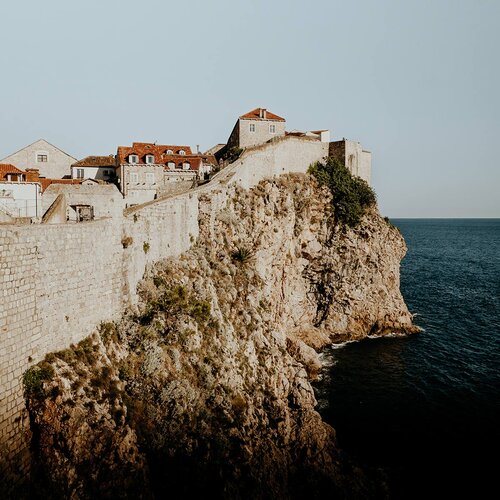
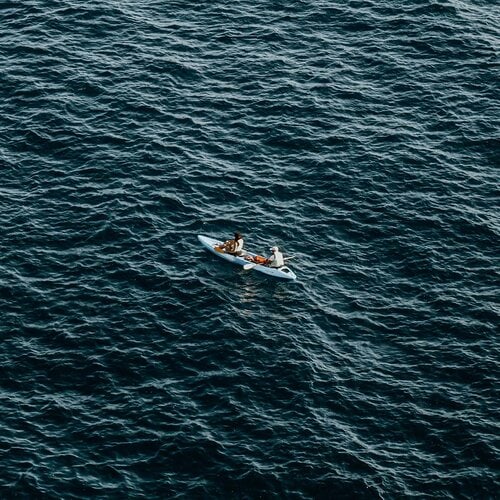
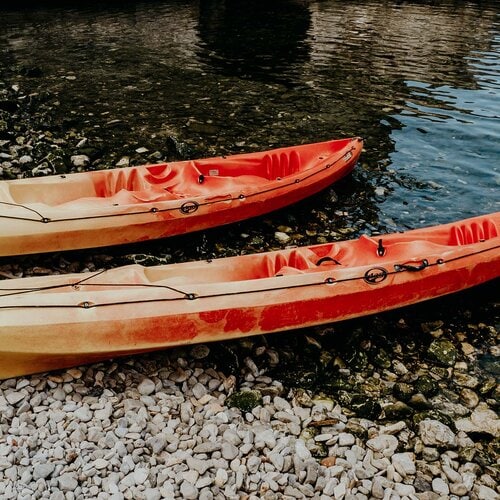
10. Take in the sunset from Bard, a unique cliffside bar
Perched on the rocky cliffs below the city walls lies Bard, a panoramic bar that is unquestionably one of the most unique places to sample a few sunset drinks in Dubrovnik.
Taking its name from the characterizing entrance (Buza meaning ‘hole in the wall’), Bard Buza bar is entered by climbing through a little hole in the side of Dubrovnik’s aged city walls.
As soon as you enter the iconic bar, you’ll be welcomed by incredible panoramic views of the glistering Adriatic, Lokrum island in the distance, as well as the encircling city walls.
Though this place really is fascinating at every time of day, it gets super crowded during the golden hour, when both travellers and locals flock here to enjoy a refreshing drink while watching the world go by. For that reason, I recommend stopping by in the early afternoon.
As you would expect, drinks at a unique location as Bard Buza Bar, are significantly higher priced than elsewhere in Dubrovnik – but trust me, the stunning setting makes up for a lot!
For those keen to take a refreshing dip in the Adriatic, there are a number of ladders providing easy access to the water.
Where | Bard cliff bar, Dubrovnik
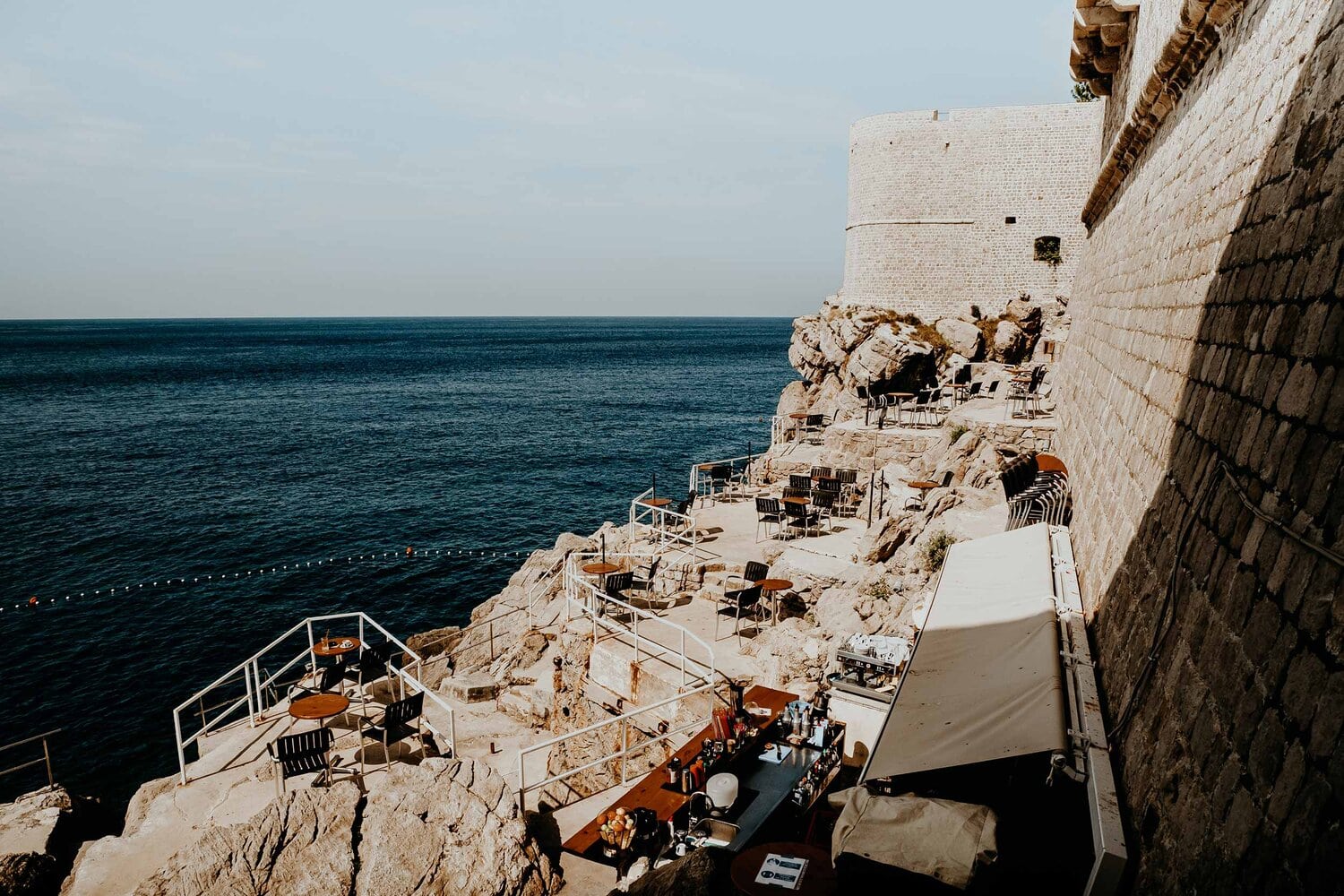
11. Visit Fort Lovrijenac
Nestled on a picturesque cliff just west of Dubrovnik Old Town is Fort Lovrijenac, an impressive medieval stronghold that played a major role in the resistance to Venetian rule.
If the brave people of Dubrovnik hadn’t stood their ground in the 11th century, the Venetians would probably have built a fortress of their own at exactly the same spot, resulting in that they would have kept Dubrovnik under their power.
Sadly, a large part of the fort’s interior was destroyed by reason of an earthquake that hit Dubrovnik in 1667. Fortunately, it didn’t take long before it was rebuilt to the fortress we visit at present.
Something noticeable is the famous inscription above the entrance, saying: “Non Bene Pro Toto Libertas Venditur Auro” (“Freedom cannot be sold for all the gold of the world”).
Although there isn’t much else to see inside the fortress, I wouldn’t recommend skipping it, and that’s for two bloody good reasons.
May it be the stunning view of the whole of Dubrovnik, or its recent role as the Red Keep in Game of Thrones, a visit to the fortress is simply one of the best things to do in Dubrovnik.
Where | Lovrijenac Fort, Dubrovnik
Opening hours | Daily 08:00 – 17:00
Cost | 50 HRK (€6,60) per person – entrance is included in a Dubrovnik City Walls ticket
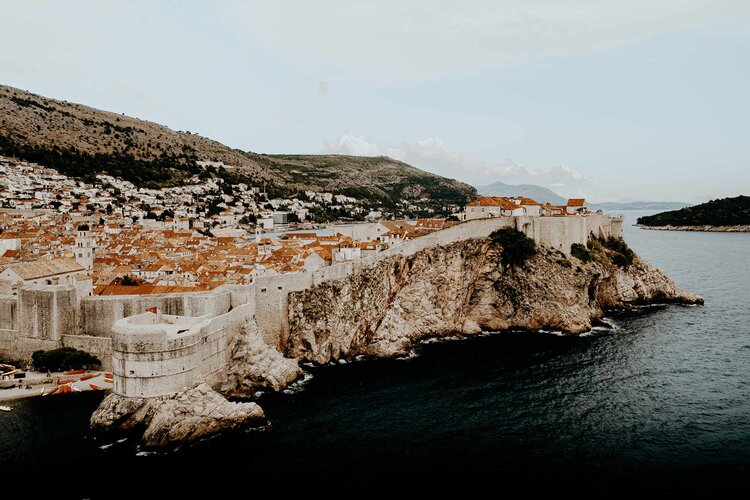
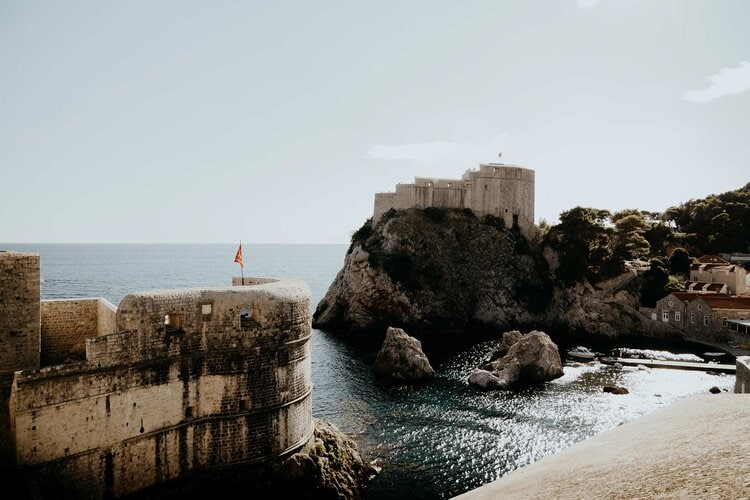
12. Hit up the Dubrovnik beaches
Whilst Dubrovnik is best known for its many historical sites, you’ll be surprised by the wide variety of idyllic stretches of sandy and pebble beaches, which are excellent for a lazy day of sunbathing and swimming.
After my first 2 days spent exploring the many interesting places that Dubrovnik has to offer, I felt a strong need to take a day off, laying my towel next to the stunning Adriatic.
Fortunately, I didn’t have to look far to visit one of Dubrovnik’s excellent beaches.
Some of my favourite Dubrovnik beaches include:
Bellevue Beach | Situated within an easy walk of Dubrovnik Old Town lies Bellevue Beach, a pebbly cove that is encircled by a set of towering cliffs, providing an excellent platform for those interested in cliff jumping.
Although it is one of the most popular beaches in Dubrovnik, it felt relatively quiet compared to other beaches in the area, making it my favourite beach to chill away a lazy afternoon.
Banj Beach | Easily Dubrovnik’s most popular beach, and therefore also the most overrun beach.
And though this beach is far from my personal preferences, I fully understand why it earned its excellent reputation.
Banj Beach is situated closest to Dubrovnik Old Town and provides the most stunning view of the city walls in the distance.
On top of that, it houses a trendy beach club, pumping vibrant techno beats through its speakers, as well as offering sun beds & parasols for hire.
Beach Sulic | Hidden between Fort Lovrijenac and Gradac Park is Beach Šulić, a picturesque cove that is considered to be one of the oldest swimming spots in Dubrovnik.
This small stretch of beach is mostly known by locals and offers the perfect circumstances to take a quick refreshing dip in the clear shallow waters of the Adriatic, without the crowds being around. In addition, there is also a small bar, meaning you don’t have to go far for a refreshing drink or ice cream.
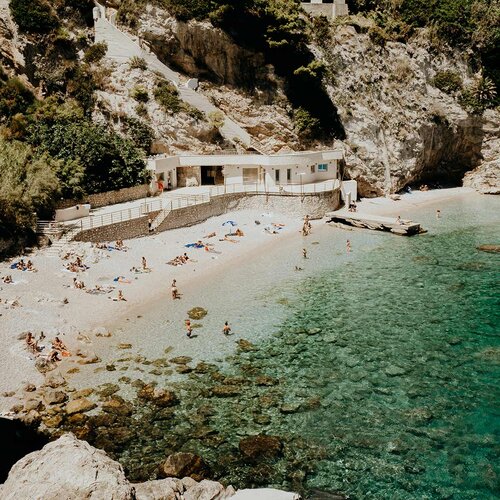
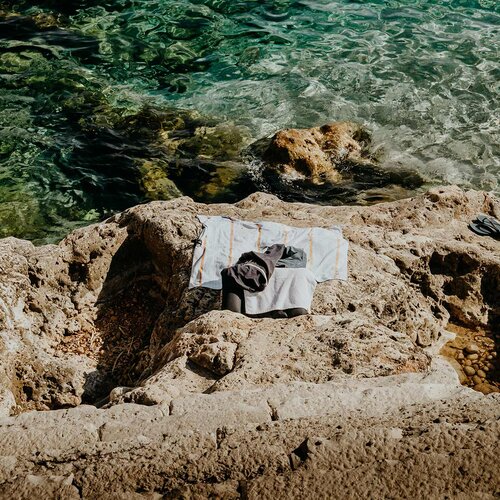
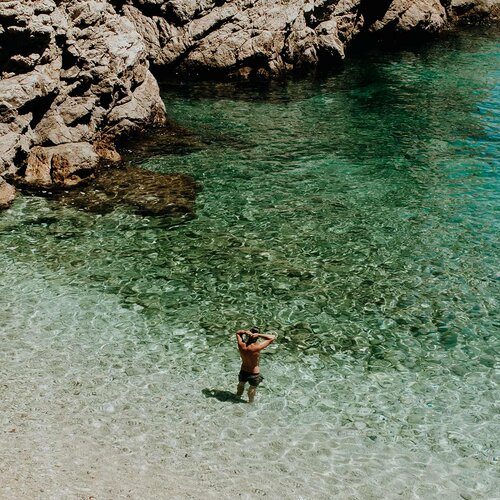
Things to do in Dubrovnik | The essentials
The best time to visit Dubrovnik
A word of warning – Dubrovnik is massively overrun by both locals and travellers during the summer months. For that reason alone, I think it’s better to avoid visiting Dubrovnik during the peak summer months of May to August.
To beat the crowds, plan to visit Dubrovnik in September or October, when the temperature is still very pleasant, which provides excellent circumstances to explore the old town and its charming surroundings.
And though the summer heat slowly fades, the Adriatic is still warm enough to take a dip.
One extra benefit of travelling during these months is the fact that the prices are slightly lower than during the peak months.
My favourite tours & activities in and around Dubrovnik
If you’re keen to join an organized tour to discover Dubrovnik and surrounds, here are some of my personal favourites.
How to get to Dubrovnik
By plane | Dubrovnik Airport, situated about 40 minutes from the city, hosts both European and international flights from all over the world, meaning you most likely start your Croatia itinerary in Dubrovnik.
For flights to Dubrovnik, I would recommend Skyscanner. Their website is user-friendly, holds a large variety of airlines, and grants the possibility to find good rates.
From the airport, it’s easy to take a shuttle bus in the direction of the Main Bus Station in Gruž Port. The bus leaves every 30 minutes after flights arrive, and a one-way ticket will cost you around 55 HRK (€7,50).
Alternatively, Tivat Airport in Montenegro is the closest major airport, just across the border, which offers plenty of affordable flights, especially from European destinations.
From Tivat, the most convenient option is a private transfer from Tivat Airport to Dubrovnik – make sure you check out Montenegro Limo, as they take in scenic coastal stops along the way for free.
By car | Croatia’s beautiful coastline makes a perfect destination for an adventurous road trip, and if you’re looking for the best places in the country, renting a car is easily the best thing you could do.
If you’re planning to rent a car in Croatia, you’ll have all the freedom to visit Dubrovnik – plus it’s significantly easier to do day trips.
For car rental in Croatia, I would recommend checking out Rentalcars.com. They offer excellent service, additional insurance, and a broad selection of cars, all at an affordable price.
One side note though, parking in the old town is extremely expensive, so it’s better to either find accommodation with private parking or park just outside the old town.
That said, when planning to drive to Dubrovnik with a rental car, check if you’re allowed to cross the border. Getting from Split to Dubrovnik requires a short drive through Bosnia and Herzegovina.
By bus | Travelling around Croatia by bus is extremely straightforward, and easily one of my favourite forms of transport.
In terms of the most comfortable options, I came to the conclusion that my favourite was Flixbus, an excellent company that services the major cities in Croatia, as well as a great selection of cities in the neighbouring countries.
If you’re after a visit to Dubrovnik by bus, I’d recommend booking your tickets in advance, especially during the peak months.
For booking tickets online, availability and travel departures & information, visit the Flixbus website.
By ferry | If you started your Croatia itinerary in Split, and ended up on one of the beautiful islands, the best option to get to Dubrovnik is by taking a ferry.
The company that operates between the islands and Dubrovnik is Krilo and is transferring foot passengers only.
Krilo operates from Hvar or Korcula to Dubrovnik once daily and offers excellent service, affordable prices and is strictly on time.
I would recommend booking your tickets in advance, especially during the peak summer months – this can be done at the ticket booth in the harbour or online.
Safety in Croatia | Travel insurance
While Croatia is completely safe for travellers, I always aim to enter a foreign country with my travel insurance sorted out, and I highly advise anyone else to do the same.
Where we prefer to assume that everything runs smoothly during our travels, the reality is often that something can go wrong at any given moment – when that happens, it is better to be safe than sorry.
Heymondo | Whether you’re going on a 3-week backpacking trip, or planning a long stay somewhere abroad, Heymondo has excellent insurance options either way – plus full COVID-19 coverage and a handy app with 24-hour medical assistance. Readers of WTSW receive 5% off any insurance policy, more information here.
Cheers!
I’ve been on this travel blogging journey since 2019.
If you appreciate what I do here, these are some ways you can support me.



